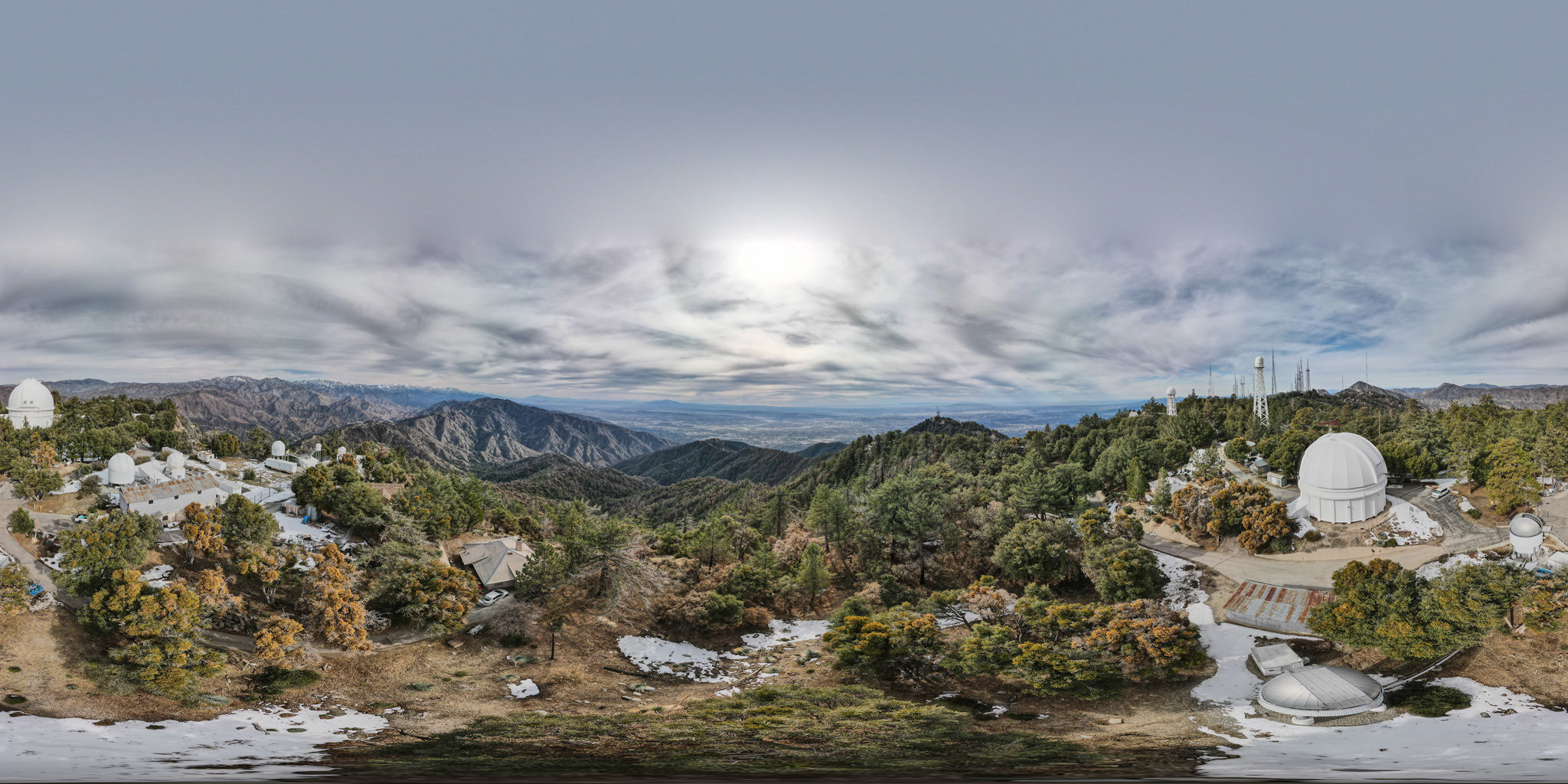
The CHARA Array:
updates and new undertakings
nic scott
Telescope Systems Scientist








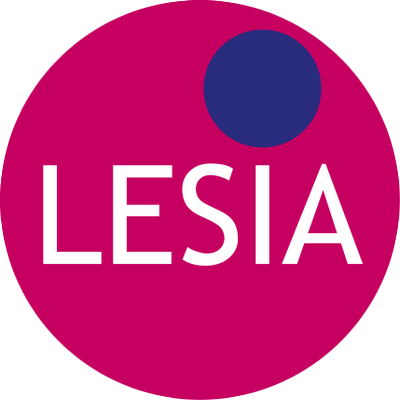




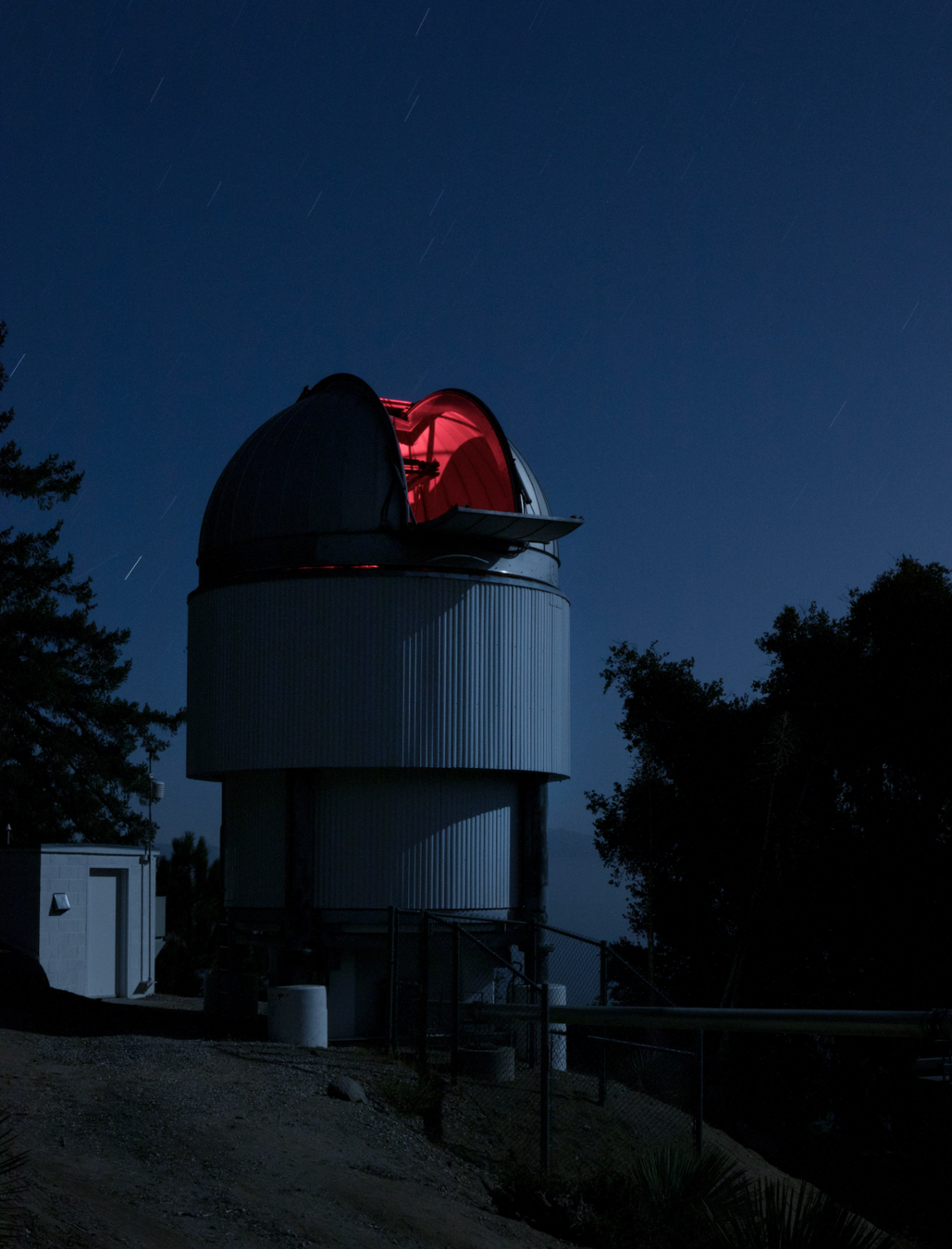
review of the array

The Array is capable of resolving details as small as 200 micro-arcseconds, equivalent to the angular size of a nickel (0,20€) coin seen from a distance of 10,000 miles (16,000 km).

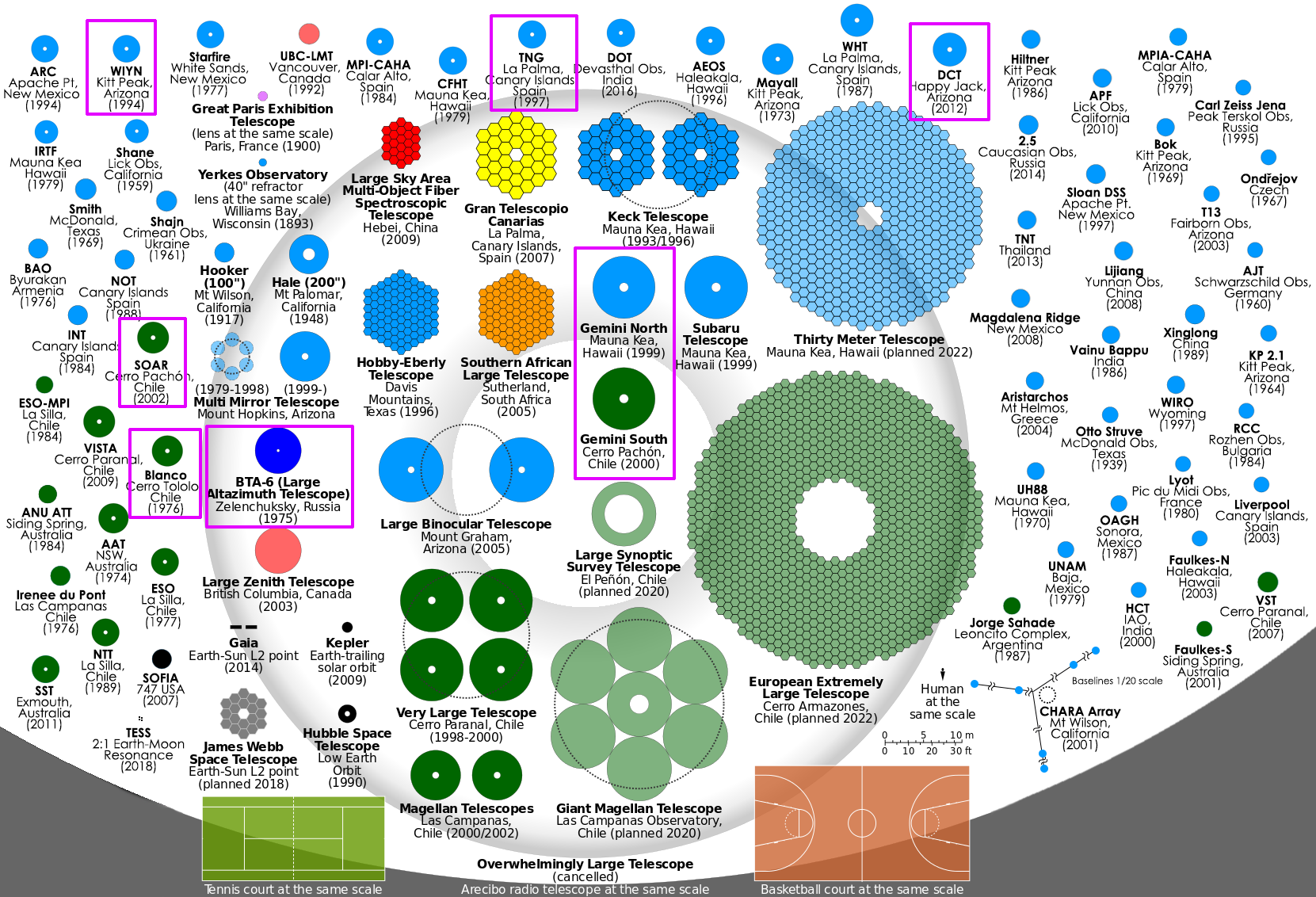
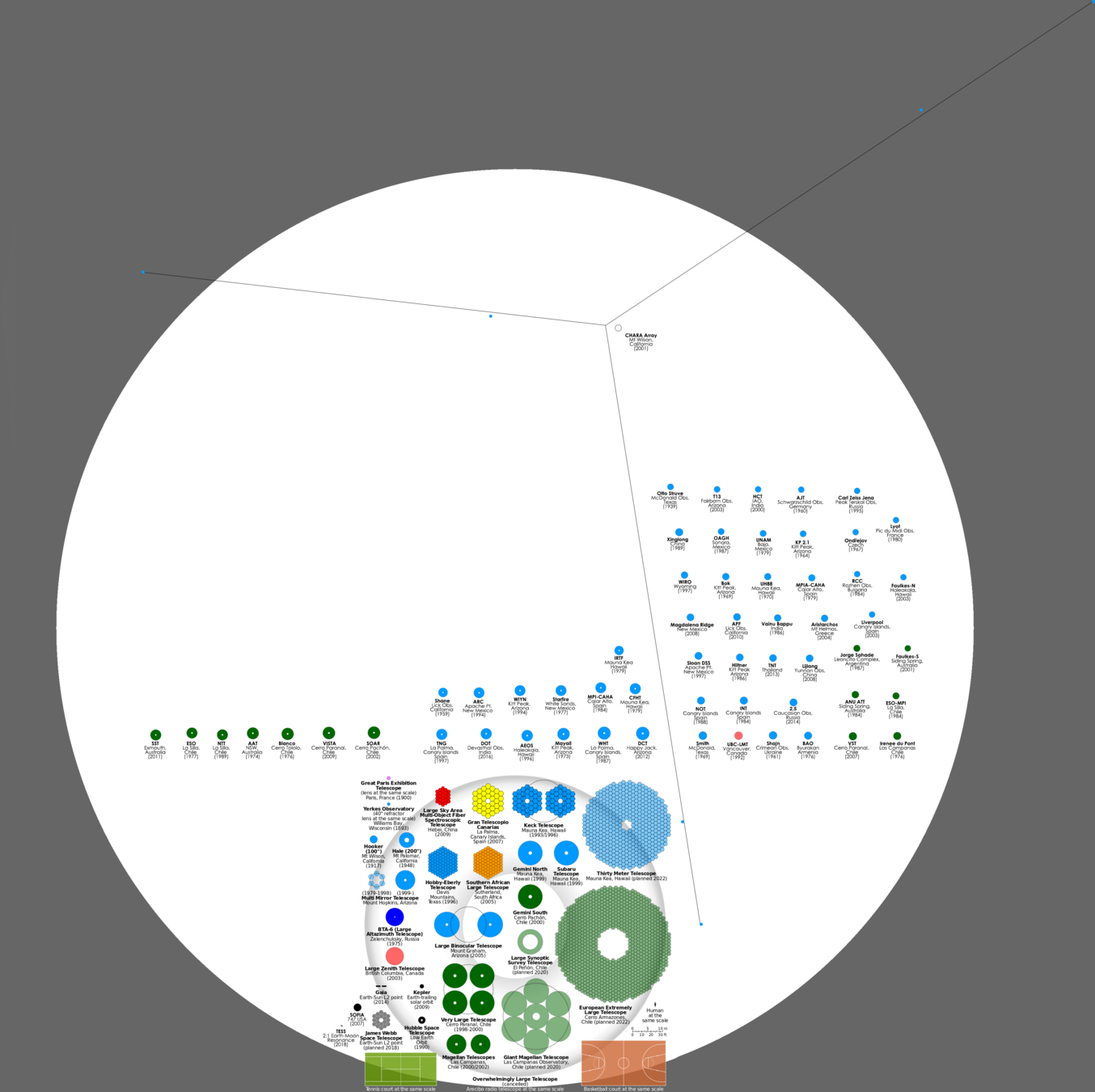
Fizeau & Michelson
Brown & Twiss
1850s
1890s
1920 - measured Betelgeuse (with Pease)
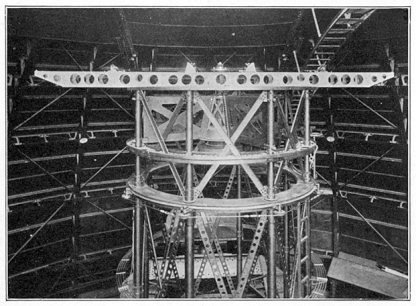
1956 - HBT effect, correlation b/t coherent photons
Intensity interferometry
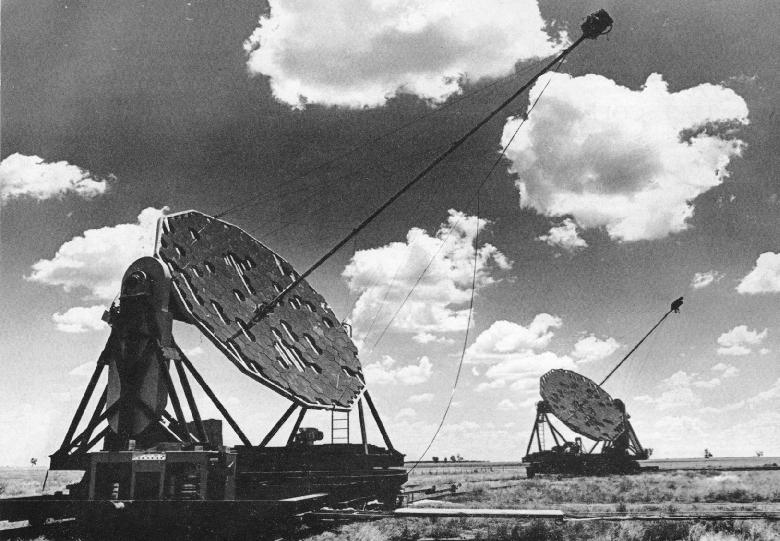

Preliminary planning: 1985
engineering studies: 1992
Georgia State $5.6-million 5-telescope array: 1994
NSF capital investment to nearly $6.3-million.
University has provided matching funds in a similar amount.
Ground broken: 1996
Keck Foundation $1.5-million to add a 6th telescope: 1998
first fringes: 1999
the Array achieved starlight fringes on its 331-meter baseline, the longest baseline (by a factor of three) ever achieved by an optical interferometer: 2000
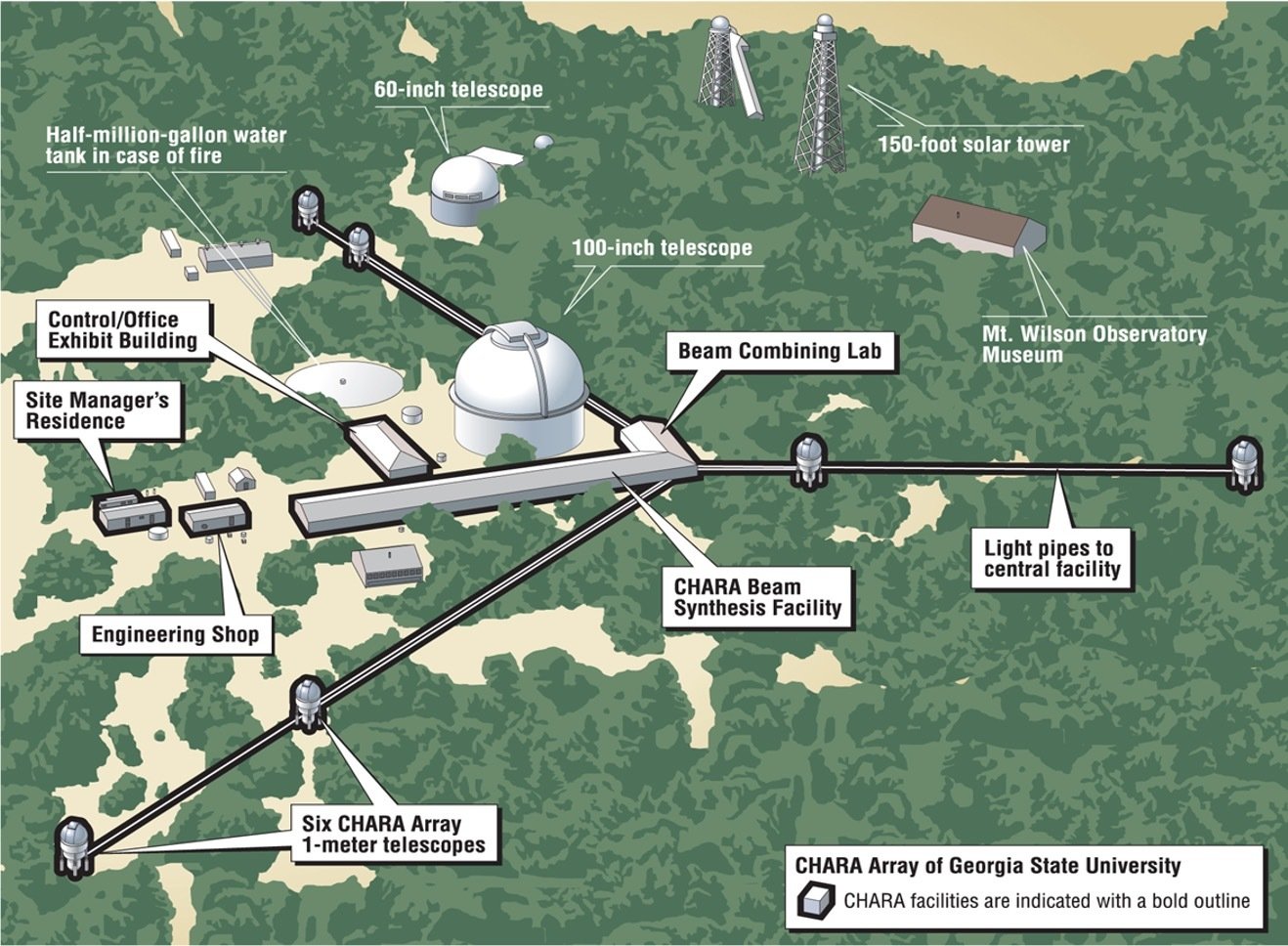
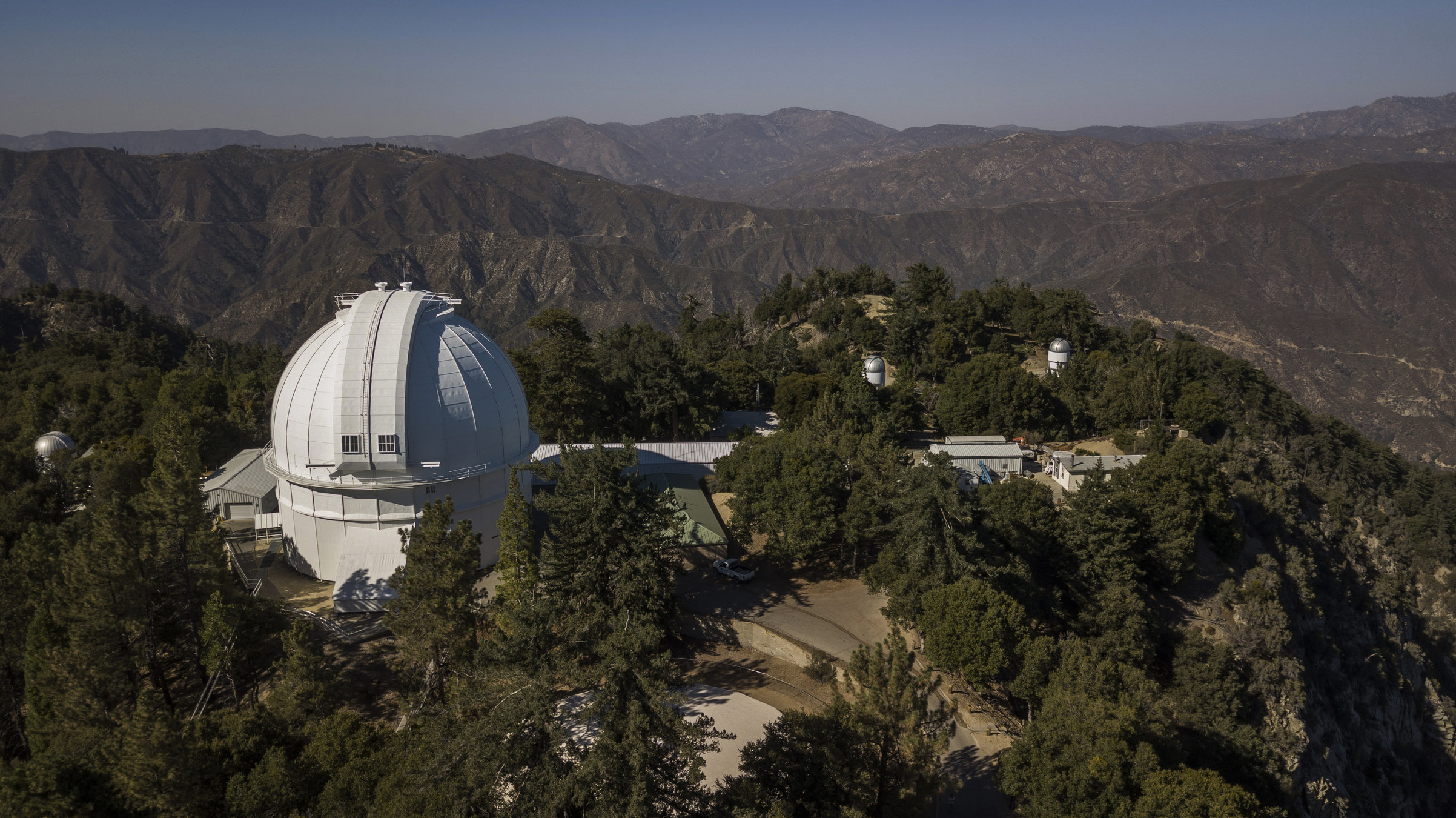
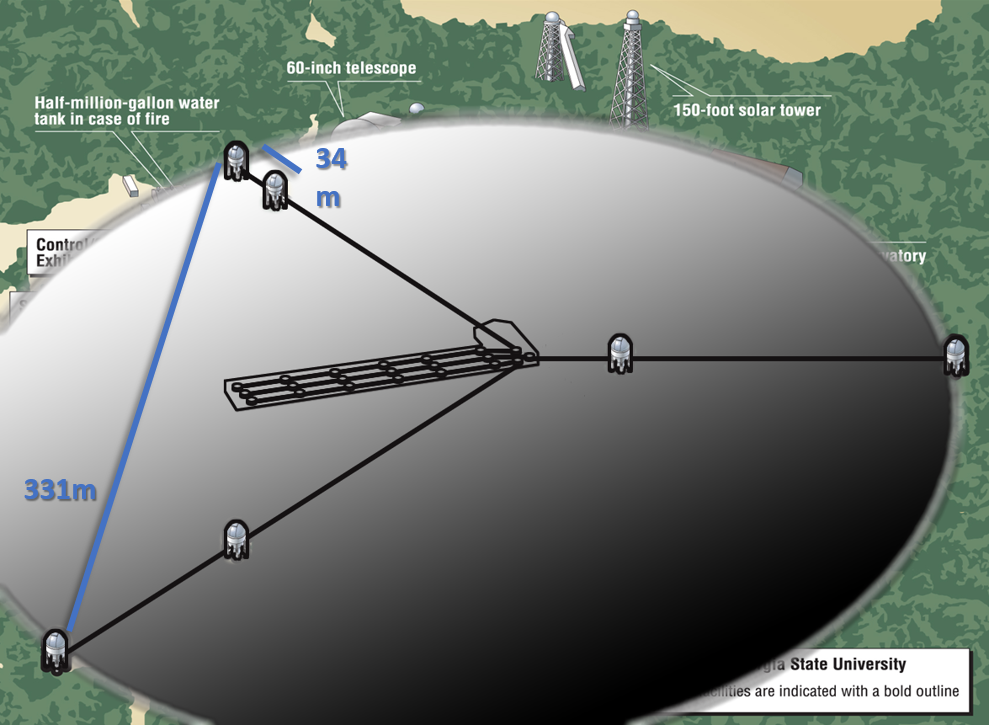
- 0.20 mas at R (650 nm)
- 0.52 mas at H (1.67 μm)
- 0.66 mas at K (2.13 μm)
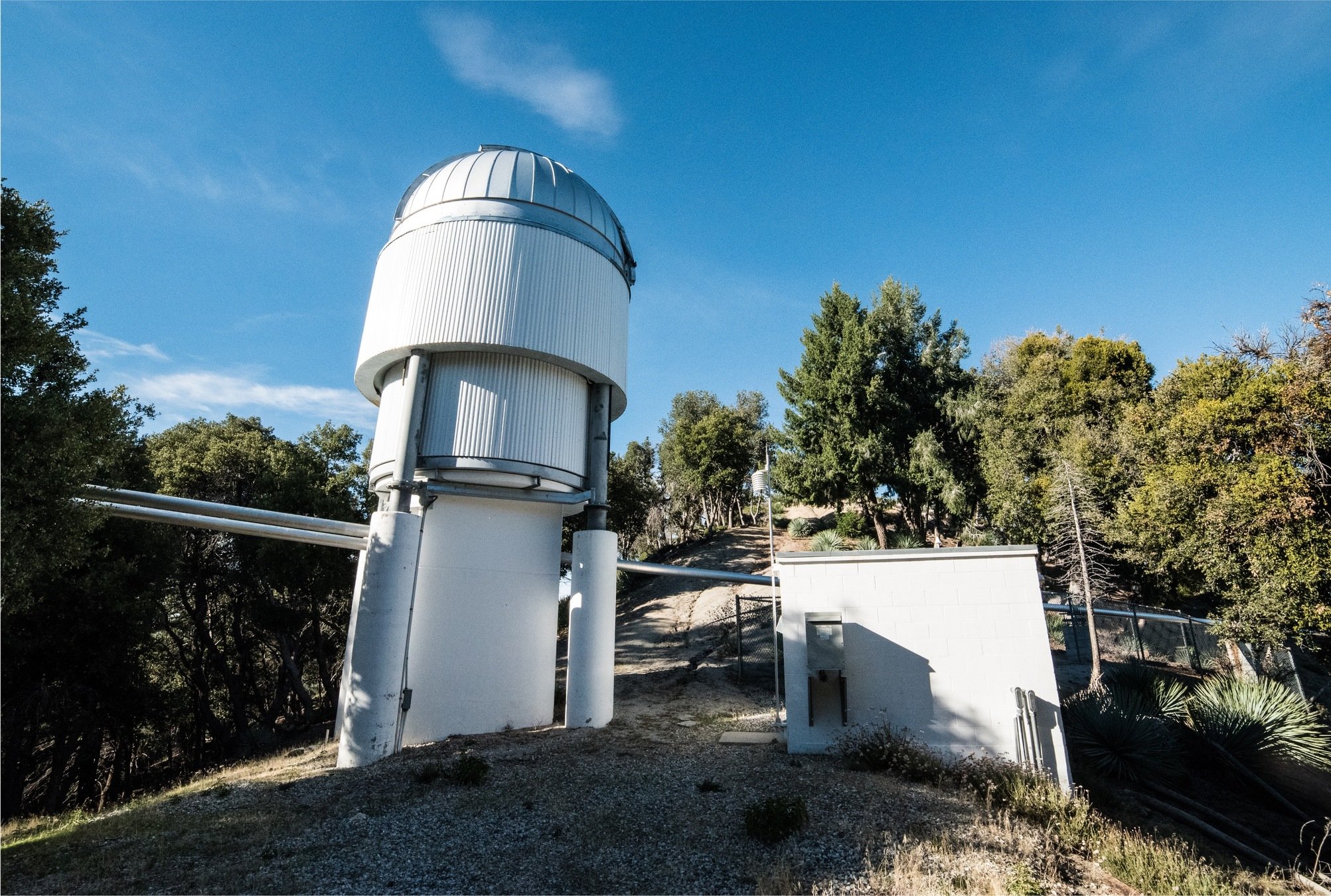
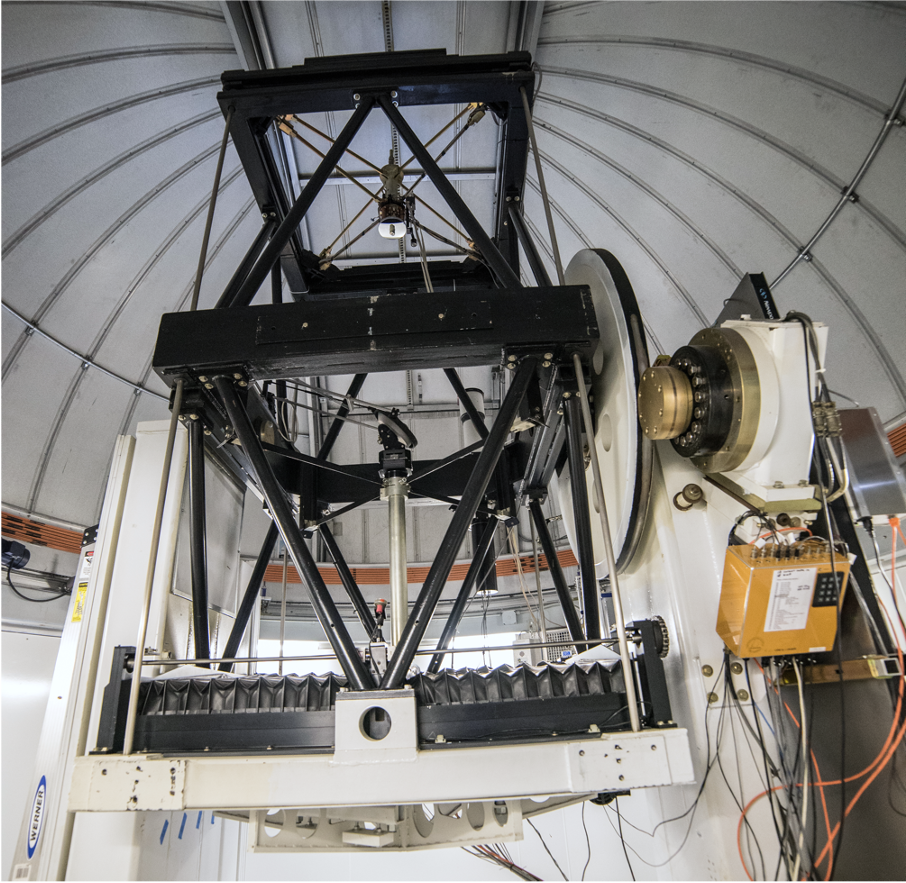

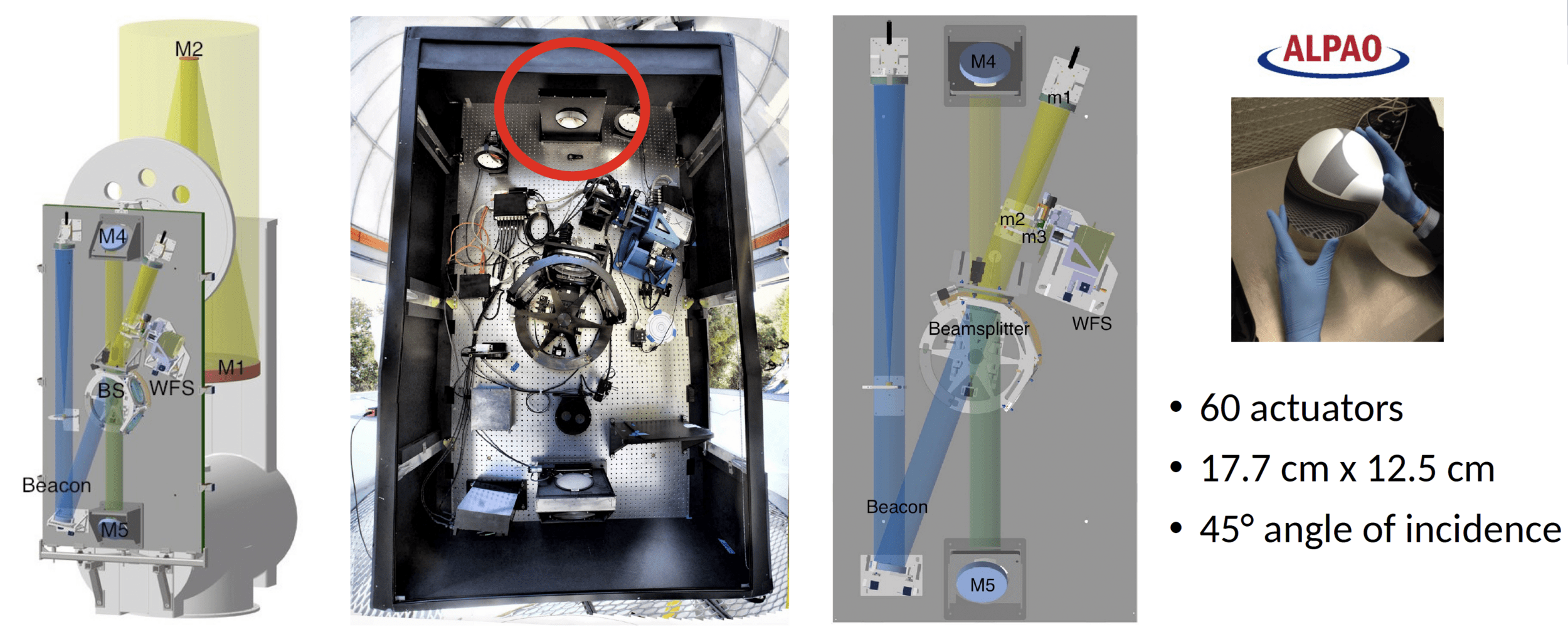
TelAO

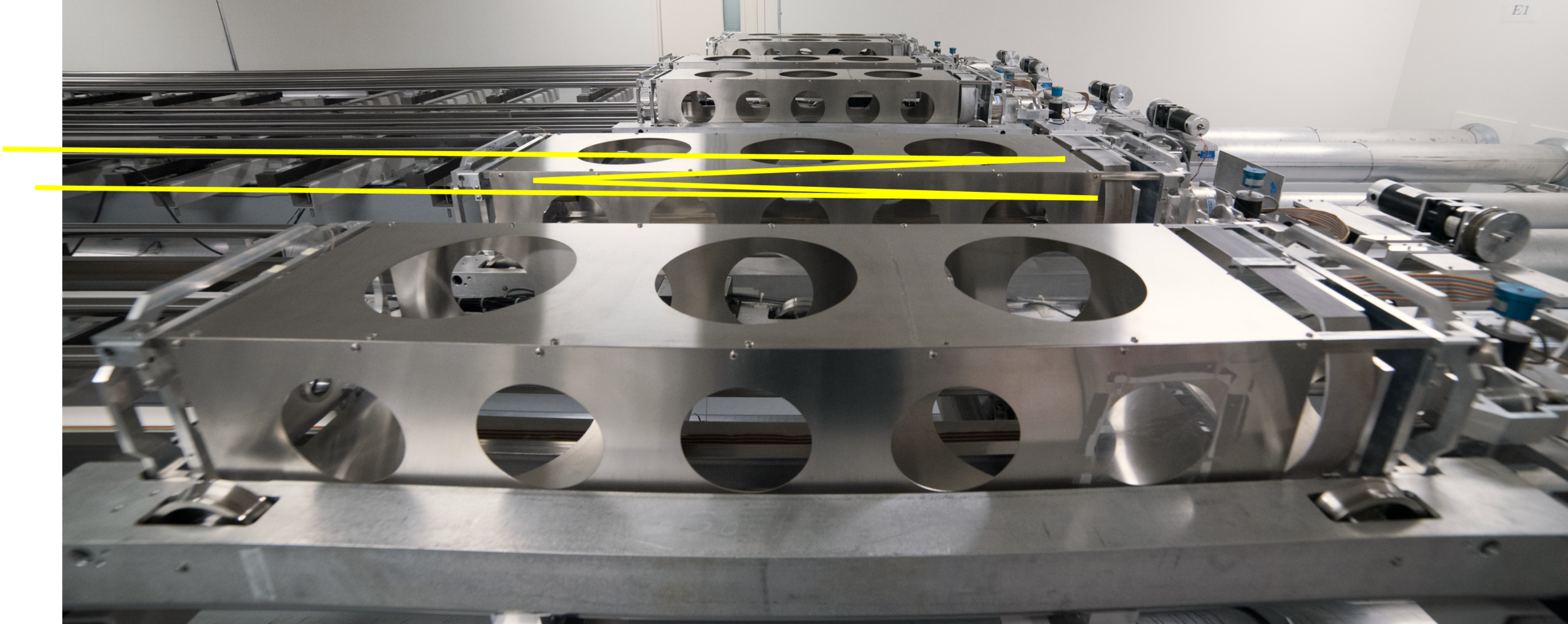
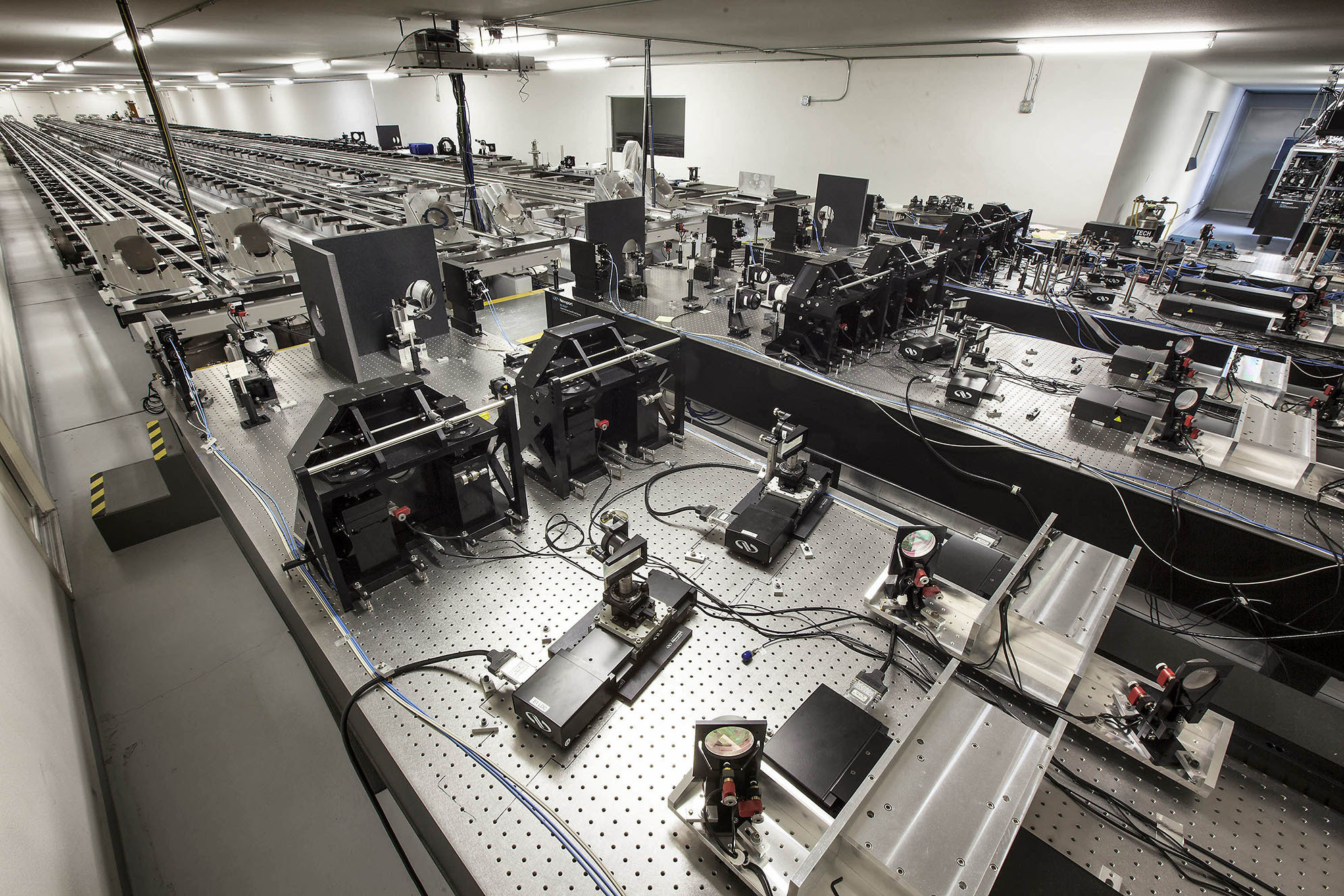
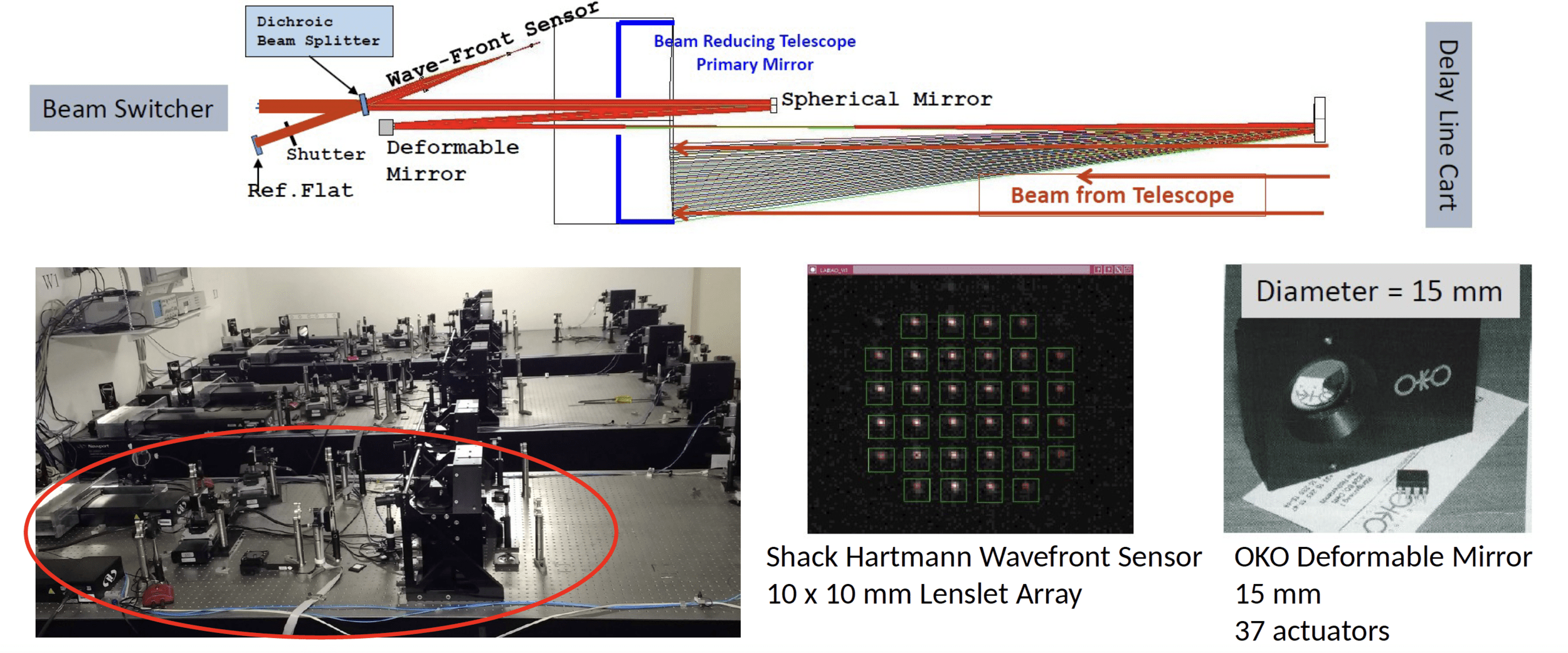
LabAO
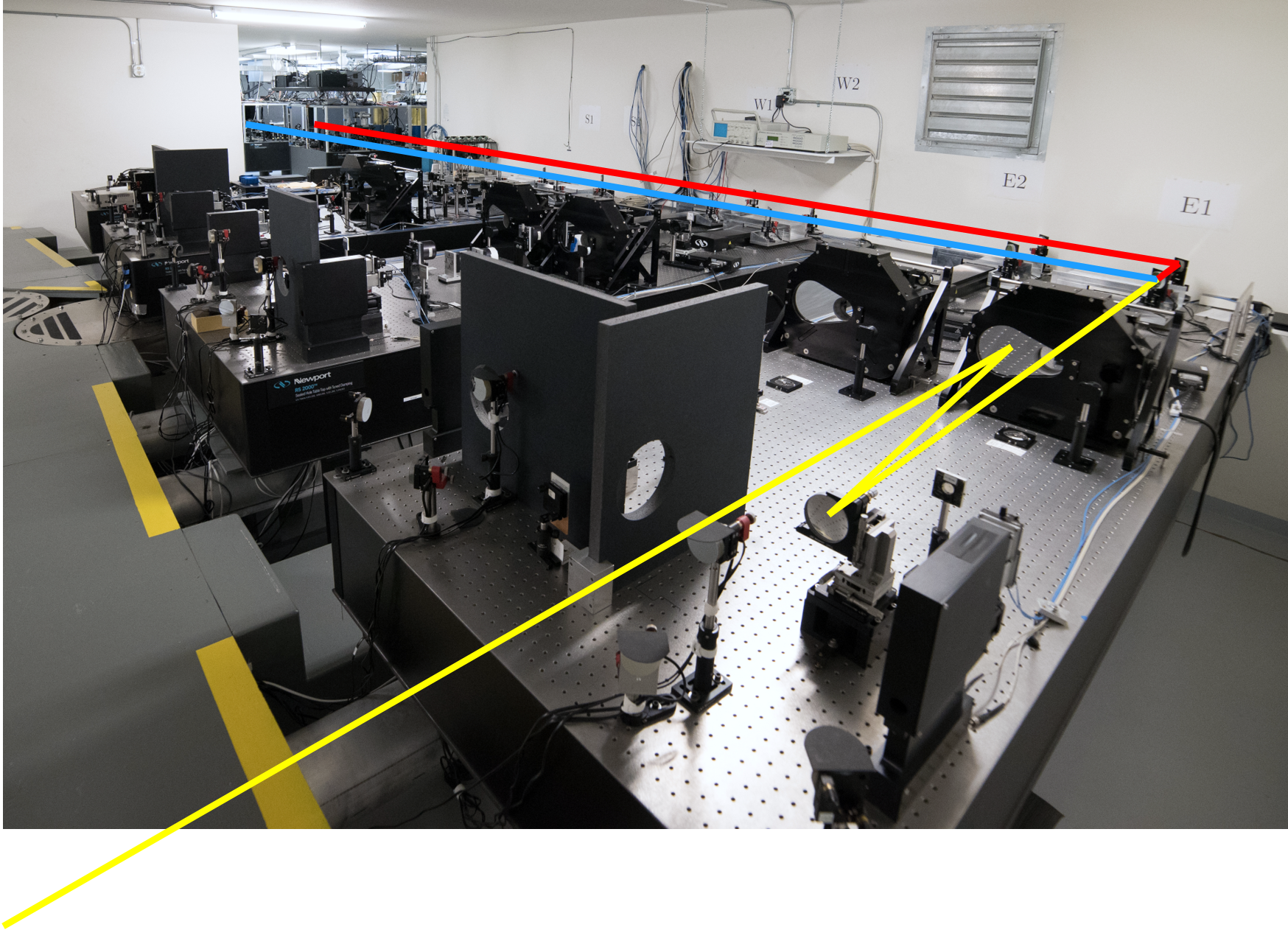
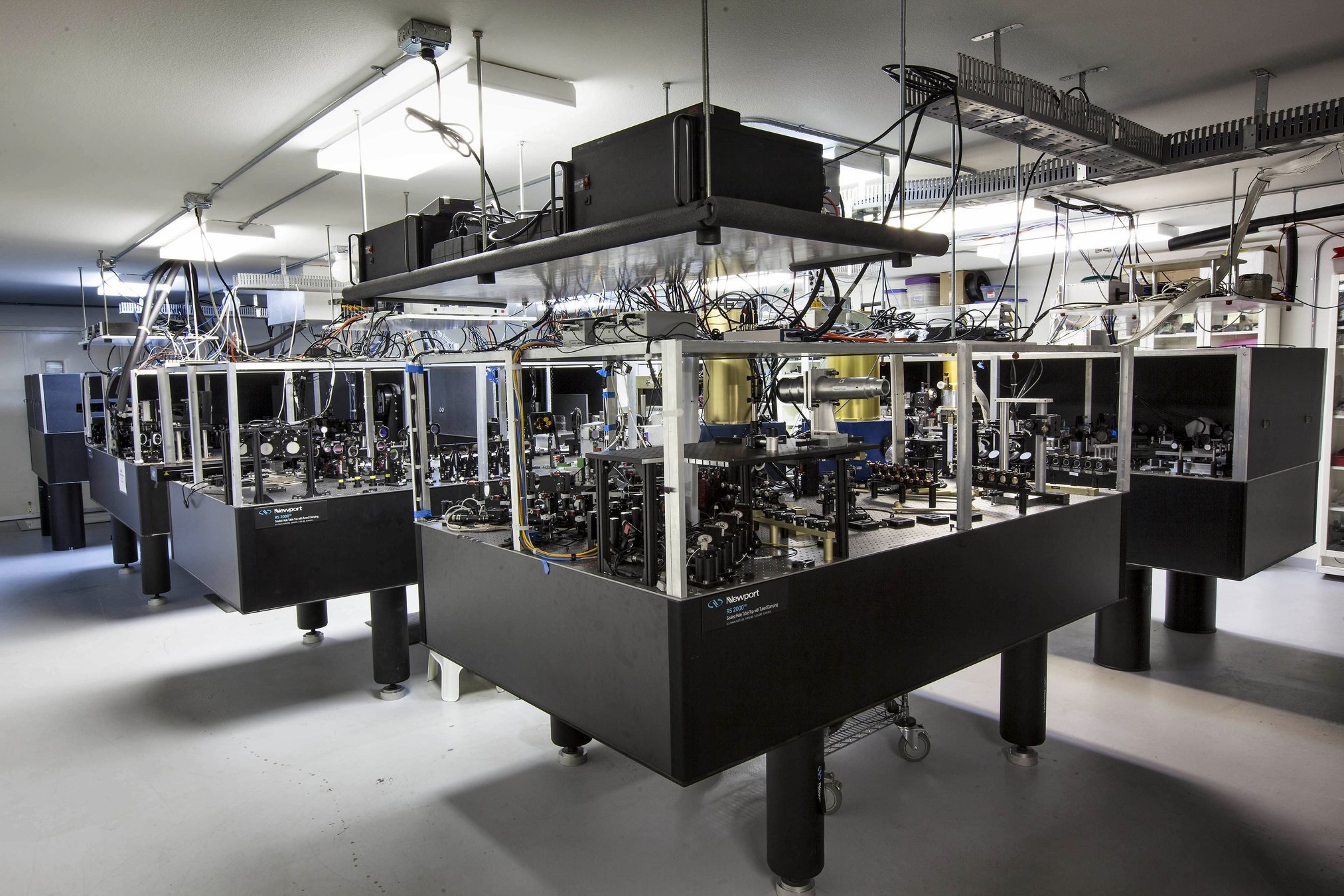
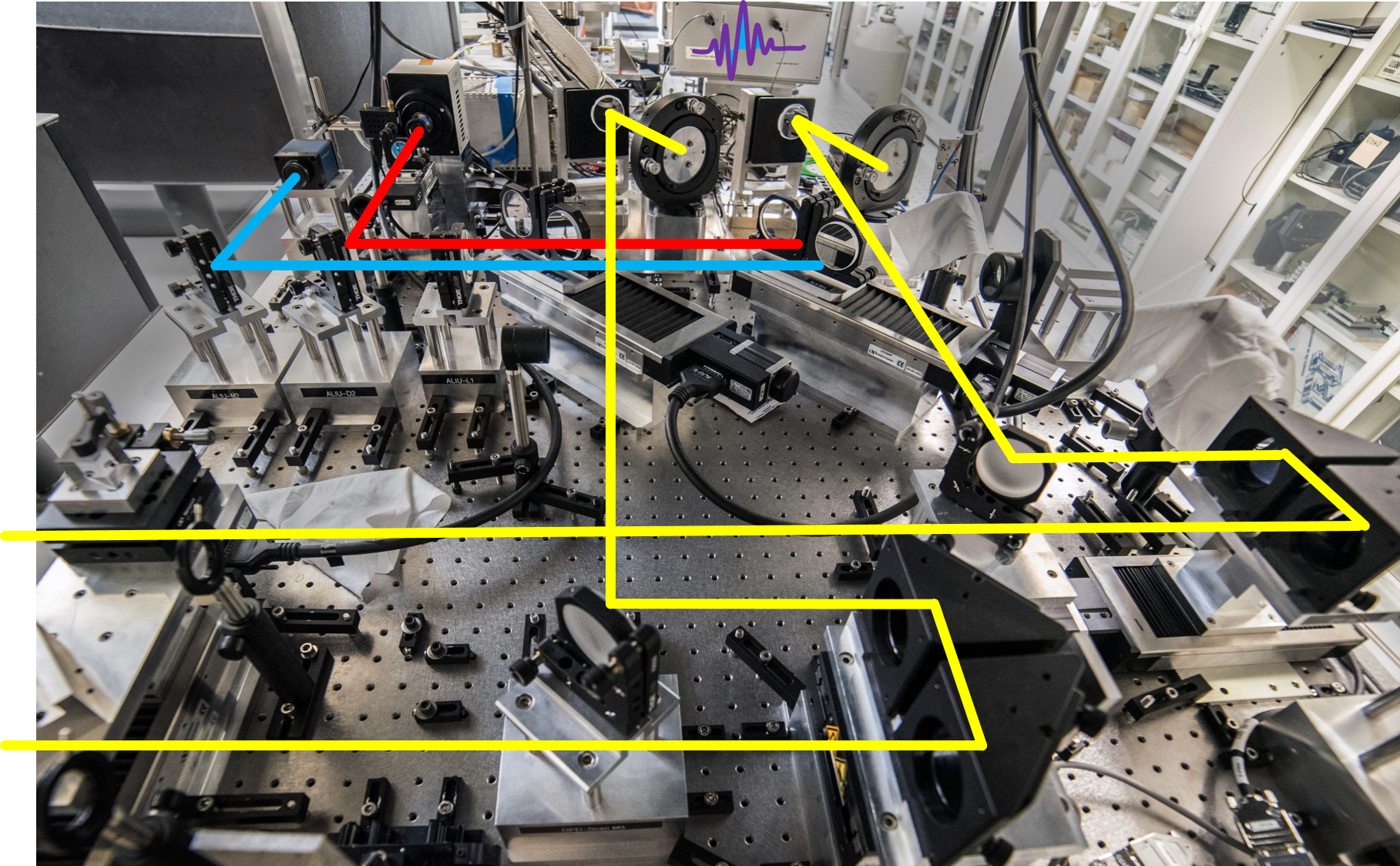
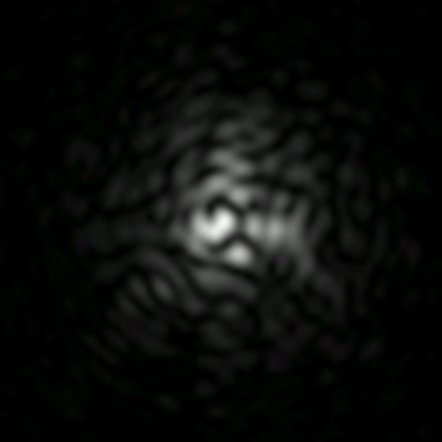
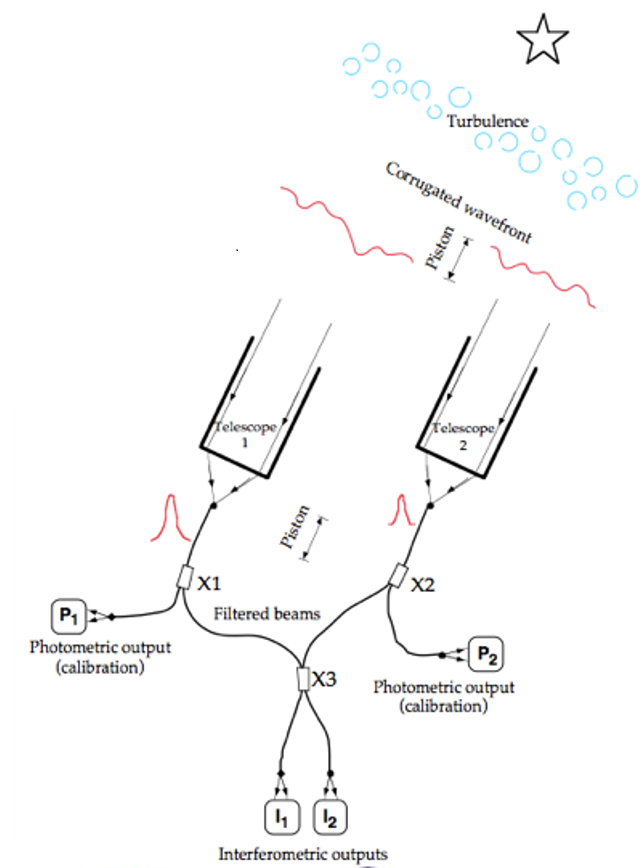
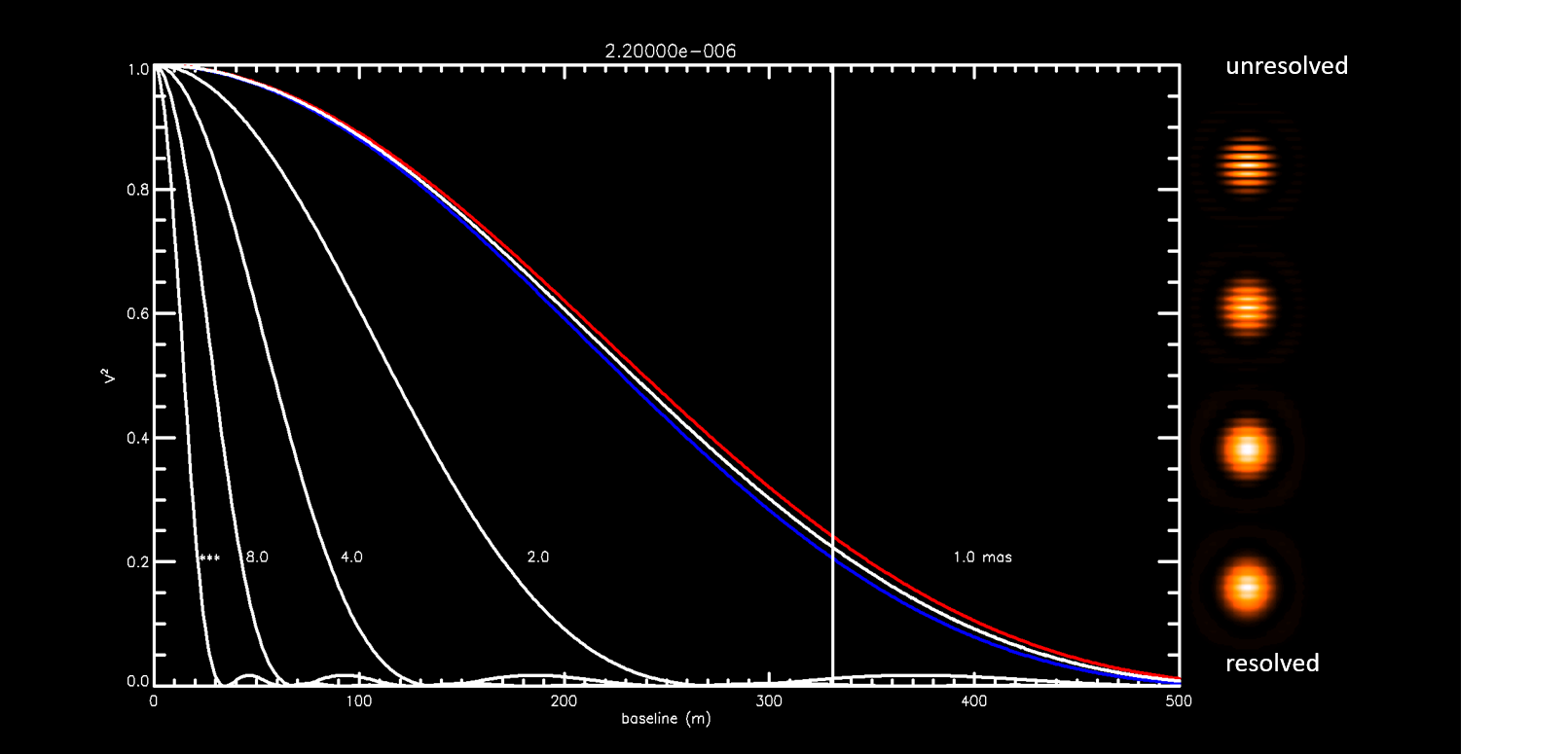

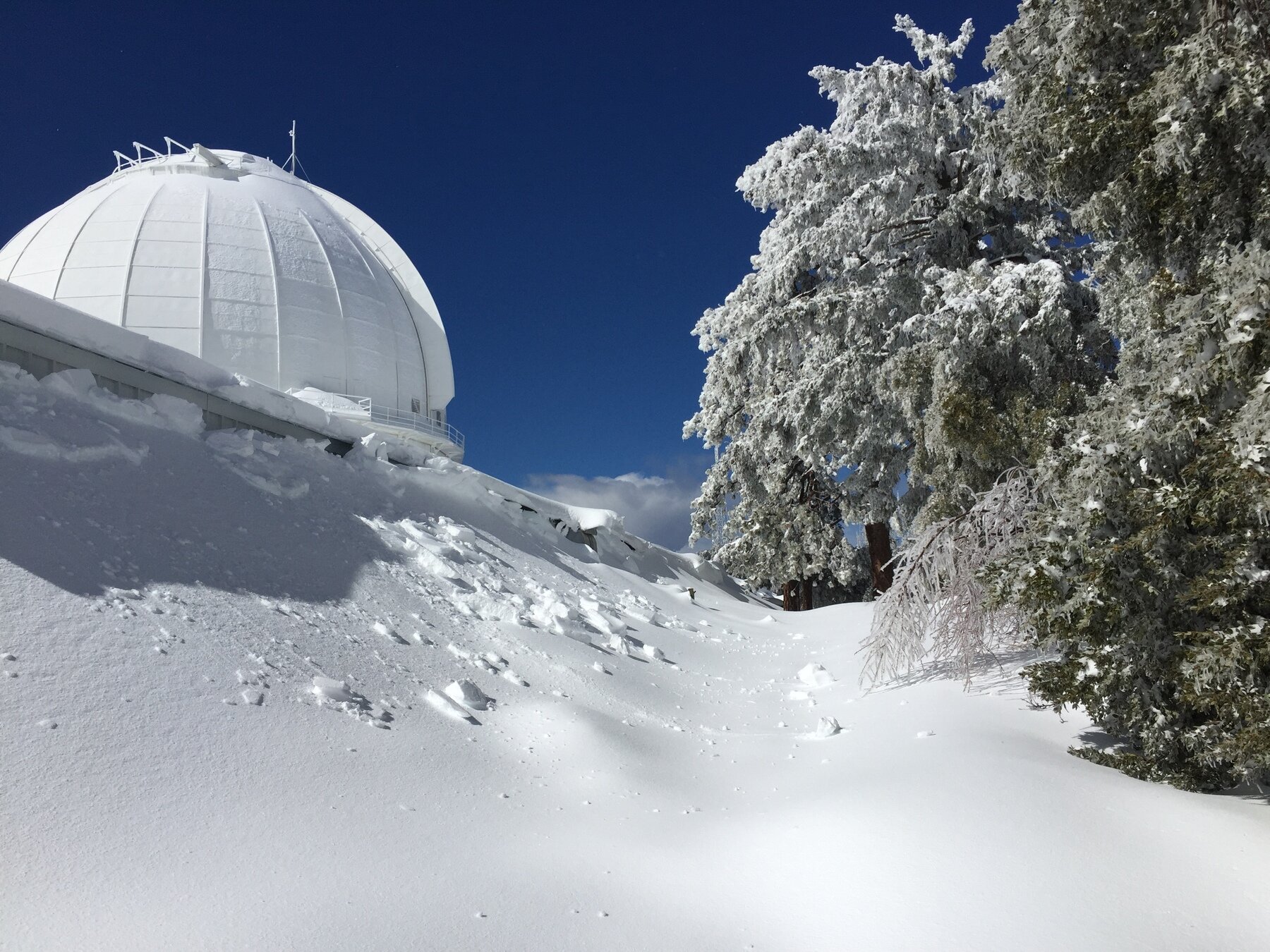


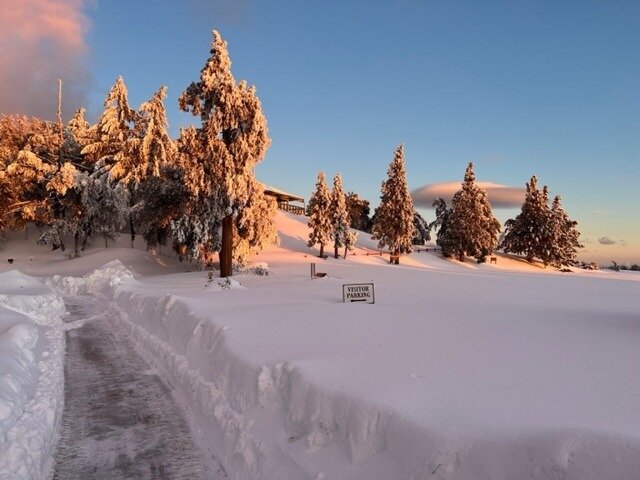
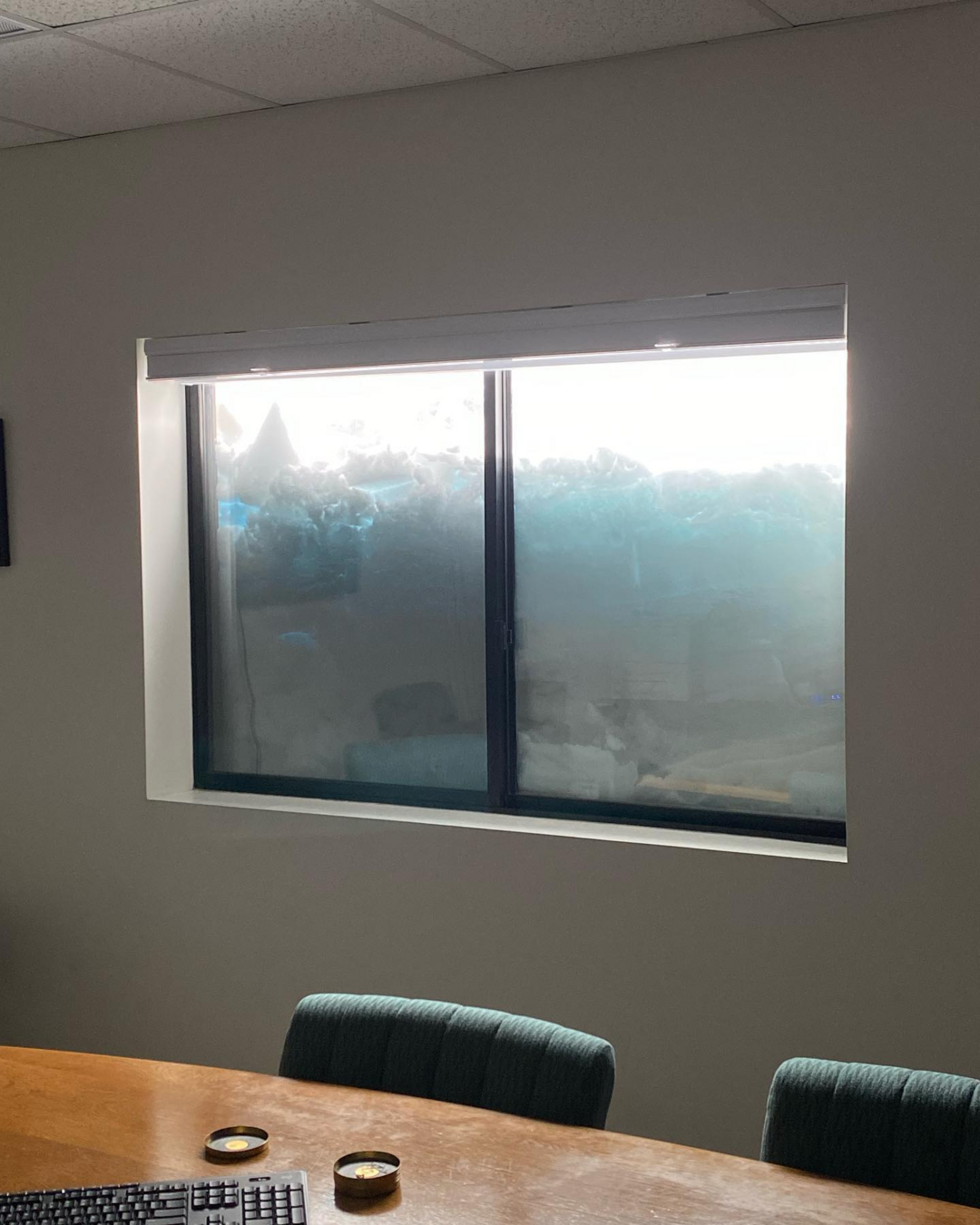

staff changes
- Theo (the director) retired
- Larry the site manager retired
- Laszlo and Judit (optical, mechanical, electrical engineers) retired
New hires:
- Narsi Anugu
- Rob Ligon
- Nic Scott
...New Projects, new combiners
AO+6T observing is regular now, soon most nights may be 6T IR+VIS with MIRC-X, MYSTIC, & SPICA running simulataneously

CMAP
(CHARA Michelson Array Pathfinder)

Mobile Telescope Transport (TR116)
Ligon et al. 2022



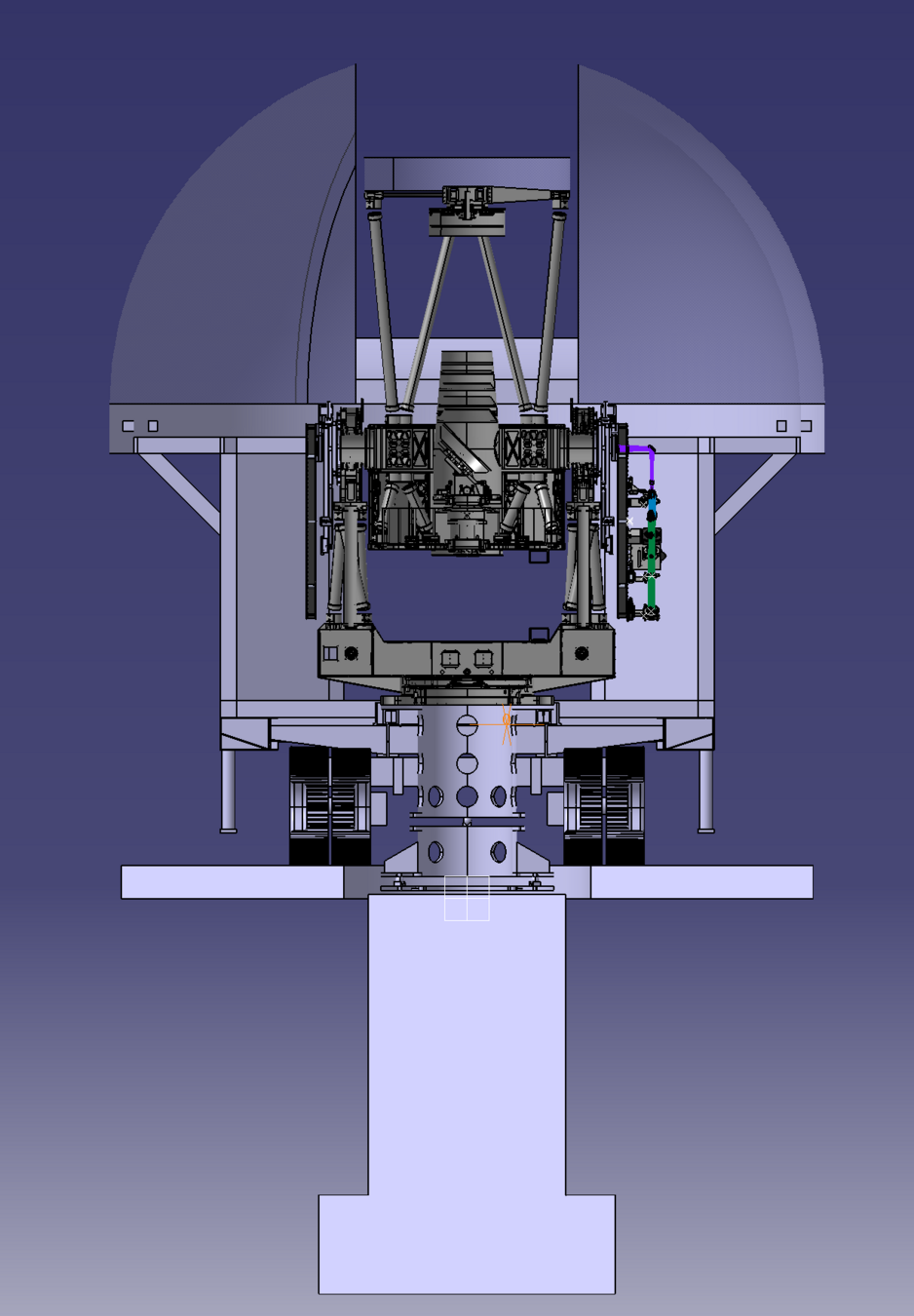

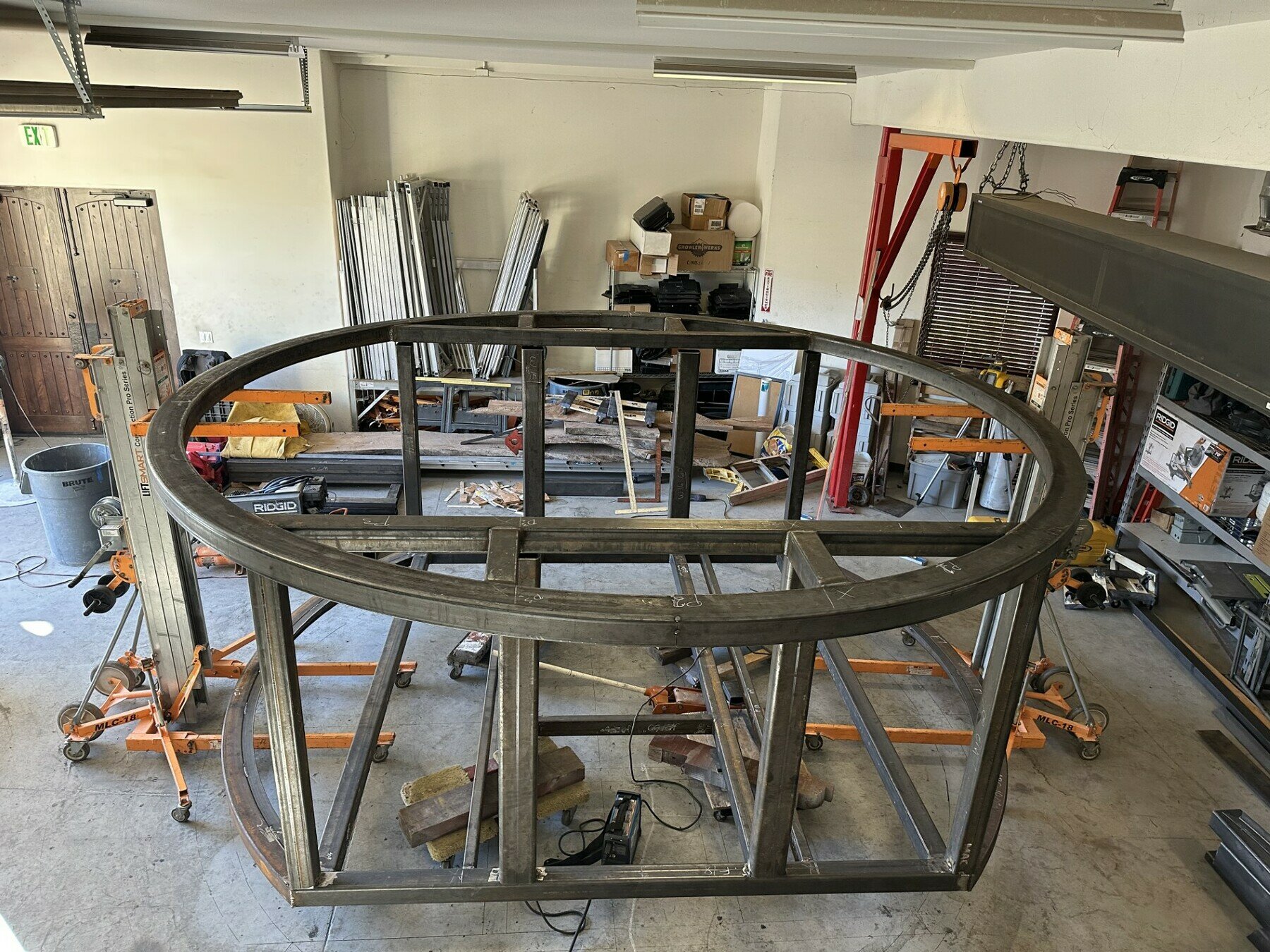
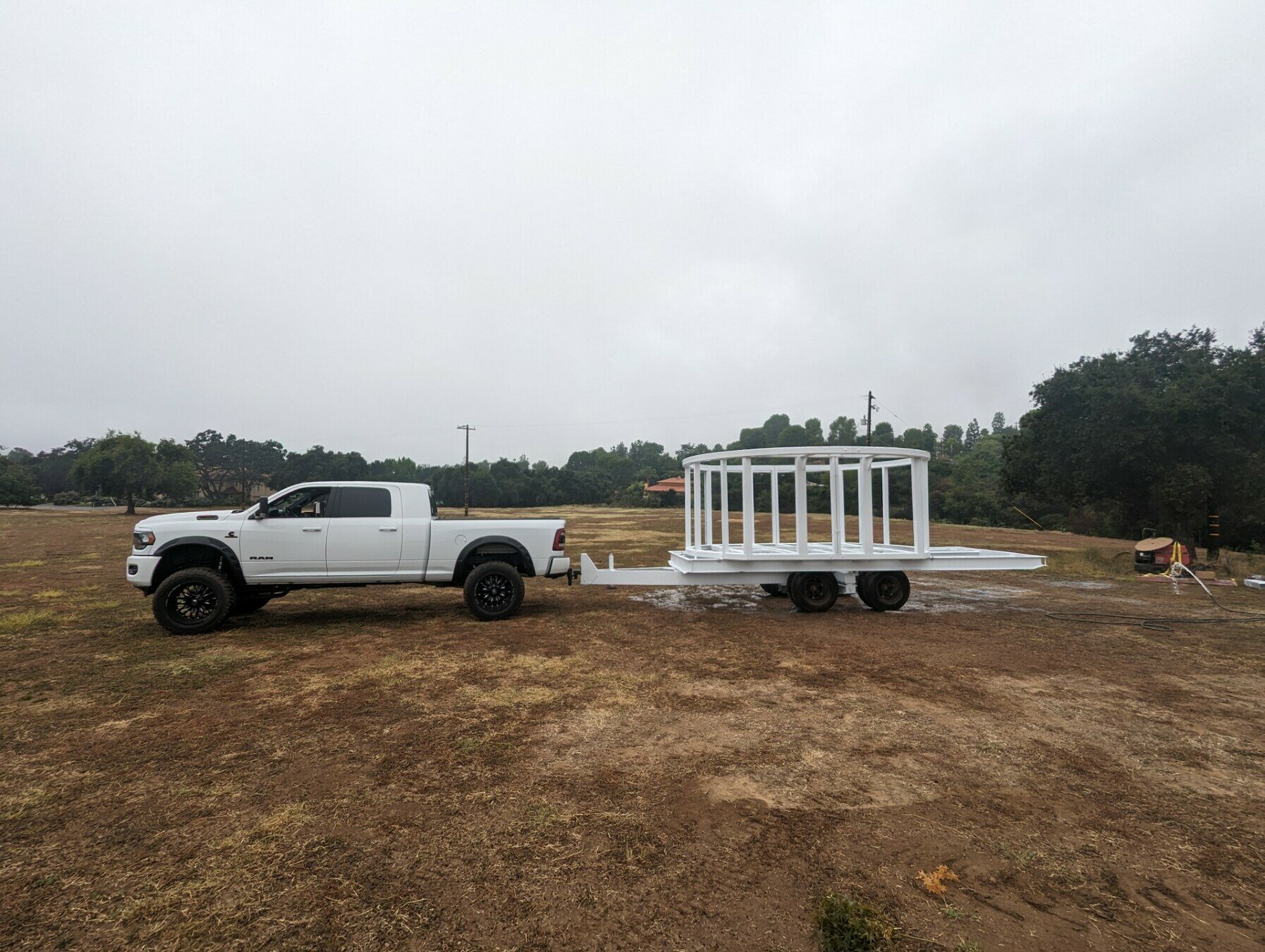
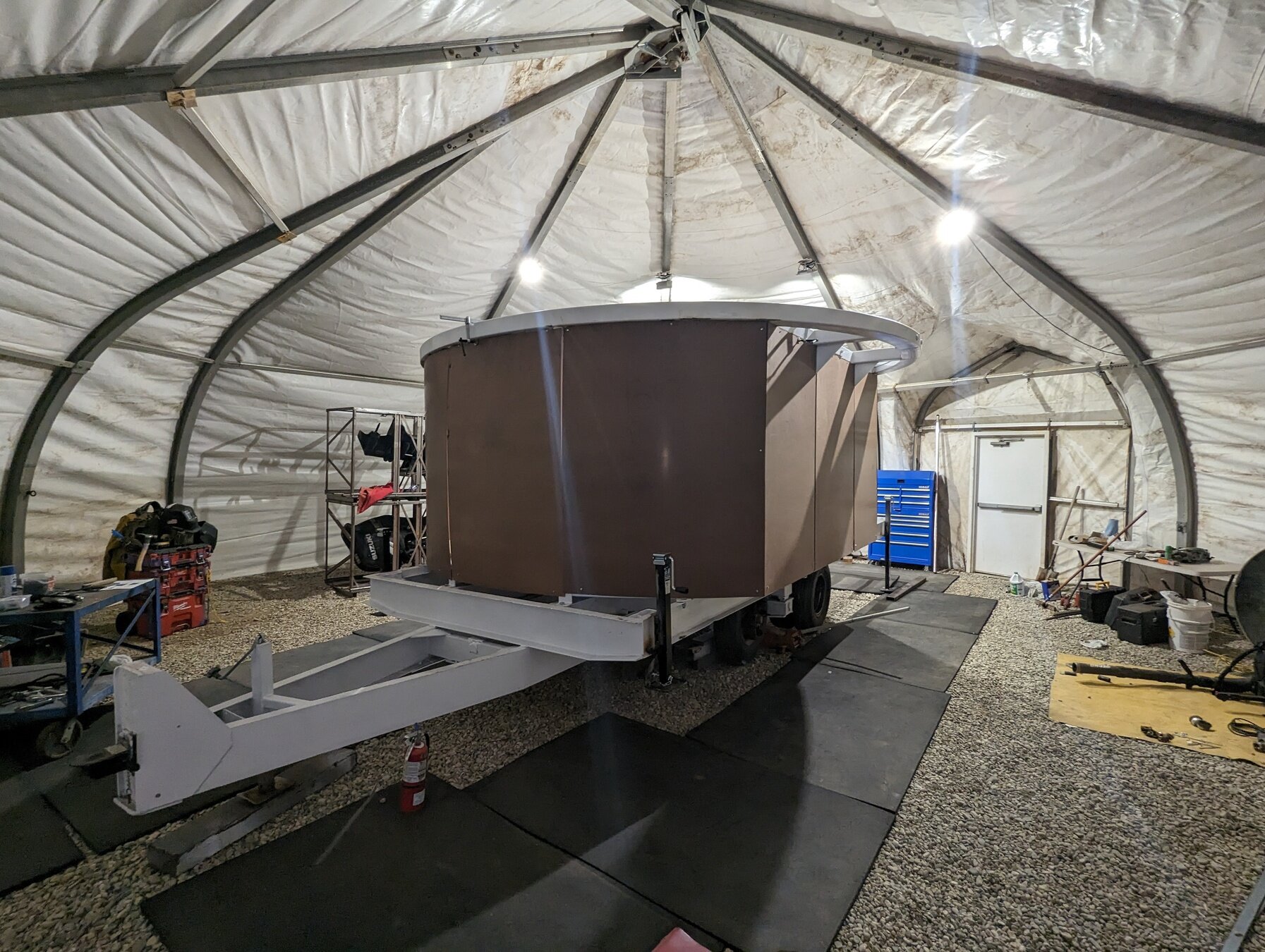
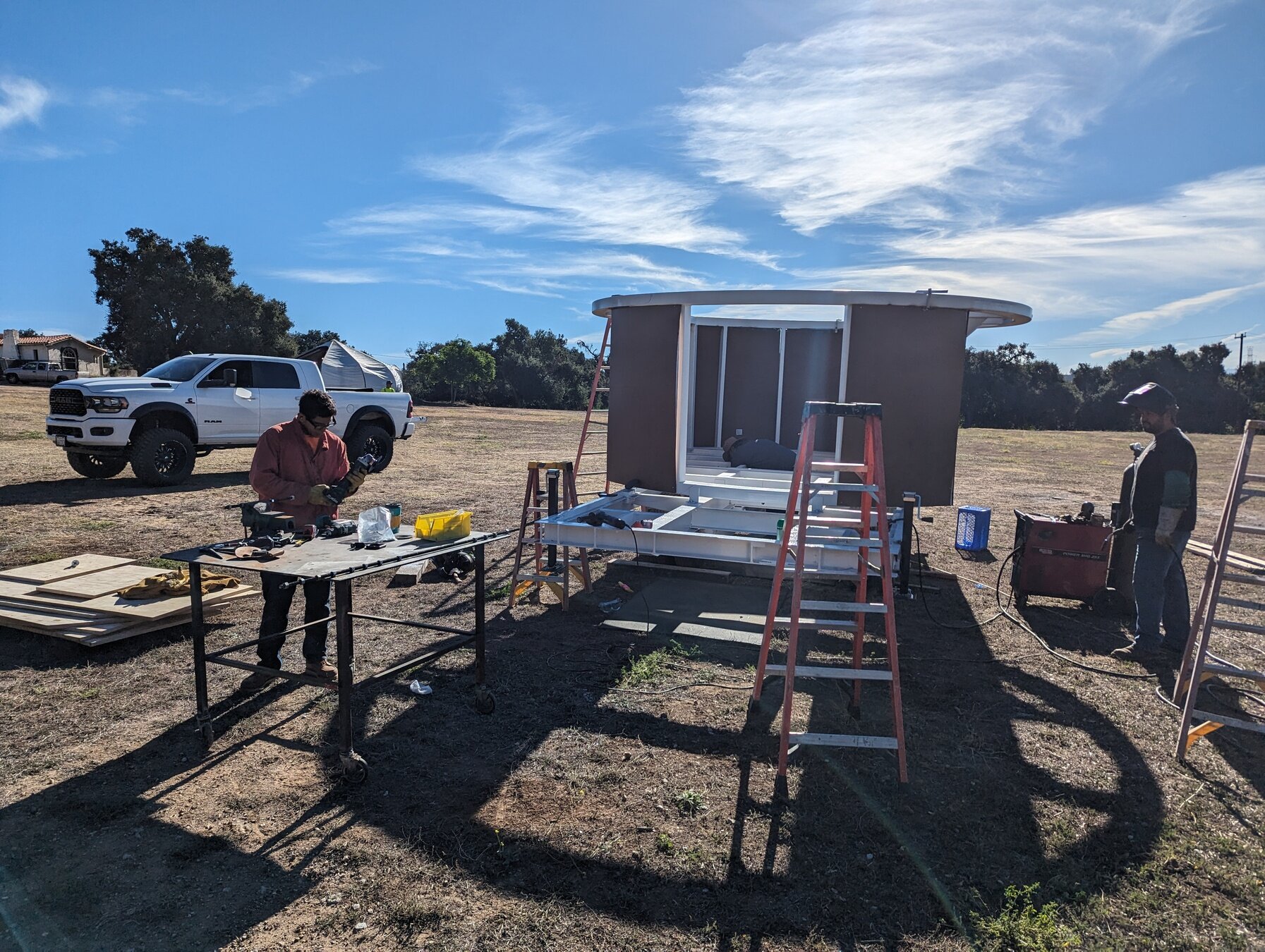
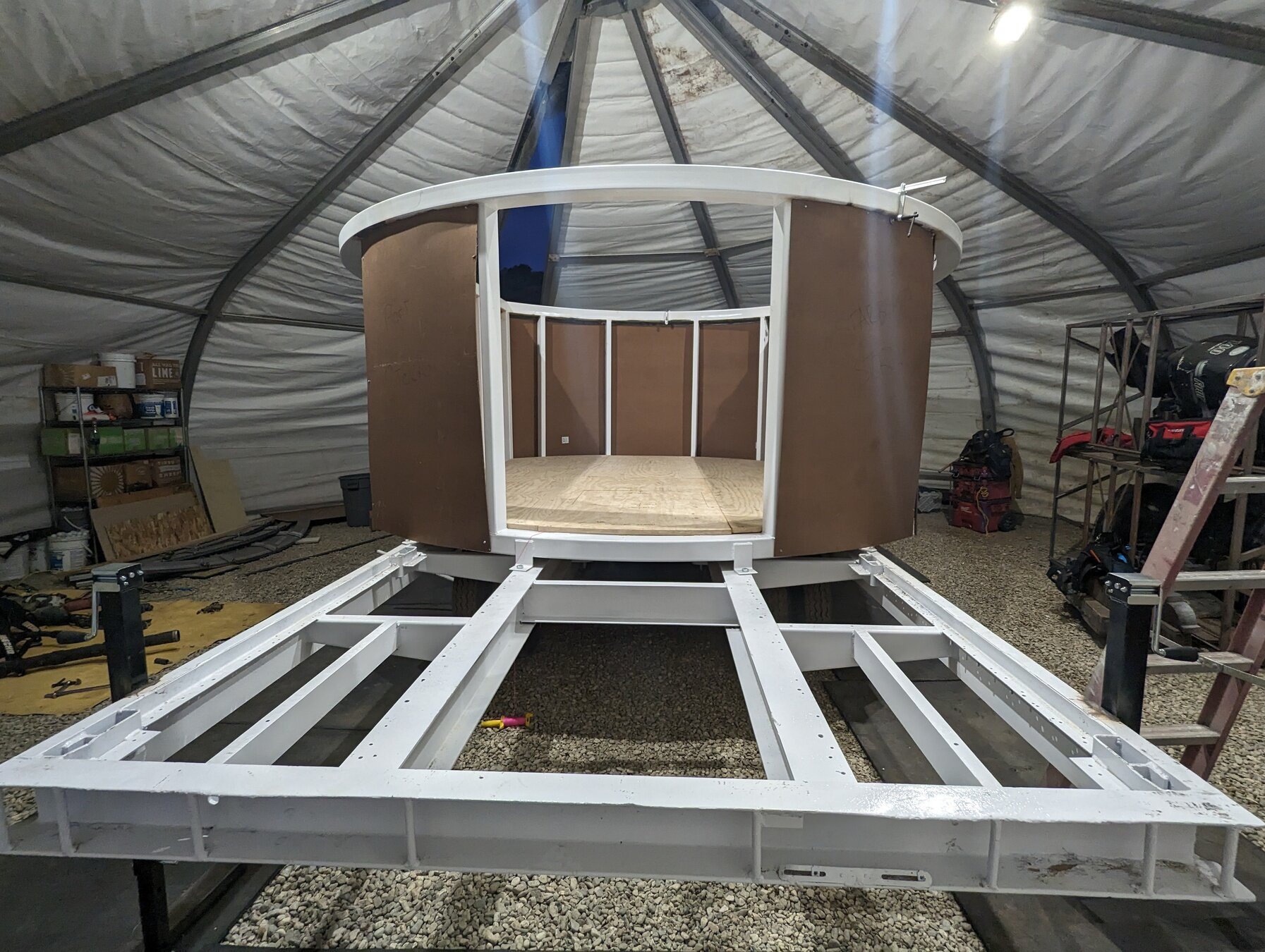
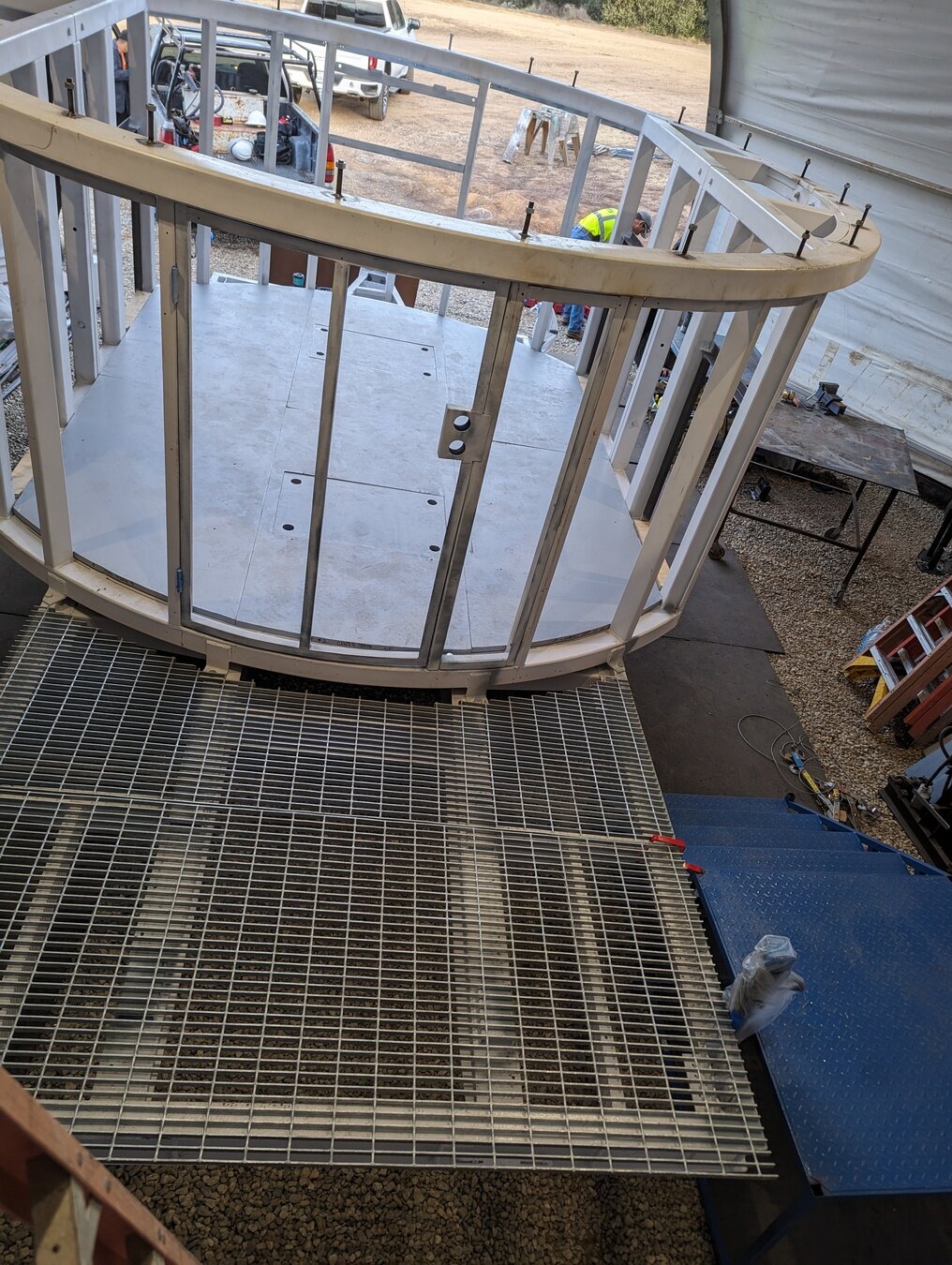
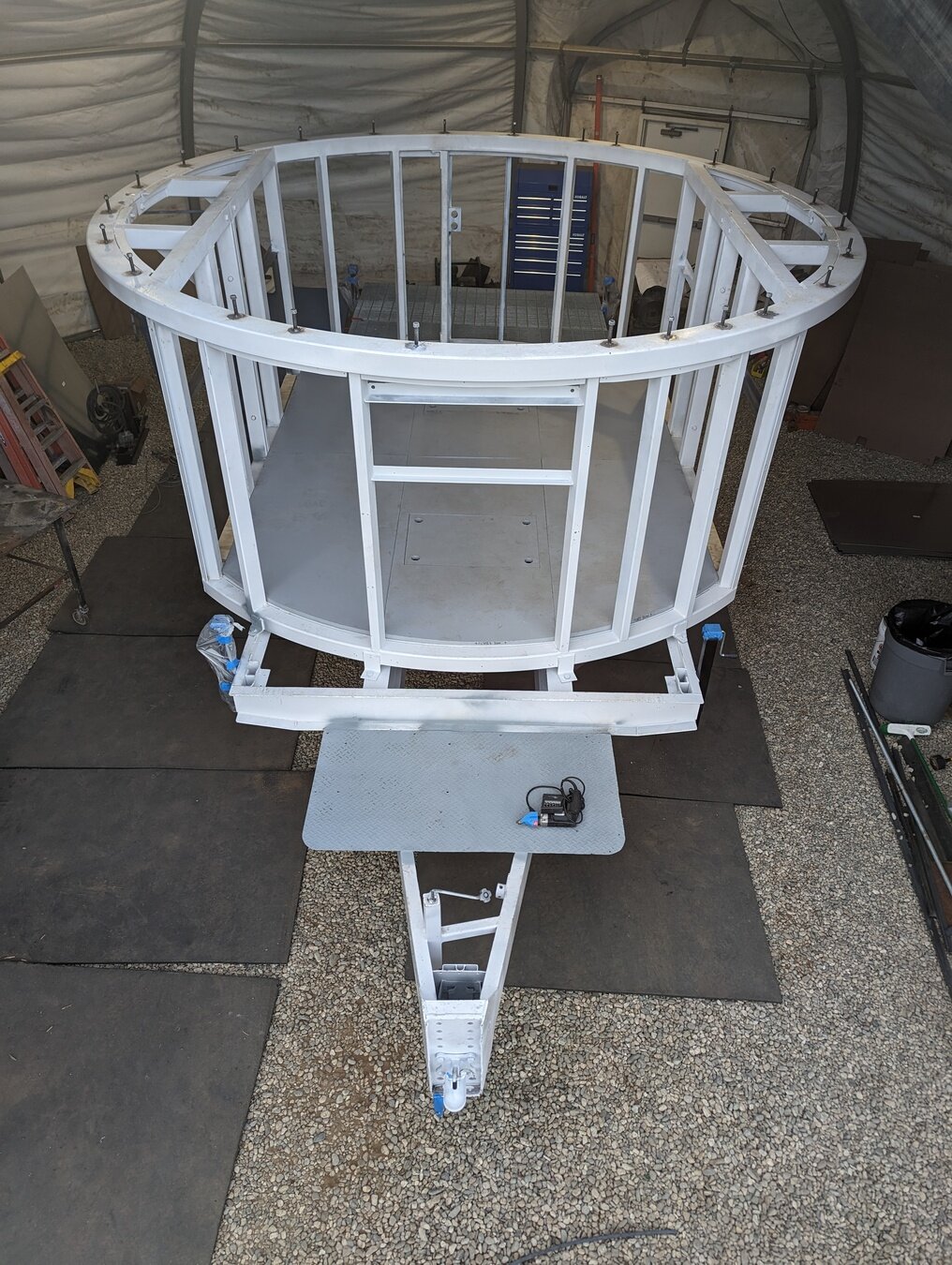
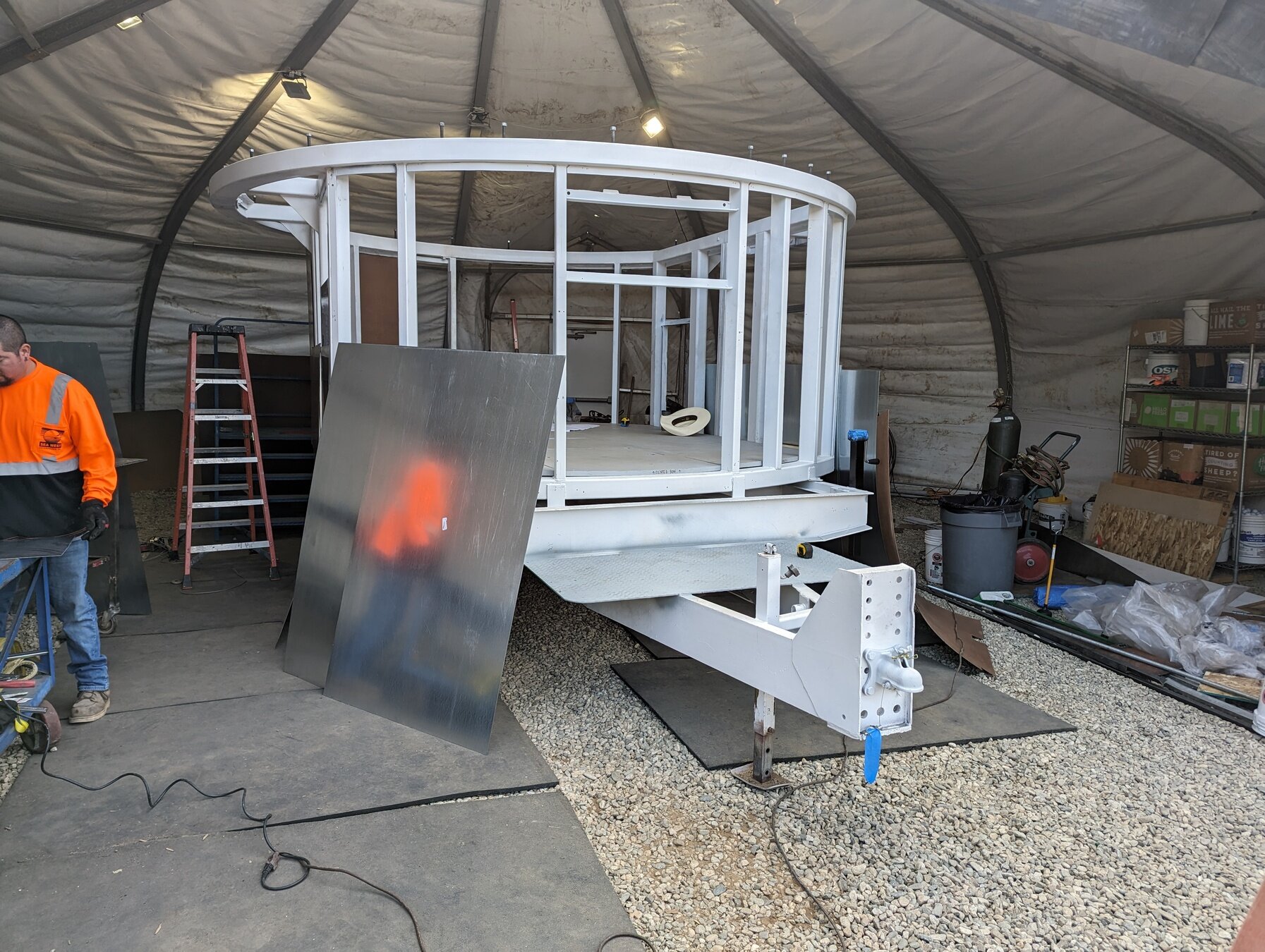
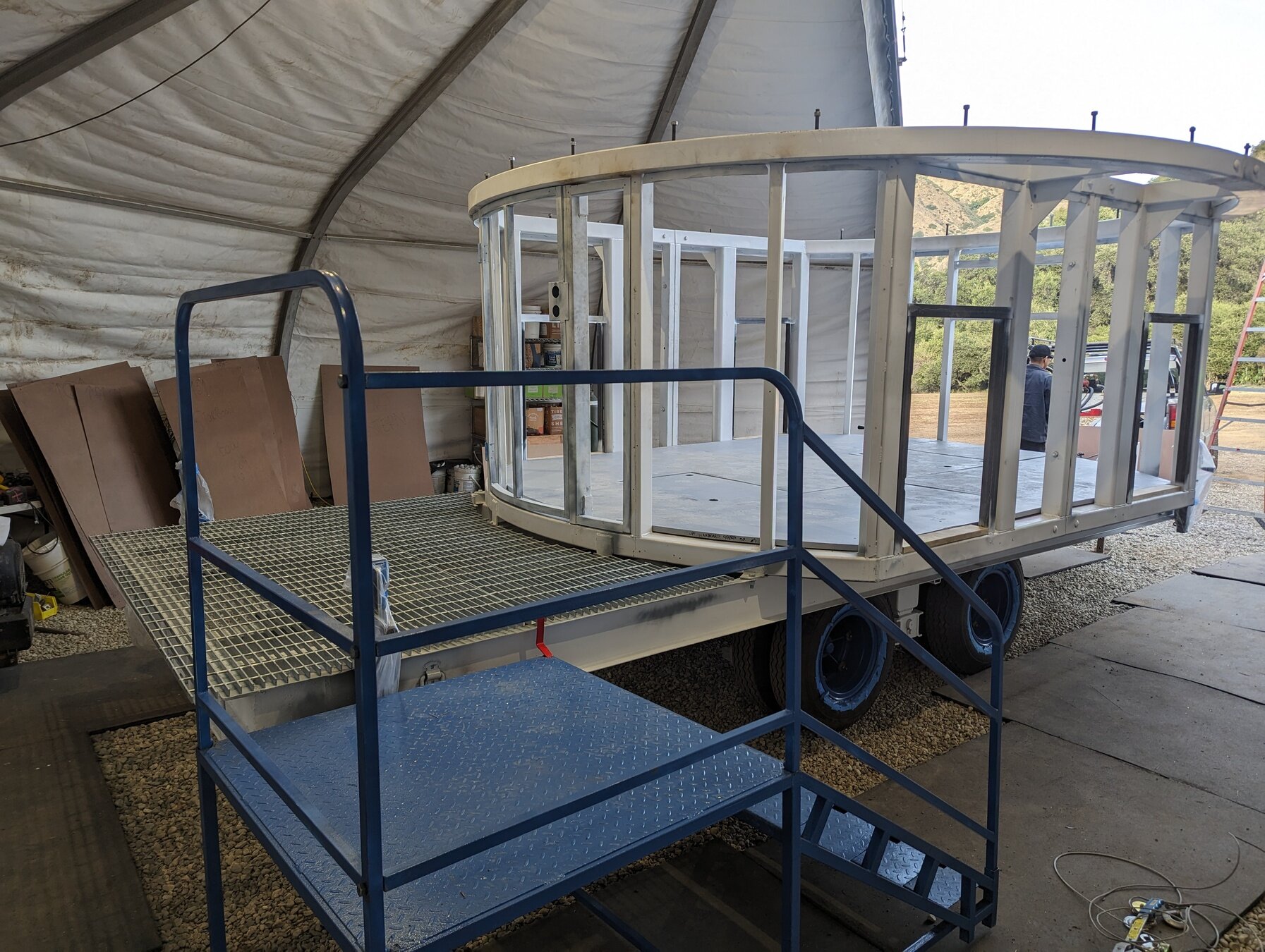
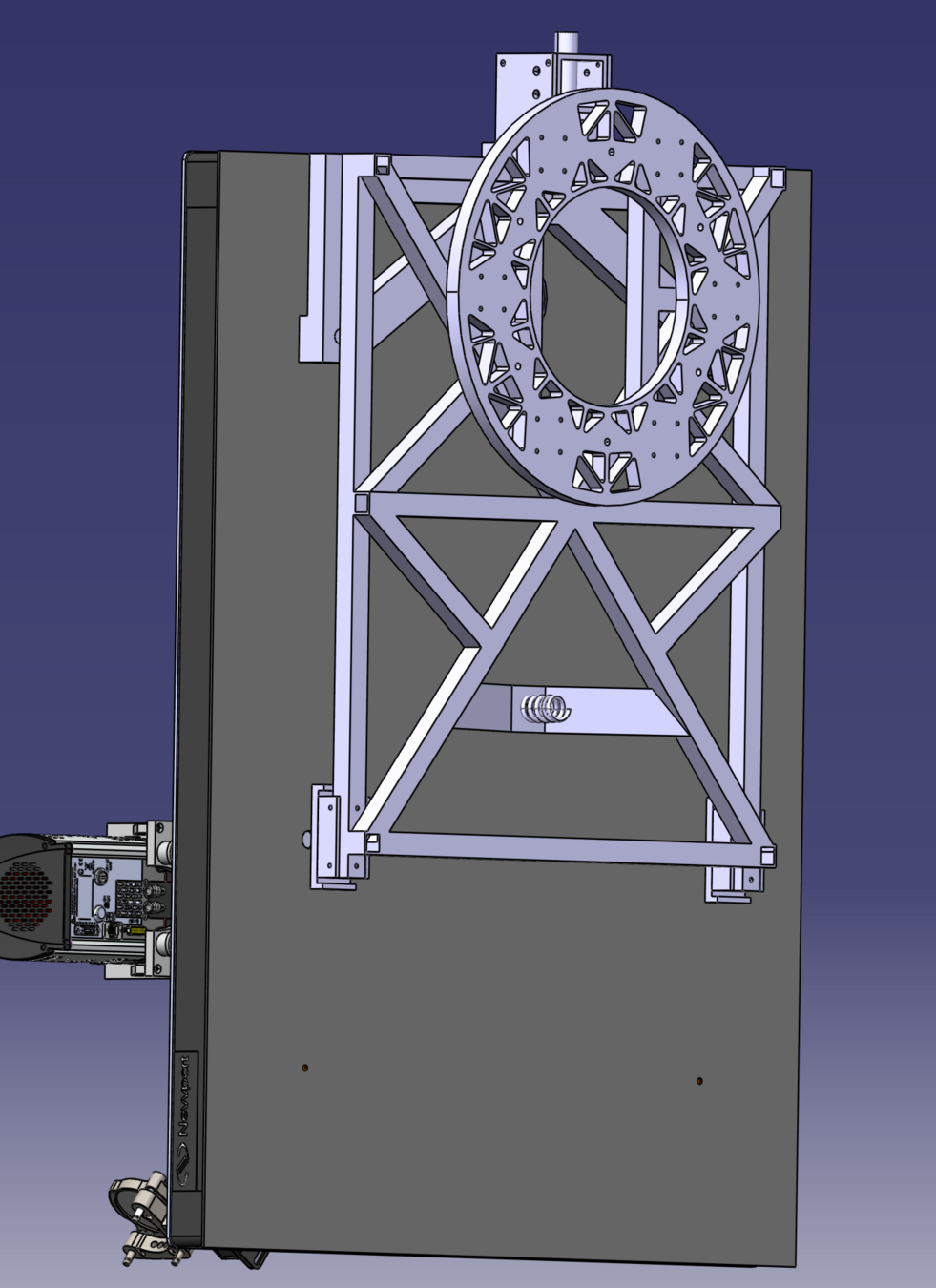
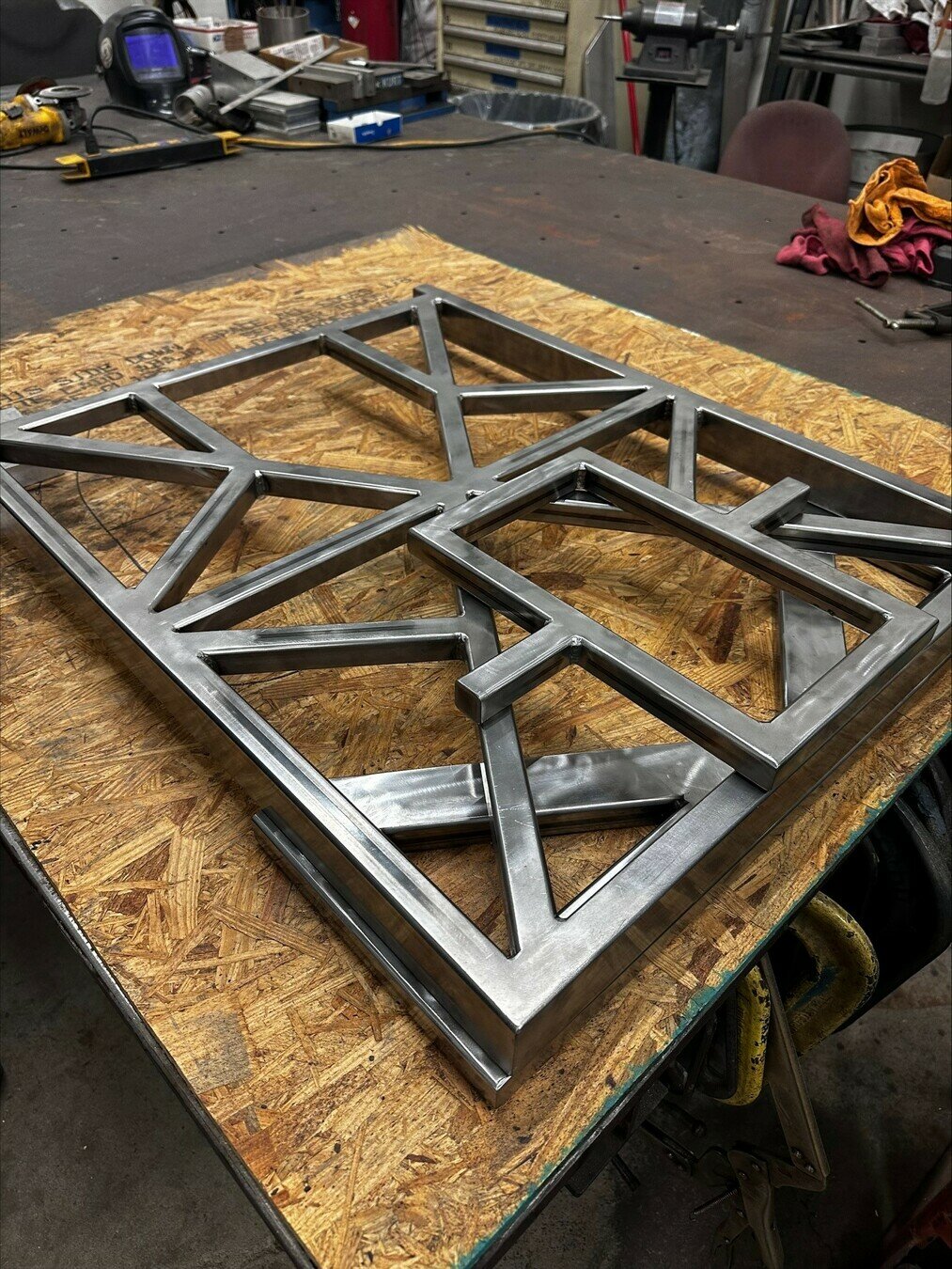
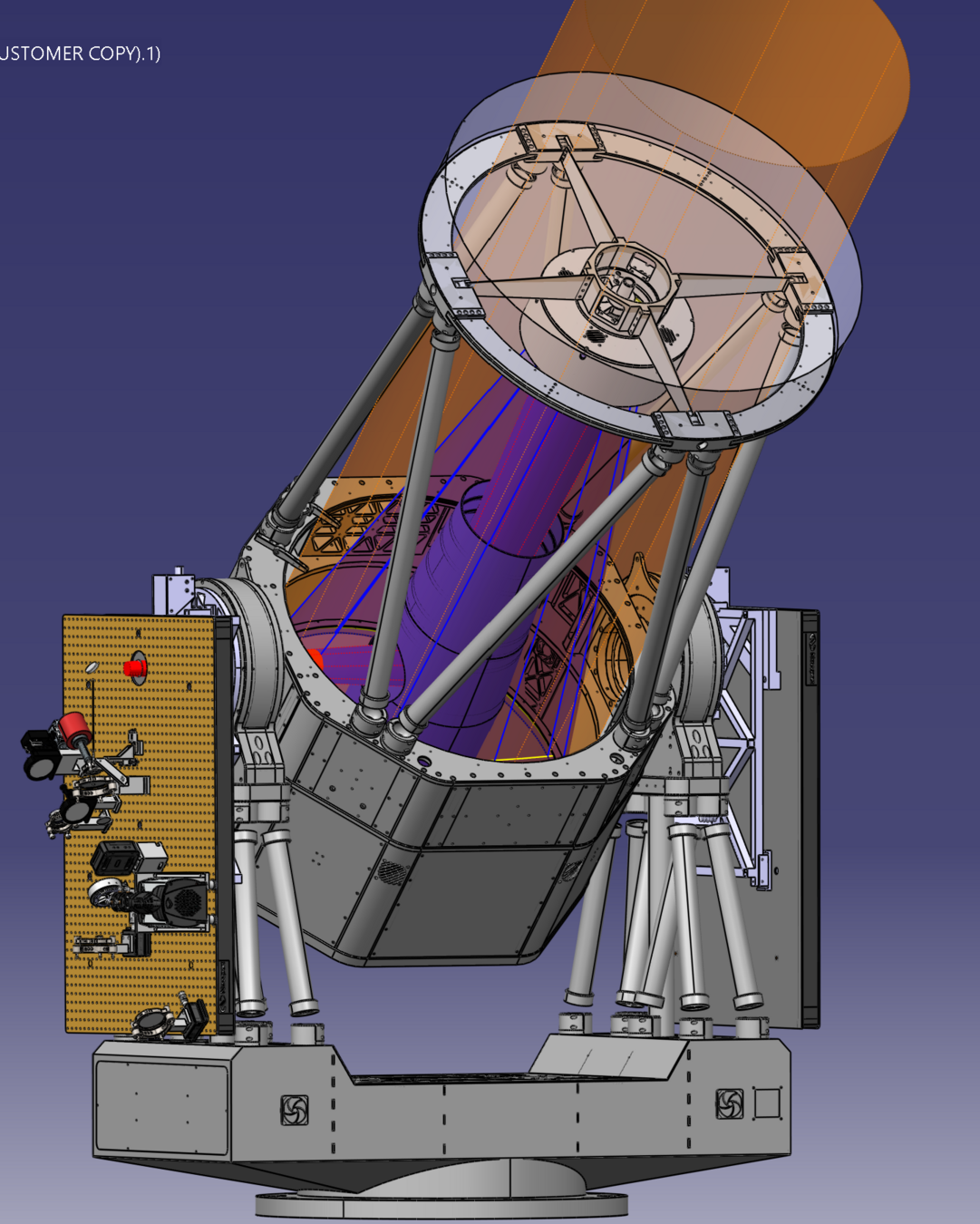
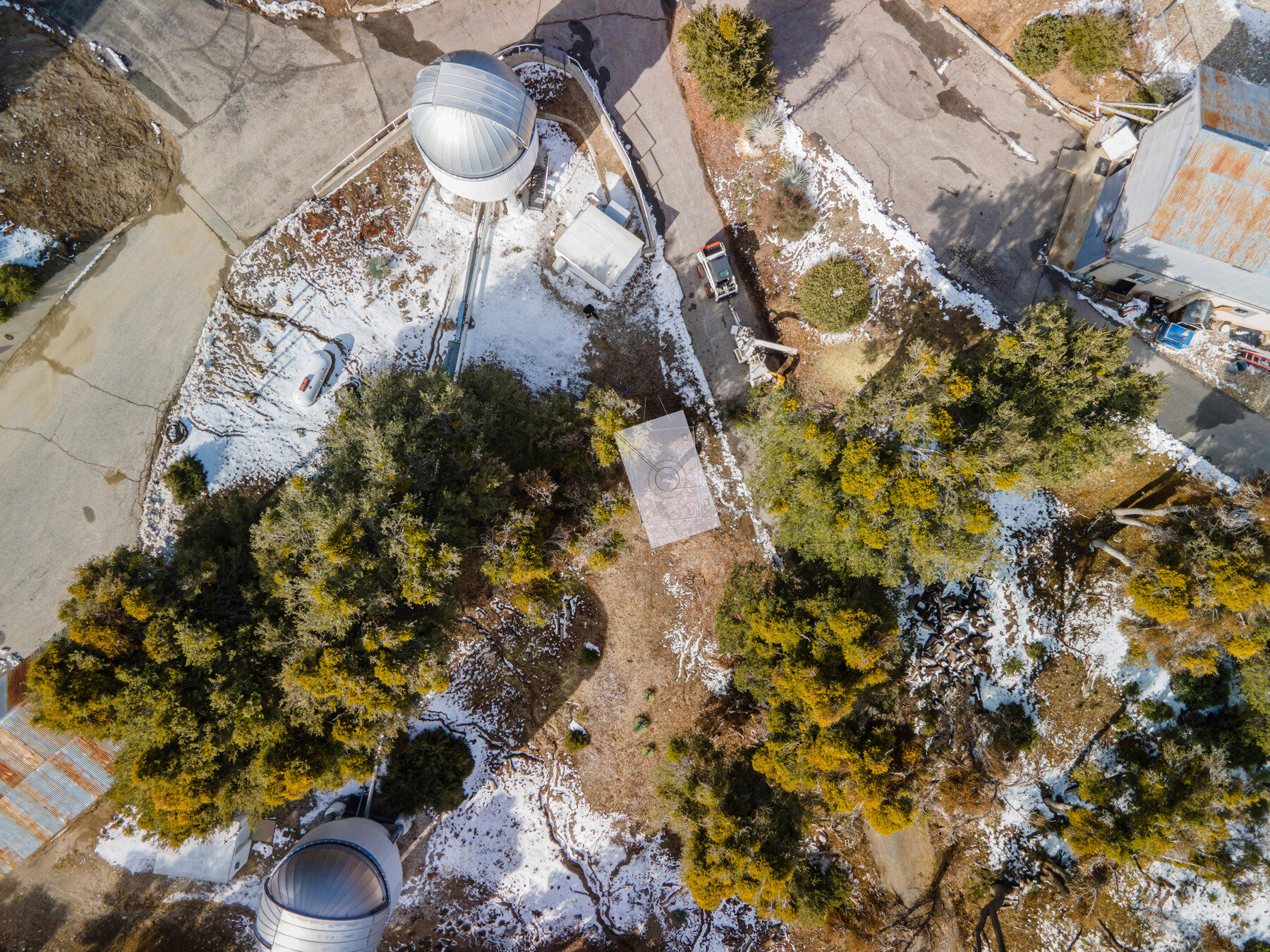
S3
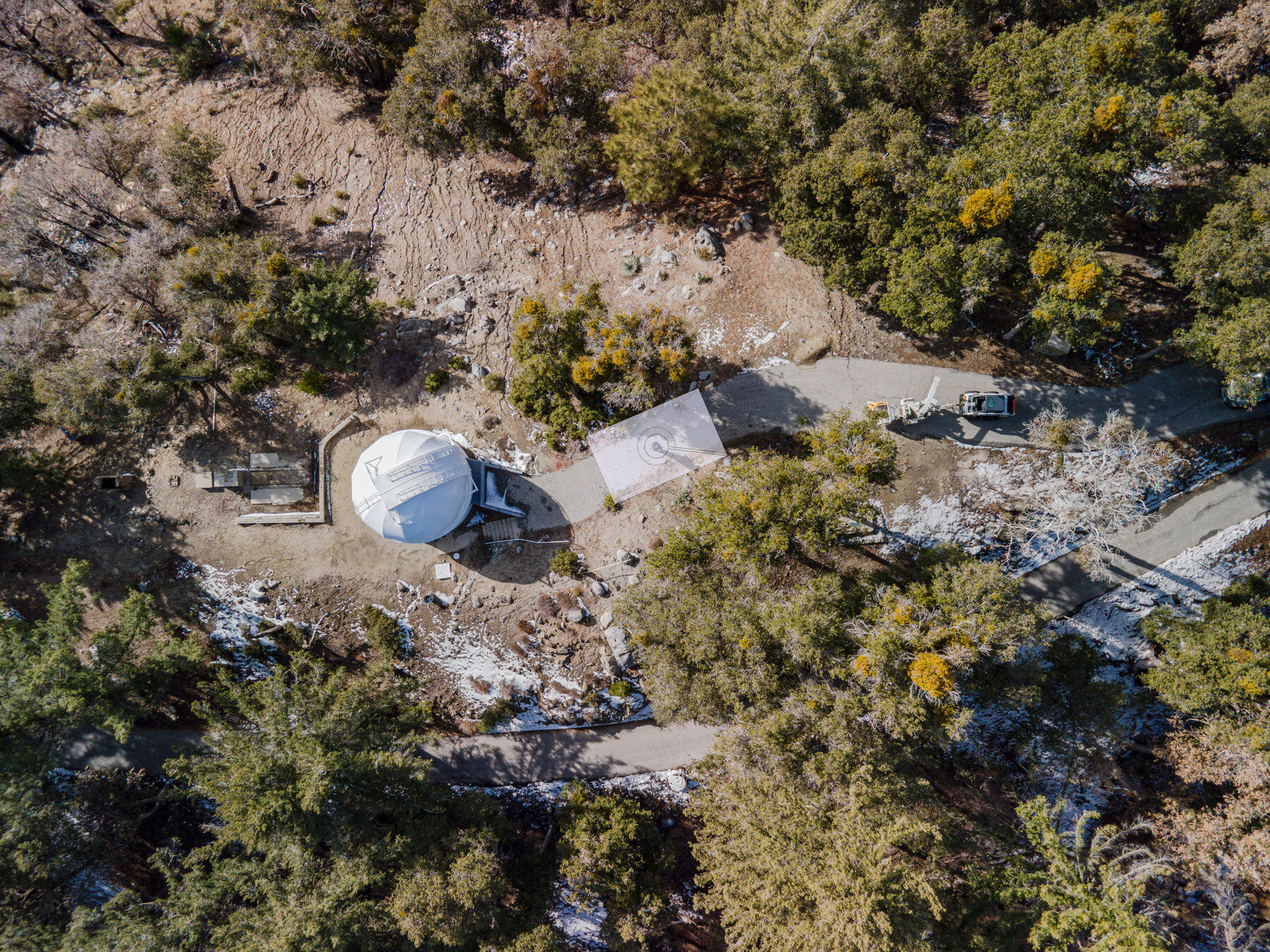
S4
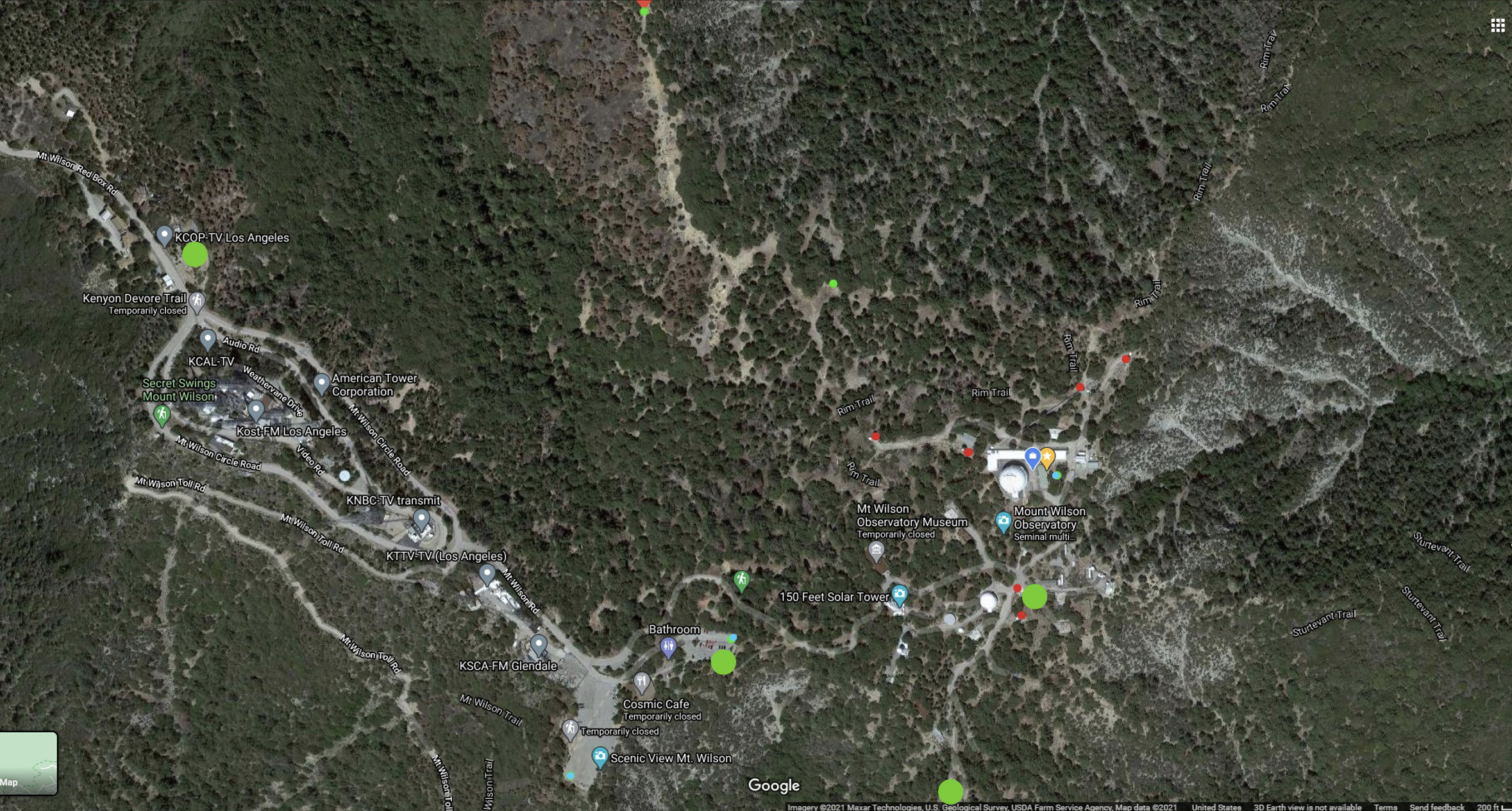
1100m
600m
~17m
S3
S4
W5
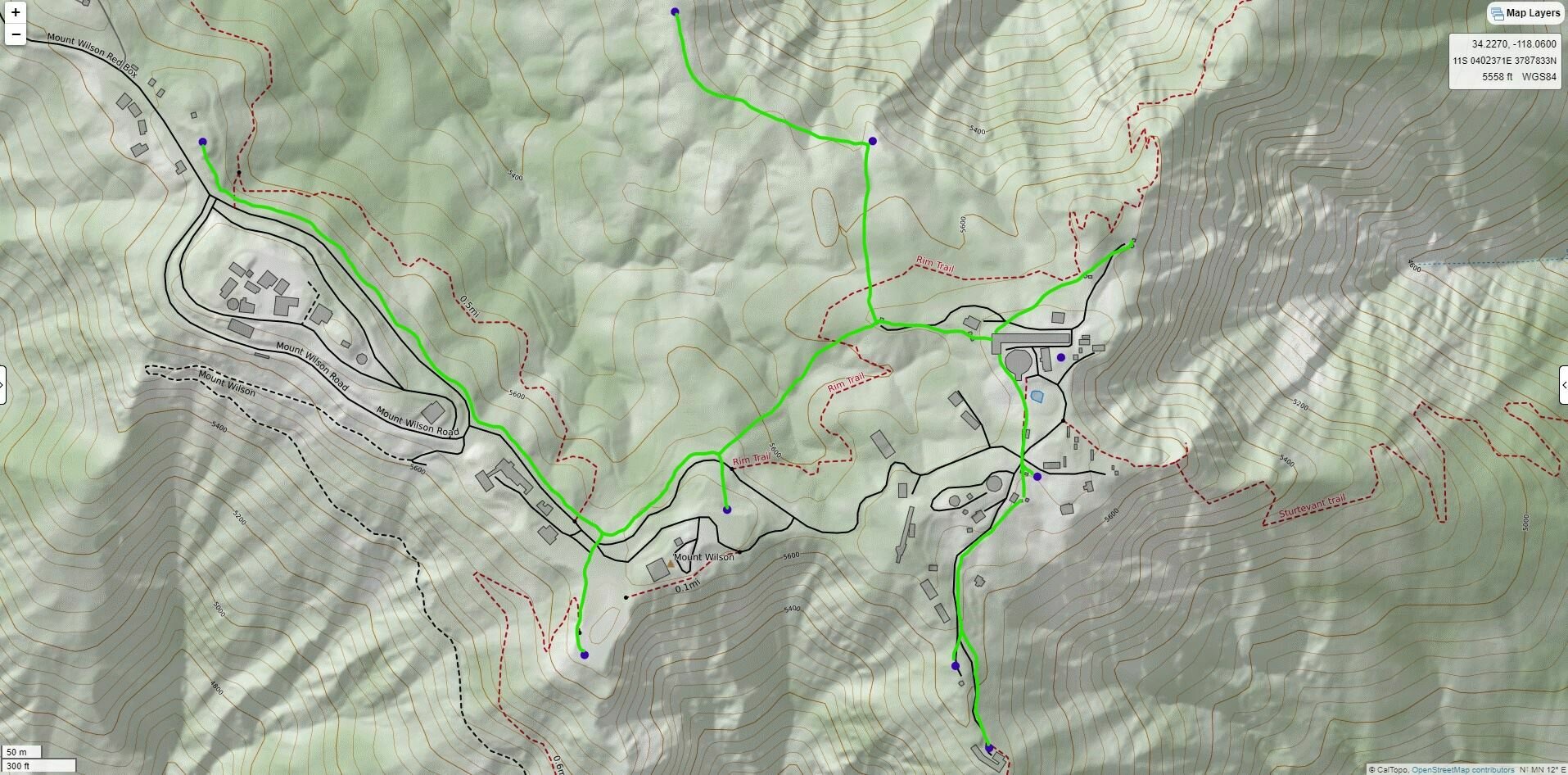
The full Michelson Array would offer
12 total positions, creating 66 possible baselines.
current/new combiners


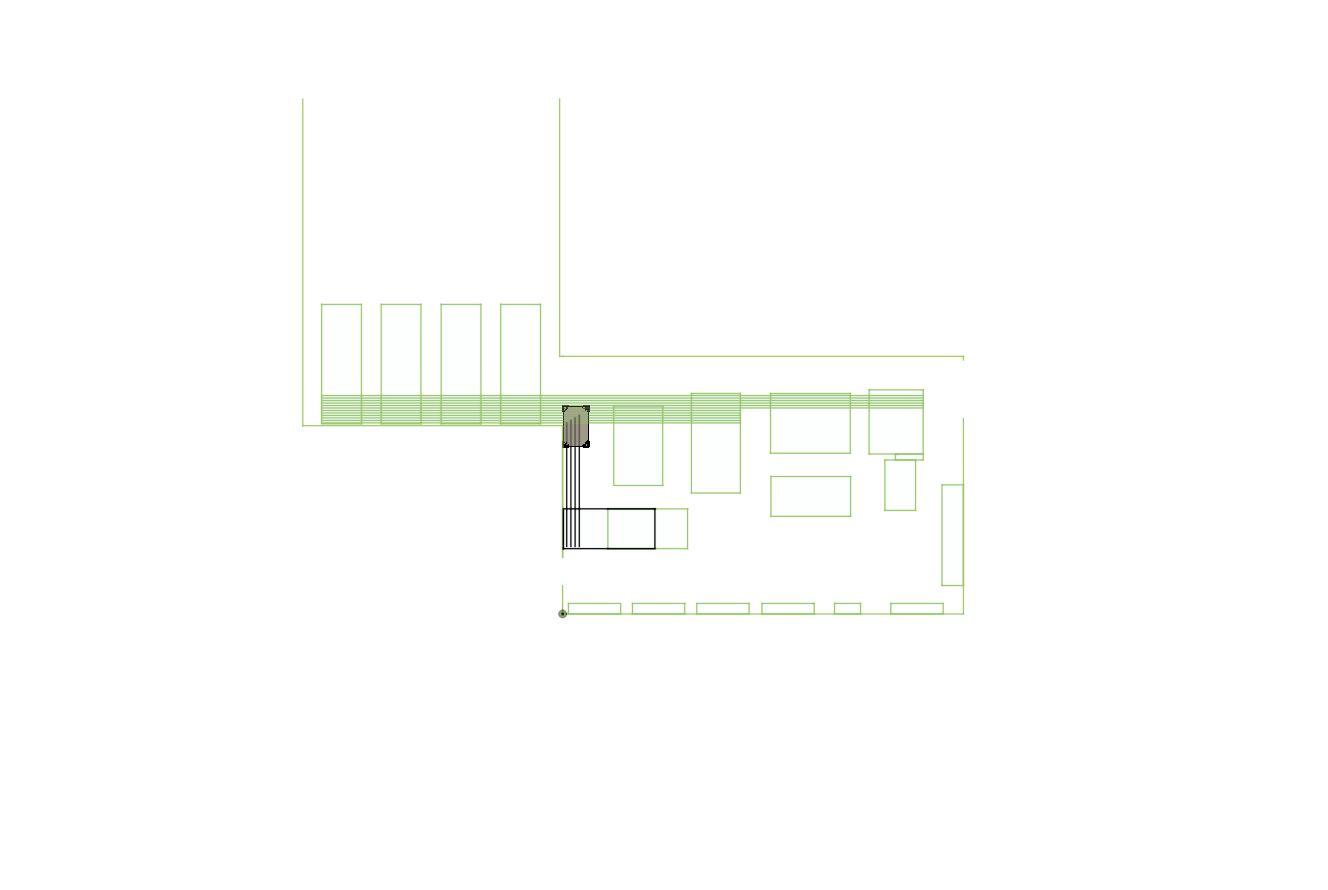
MIRX
MYSTIC
SILMARIL
SPICA
CHARIOT
PAVO
SPICA
VIS BEAMS
METROLOGY
STS/STST
BEAM SAMPLERS
BEAM SAMPLERS
BEAM SAMPLERS


Lanthermann et al. 2022
SILMARIL
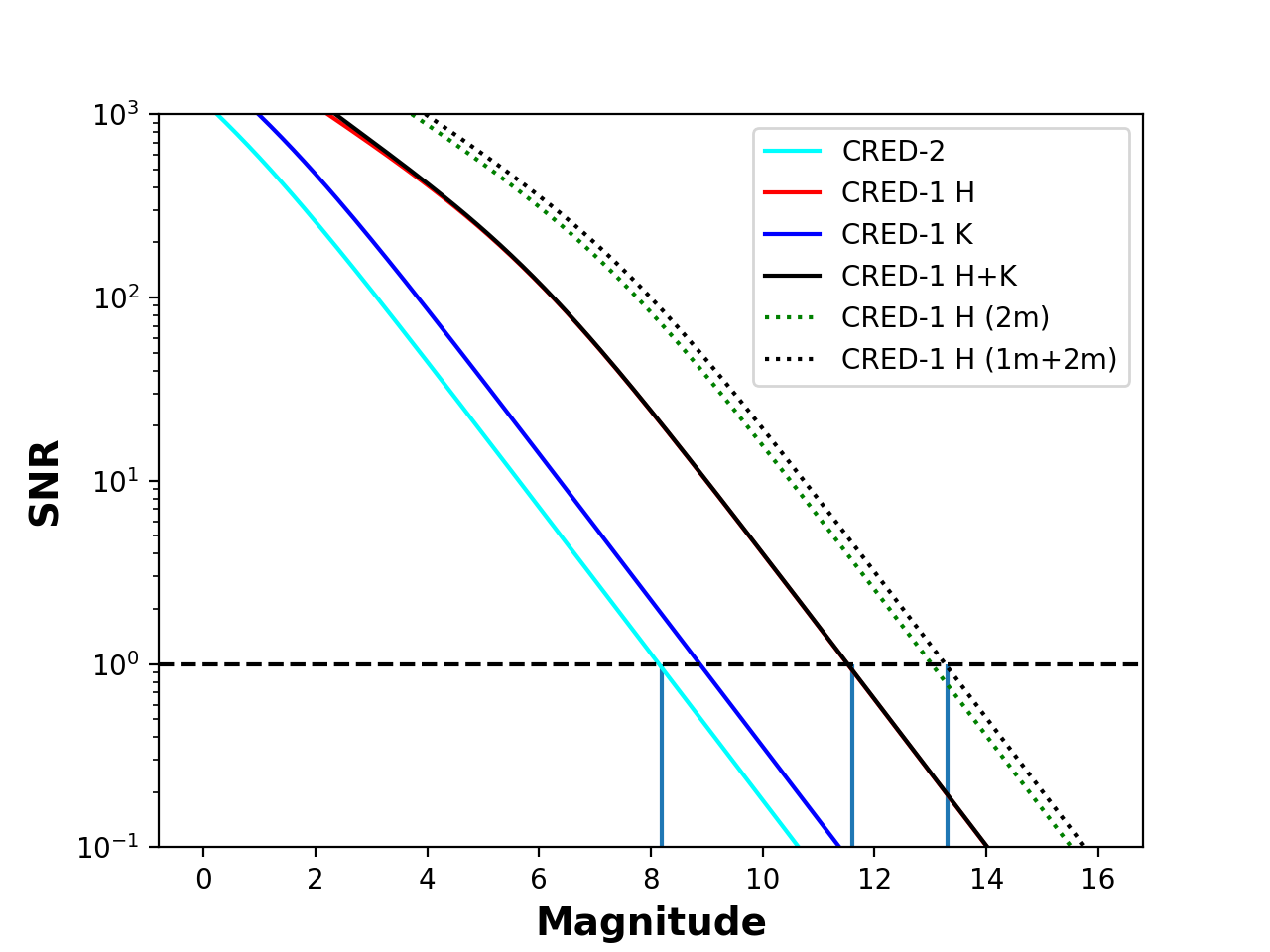


MIRCX
MIRC-X disperses light across several spectral channels and operates in the J and H-bands. MYSTIC operates in the K-band. MIRC-X/MYSTIC can be used simultaneously to create images of stellar surfaces and circumstellar disks. The precision closure phases are well suited to detecting faint binary companions.
Three spectral modes are currently available in the H-band: prism R=50 (8 spectral channels), prism R=102, and grism R=190. A higher resolution grism with R=1170 is available (with approval)



STS and STST
Anugu 2020
MYSTIC
MYSTIC, the Michigan Young STar Imager at CHARA is a K-band, cryogenic, 6-beam combiner. All-in-One 6T or high sensitivity 4T gravity chip
A 4-telescope mode for MYSTIC using an integrated optics component designed for the VLTI-GRAVITY experiment is under development and will provide better sensitivity for the faintest targets.
MYSTIC is available in the K-band using a low-resolution R=49 prism. Additional spectra modes (prism R=22, grism R=278, grism R=981, grism R=1724)
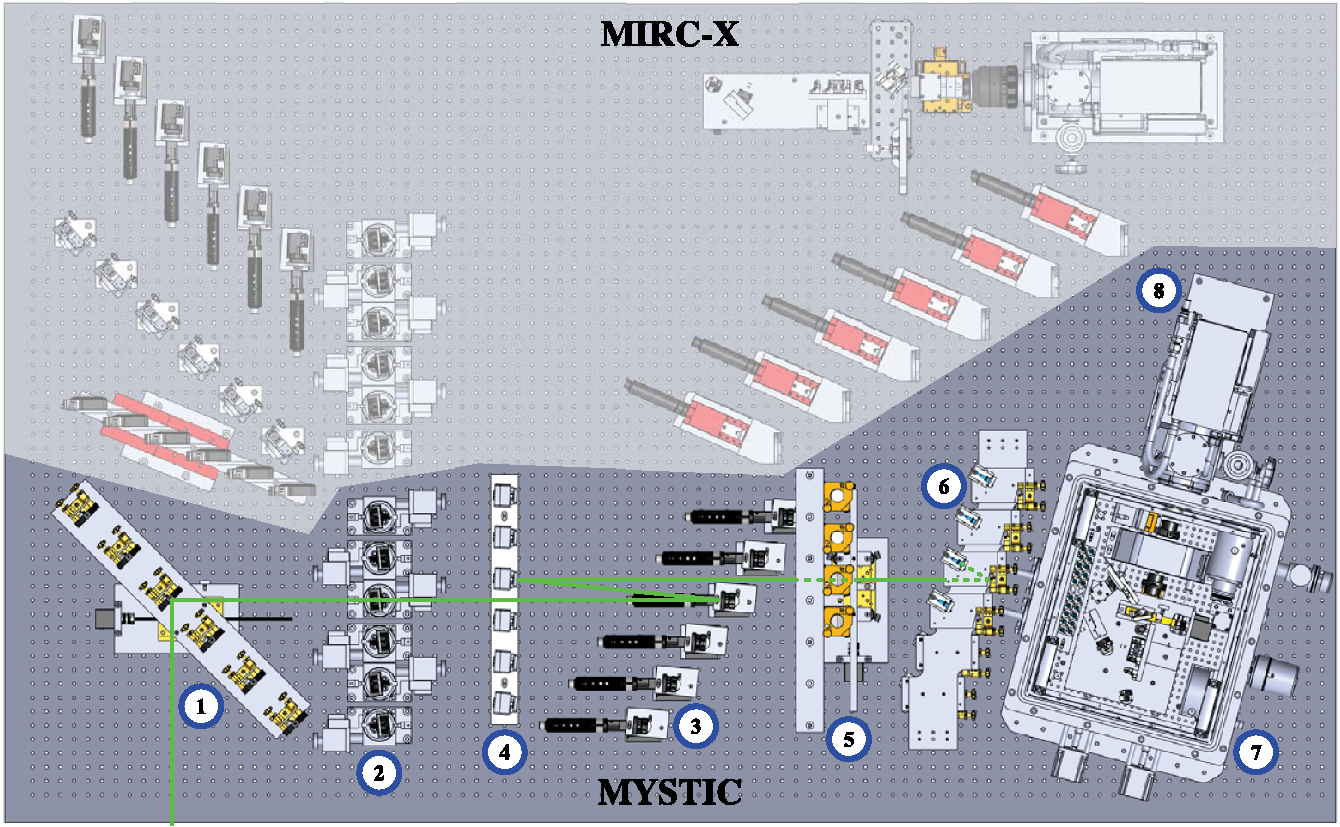
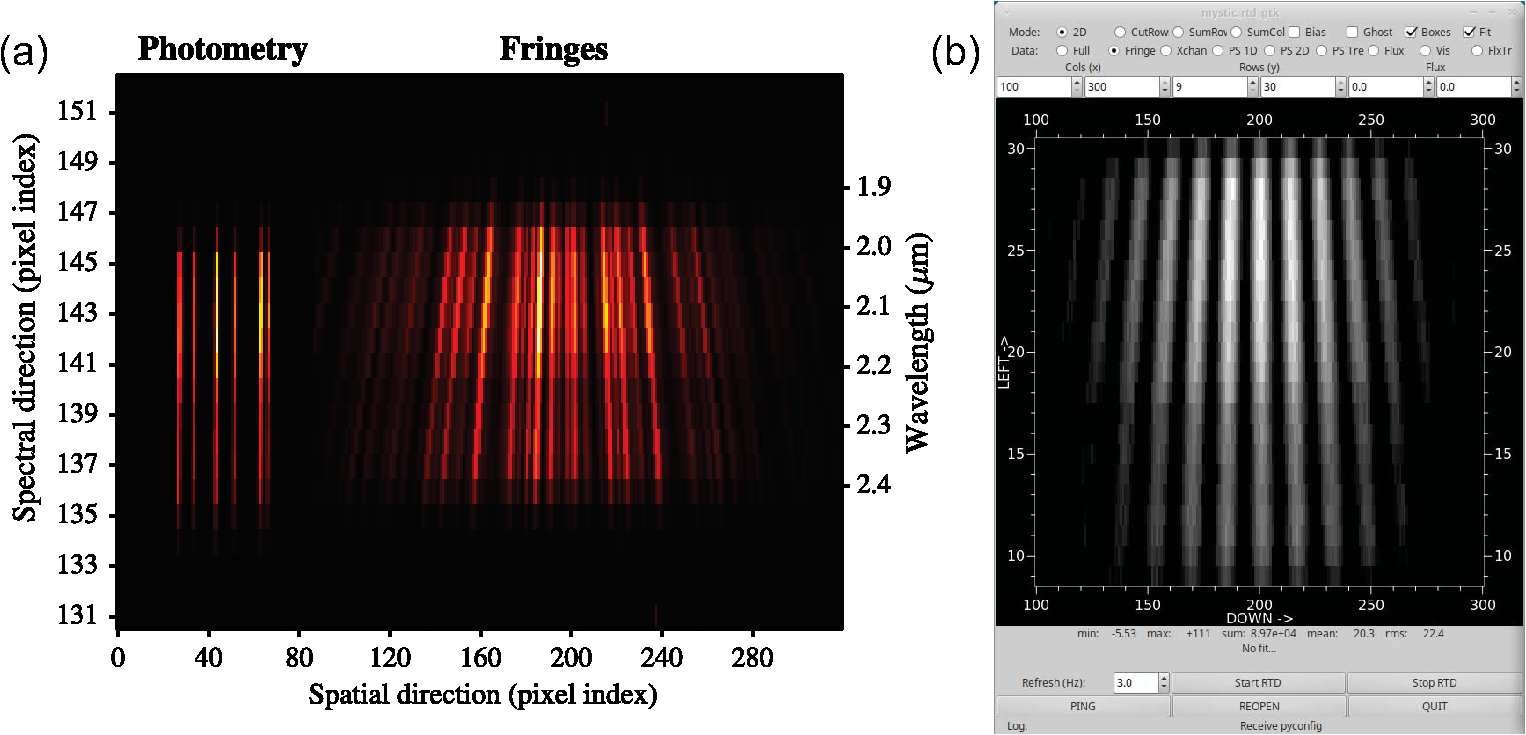
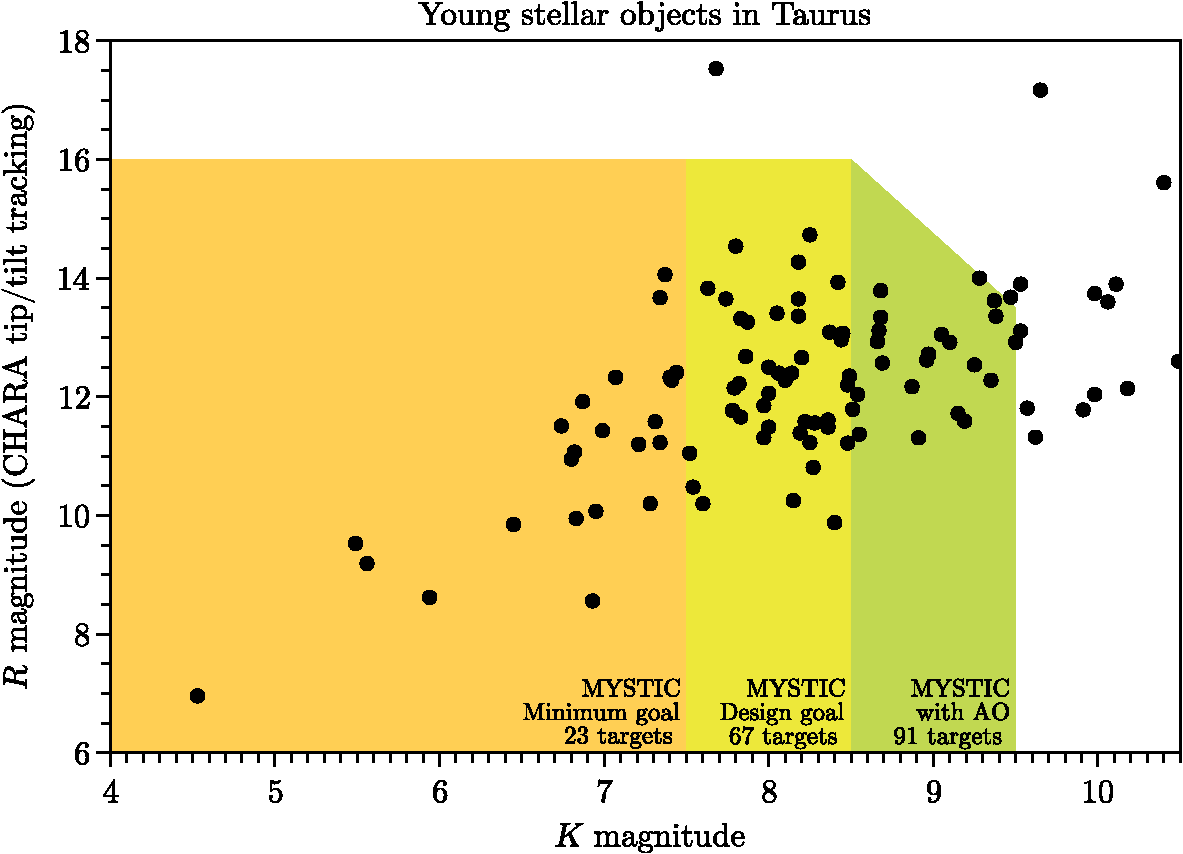
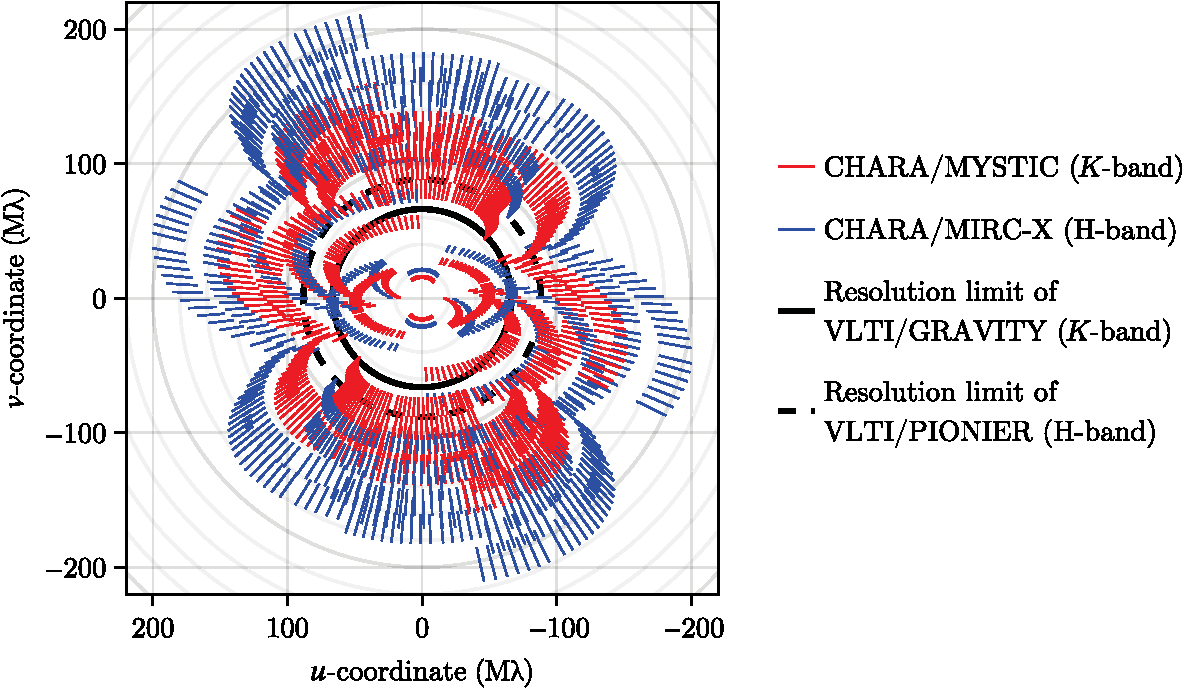
Setterholm et al. 2023

Pannetier et al. 2021
SPICA
(Stellar Parameters and Imaging with a Cophased Array)

SPICA-FT H-band 6-beam ABCD combiner by VLC Photonics, inspired by GRAVITY
low-resolution mode uses MIRC-X for fringe-tracking
The goal of the SPICA project is to provide a large and homogeneous set of stellar parameters across the HR-diagram. The survey aims to measure the angular diameters of 1000 stars.
Low-resolution spectrograph for measuring precise angular diameters (R=150, 50 channels over 650–950 nm).
For a sub-sample of bright stars, medium (R=4300) and high (R=13,200) spectral resolution modes will be available for spectral imaging of stellar surfaces and environments and kinematic studies.

spectrograph
CHARIOT
(CHARA Array Integrated Optics Testbed)
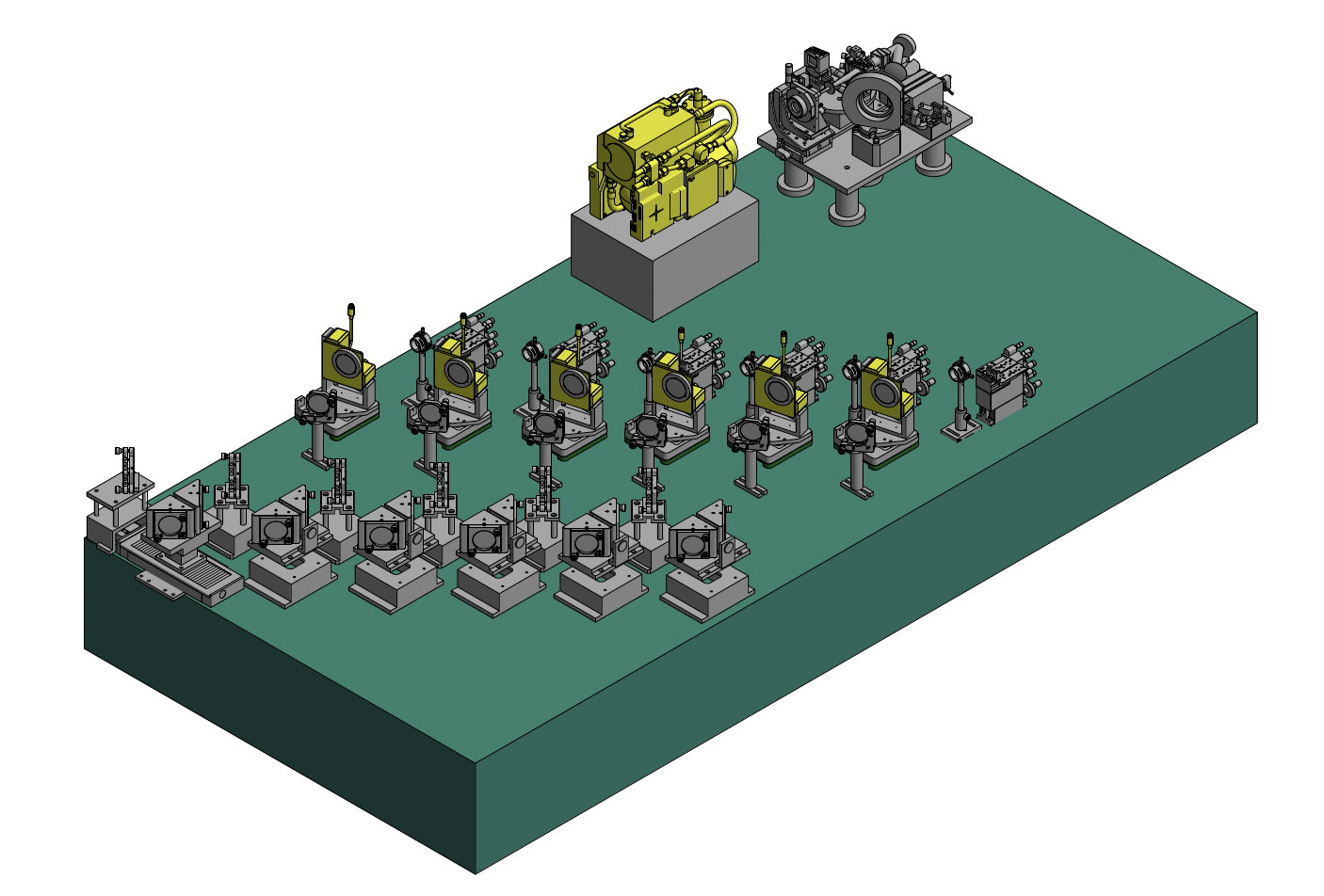
collaboration with Leibniz Institute for Astrophysics Potsdam (AIP)
ULI optics for JHK bands
(Siliprandi, Labadie, Madhav, Dinkelaker, Thompson, Benoît)
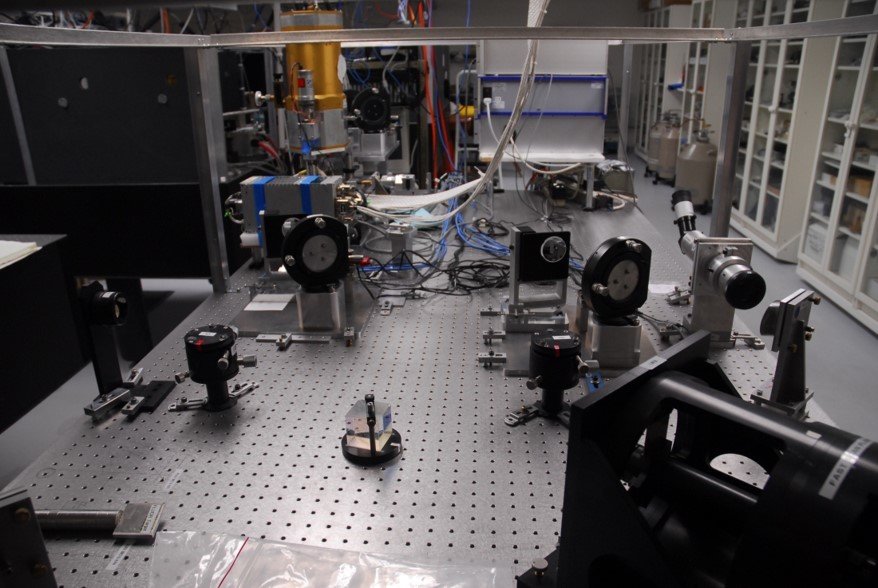


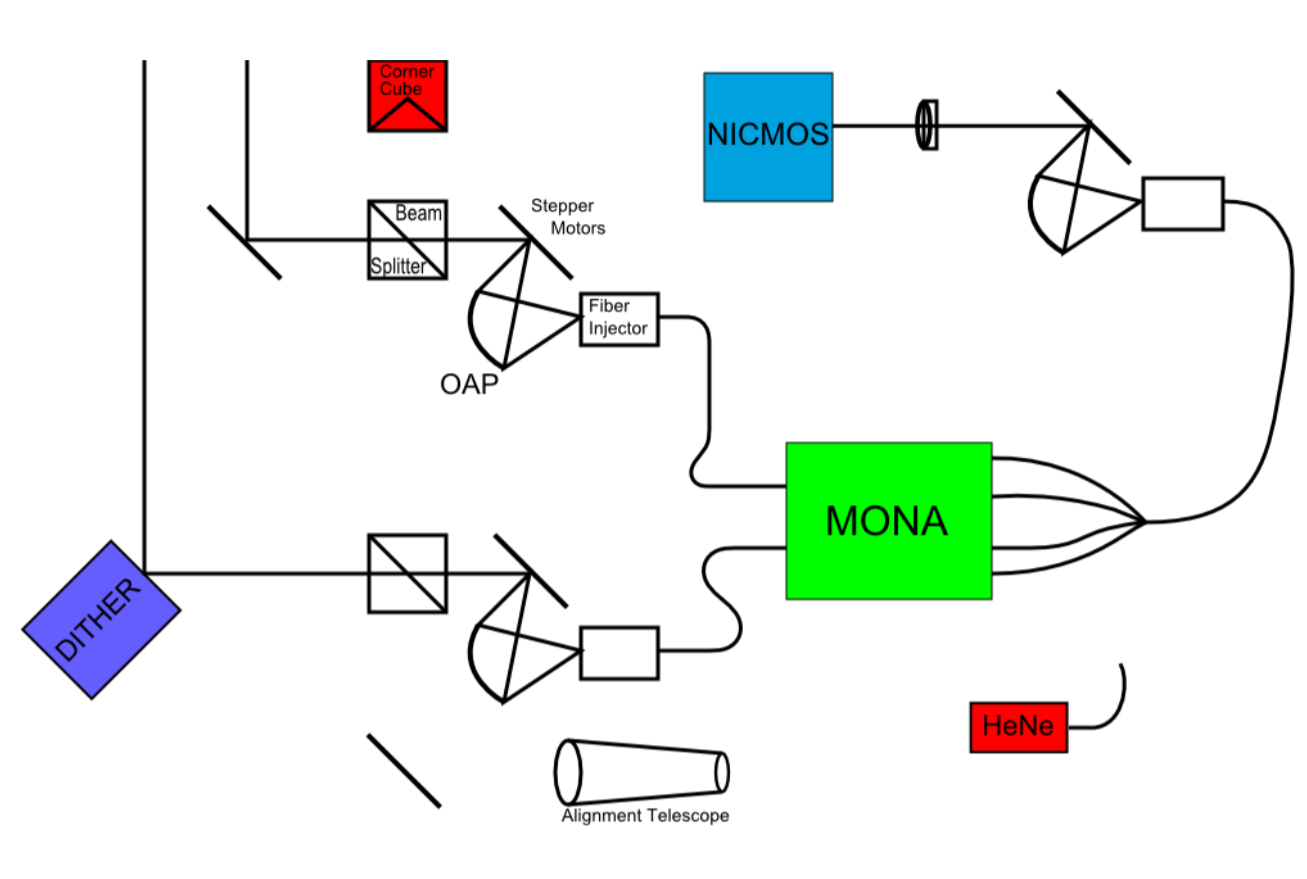
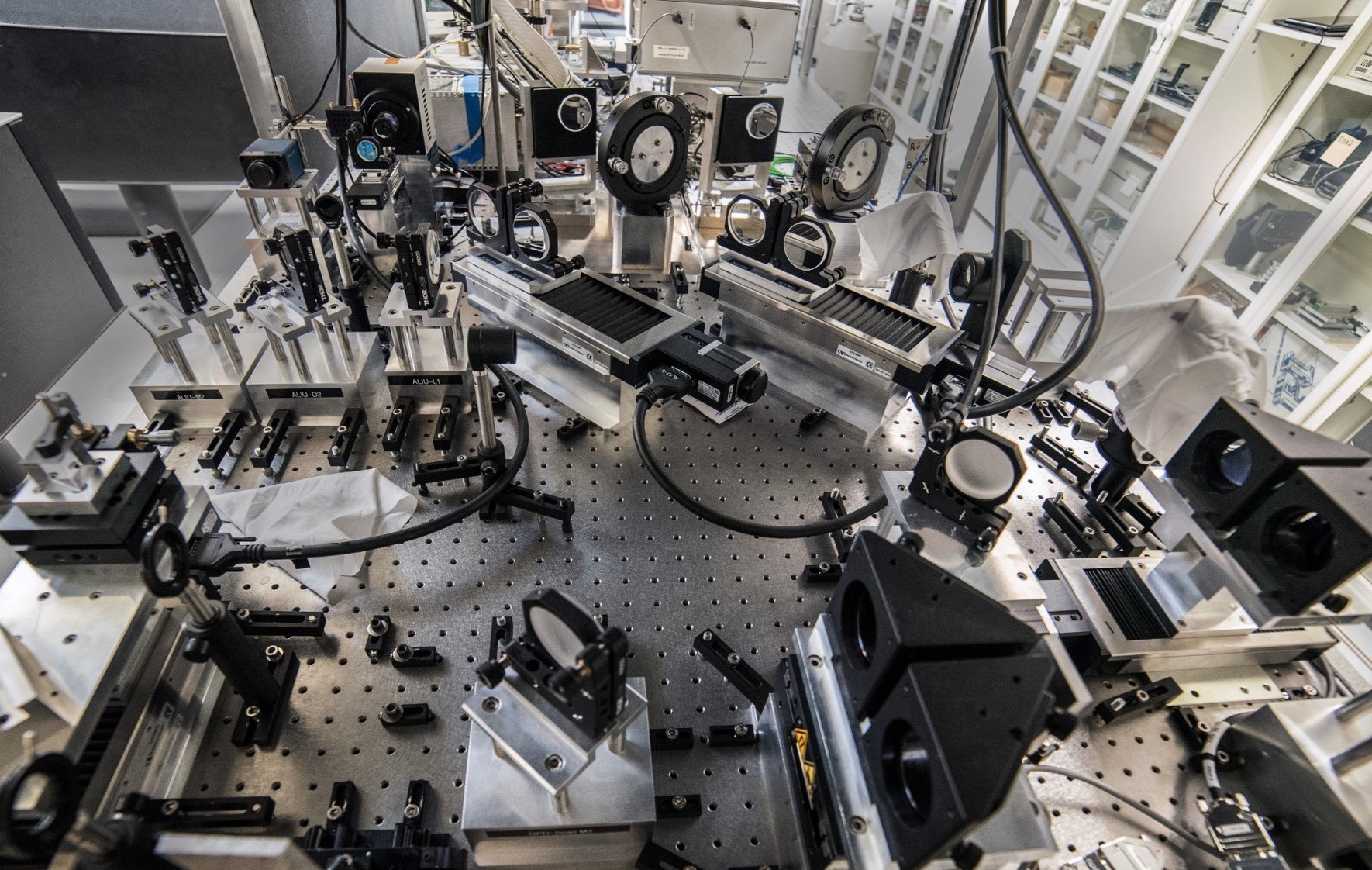






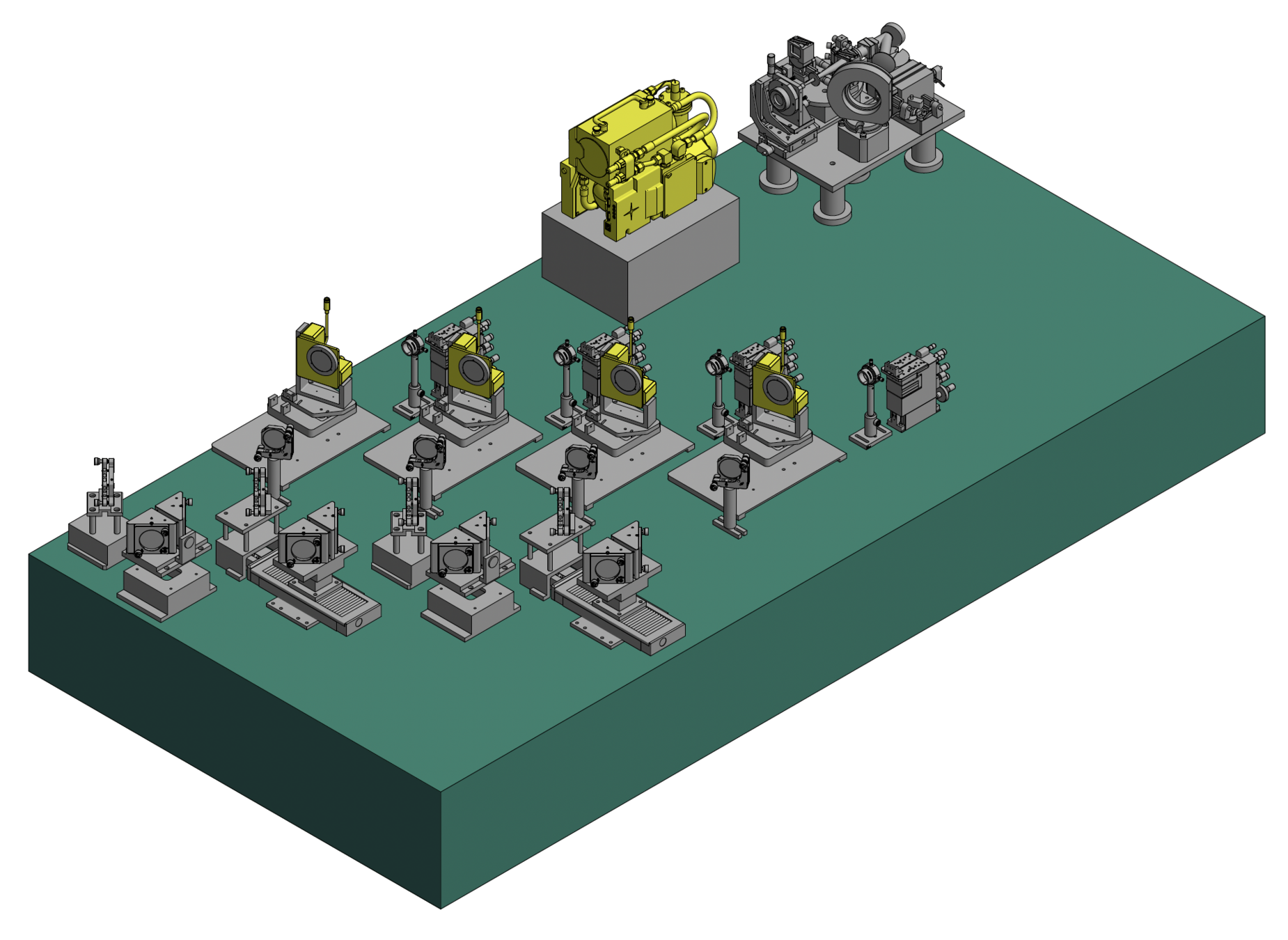
Currently have two injection stages, CRED1 arrives this year


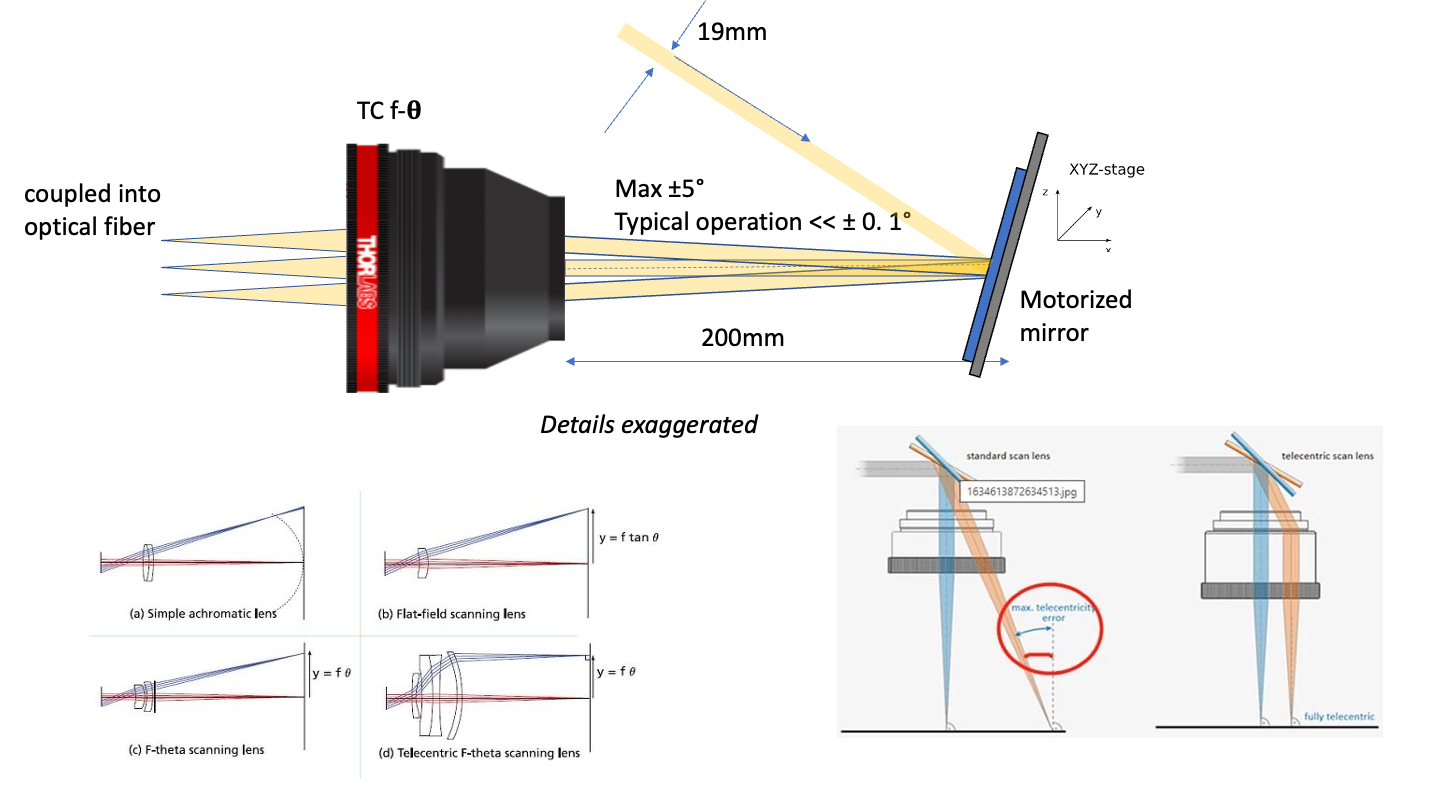


Coupling ratio evolutions of (input coupling waveguide) and R2(λ) in blue diamonds of a writing beam combiner characterized by coupling input light in the two external PT1 and PT2 inputs to obtain two experimental measurements of the 3 dB asymmetric directional coupler (a, b) and one for each photometric asymmetric Tap directional couplers, as Tap 1 (c) and Tap 2 (d)

Siliprandi et al. 2022
future plans
- Telescope dichroic replacement
- more automated alignment and tracking
- new/upgraded labAO system
- TEMA replacement
- new telescope drives, cylinder drives
- fibers to all telescopes (PM fused silica, 1550nm H-band 1st, 1350 nm – 1470 nm metrology)
- nuller "Achromatic photonic tricouplers for application in nulling interferometry" - Martinod et al. 2021
- W5/Channel 13 site (1100m)
- 0.16 mas at H, 65 μas at R
- double-pass delay (90m tracking delay)
-
Narcissus Mirror for SILMARIL
- The Michelson Array
- 2m central telescope?
-
up to 300 nights over three years of open access time via (NOIRLab).
-
Snapshot Imaging Mode to encourage new investigations.


science drivers
- multiple star systems
- time domain astronomy
- YSOs/planetary formation
- evolved stars
- starspots/surface imaging
- exozodis
- AGN
- HWO/PLATO
- exoplanet hosts
There are some 250 known exoplanets with host stars accessible to CHARA (Dec>-30 deg, V < 7). The new baselines will enable resolution of solar-like stars out to about 70pc in H-band. Numerical simulations of the transiting hot-Jupiter in HD189773 indicate that the shape of the silhouette of the planet can be measured in long baseline observations made during transits.
The Gaia orbits give the center-of-light motion of unresolved binaries, and a single resolved CHARA observation is sufficient to determine the full orbit and masses. High angular resolution observations also reveal how interacting stars are transformed by mass exchange.

NGC 4151
Early results from CHARA already show that the innermost dusty region in NGC 4151 is aligned perpendicularly to the jet axis.
-
Explore the apparent variability of known exozodis
- long-term monitoring
- clues to source and formation of the dust
-
Expand strong exozodi sample
- leveraging LBTI and prior surveys
- from ~100 \(\rightarrow\) ~1000 objects
- Use spectral dispersion to resolve the thermal/scattered dilemma
- Risk mitigation for coronagraphy/starshade missions
-
Target selection and characterization for mid/large missions (HWO, Plato, etc)
- exozodis likely to be dominant noise source
- Precision diameters and fundamental astrophysics
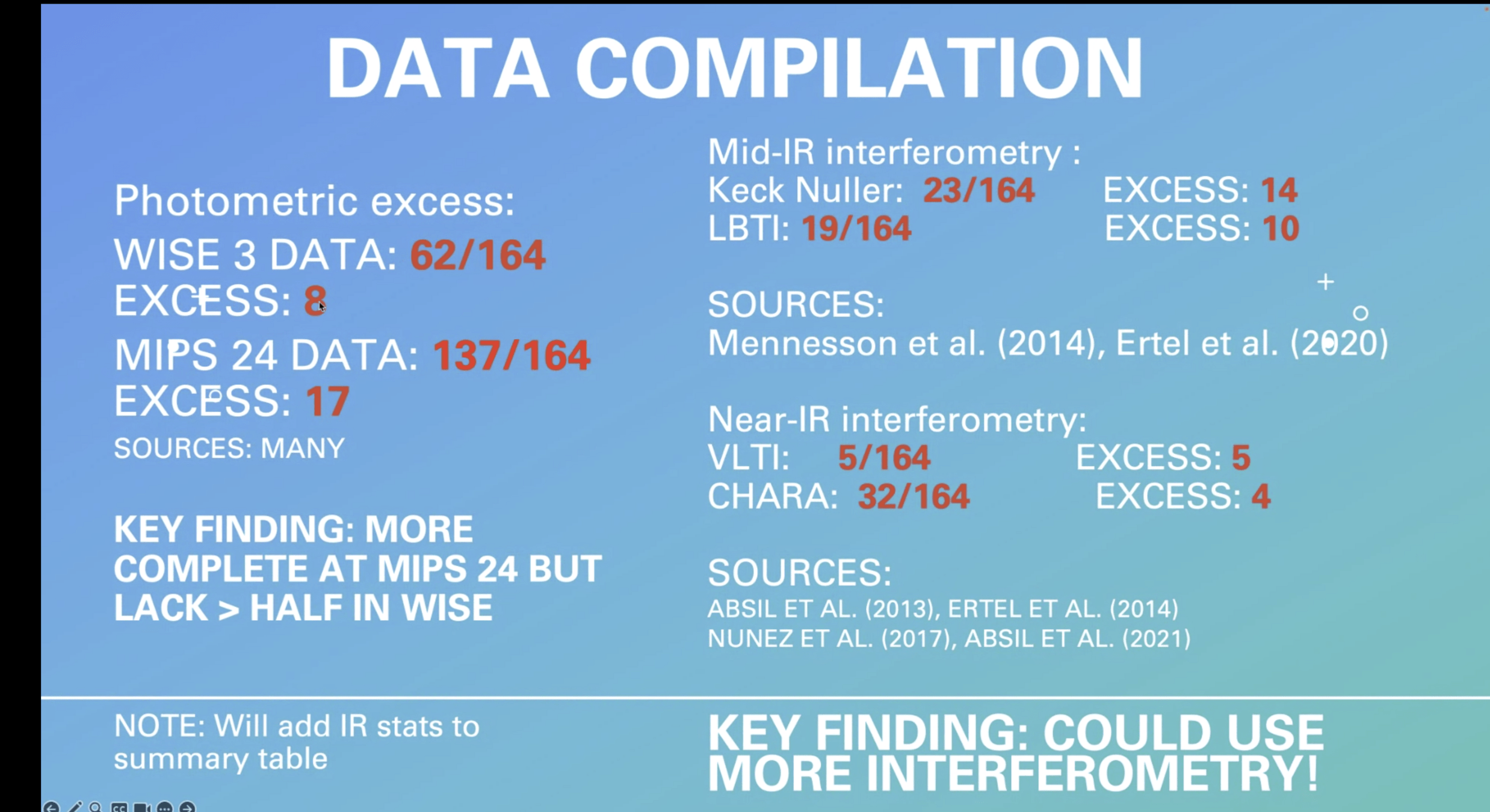
following slides stolen from EXOPAG 23:
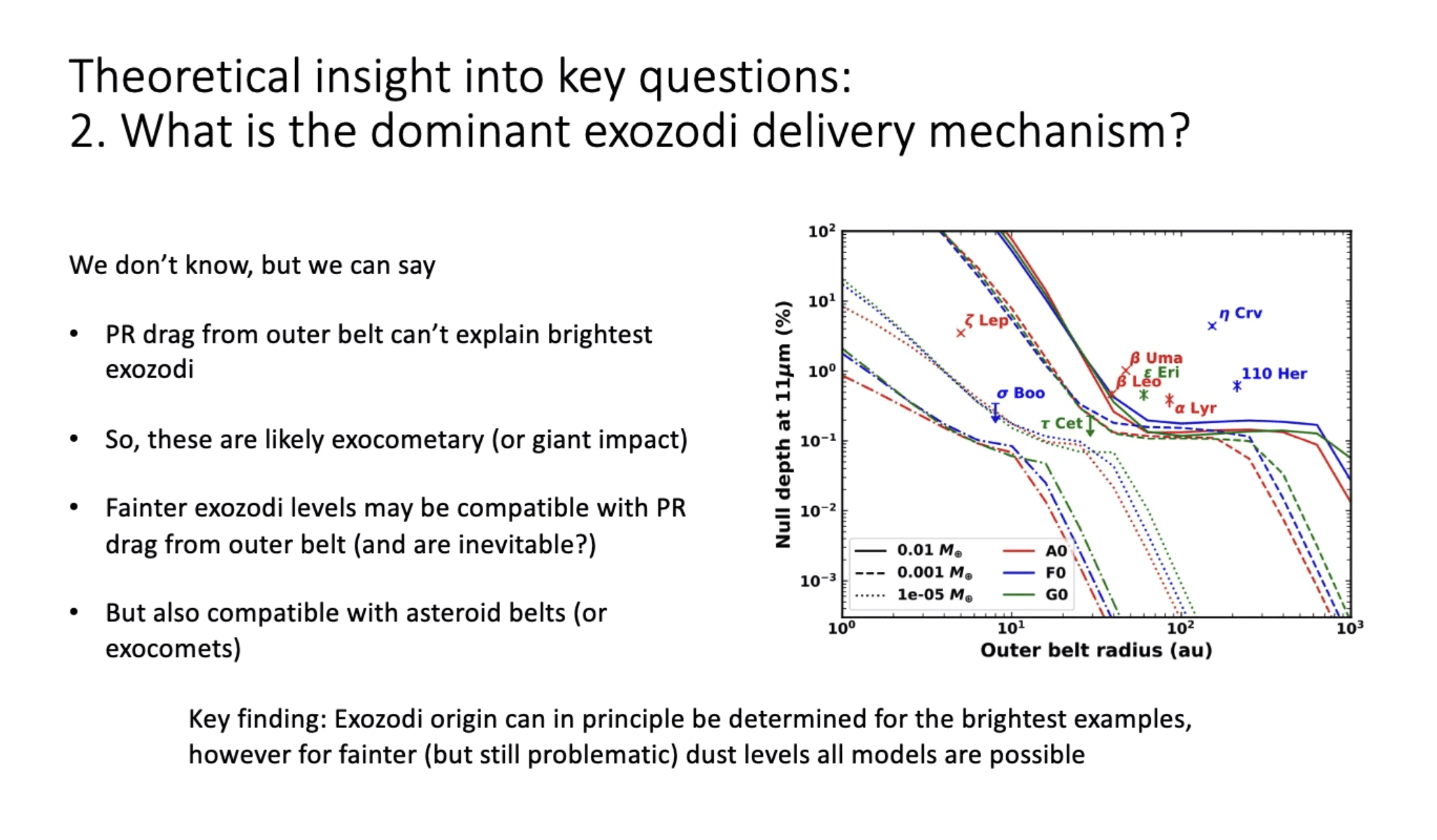
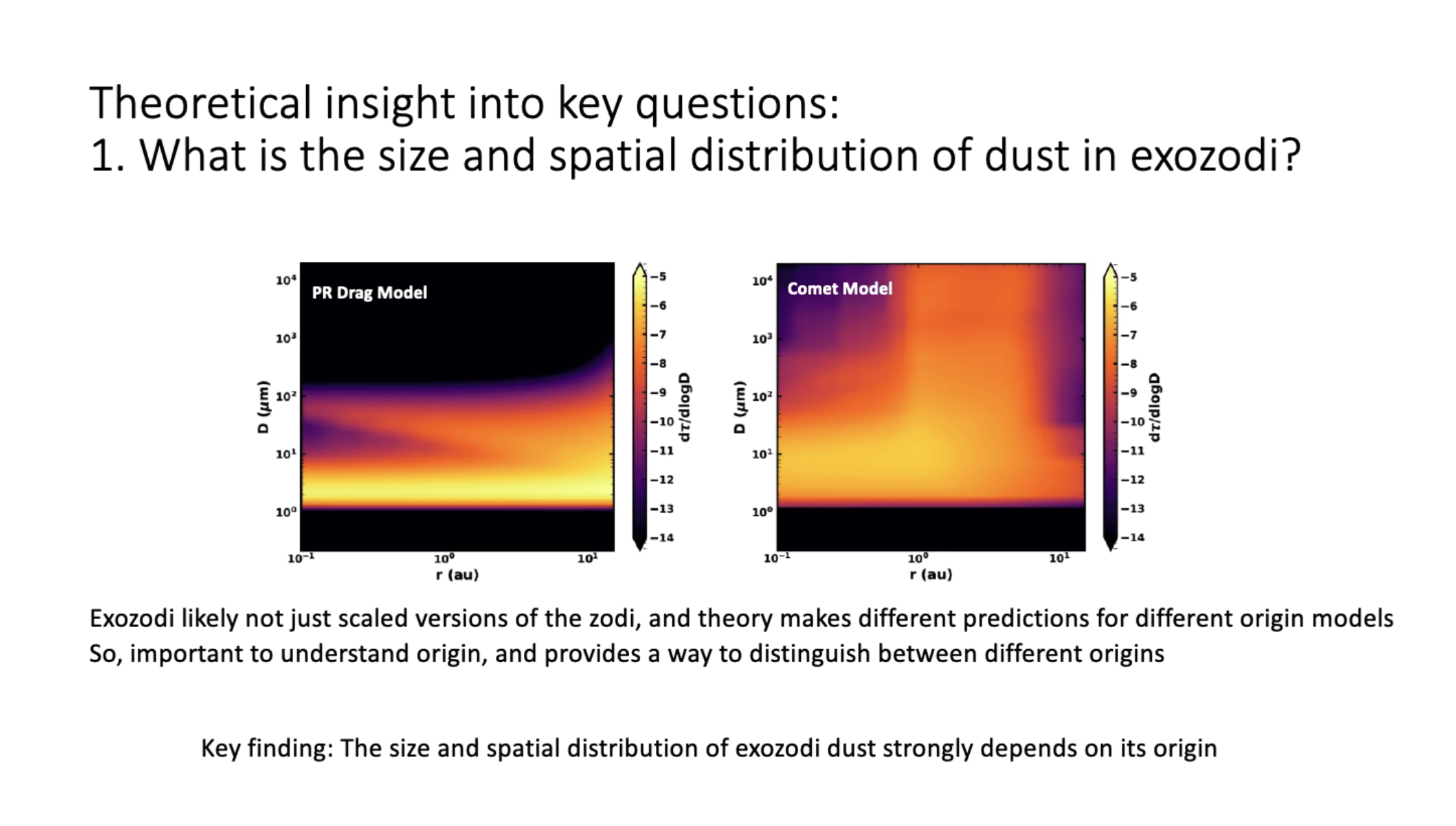
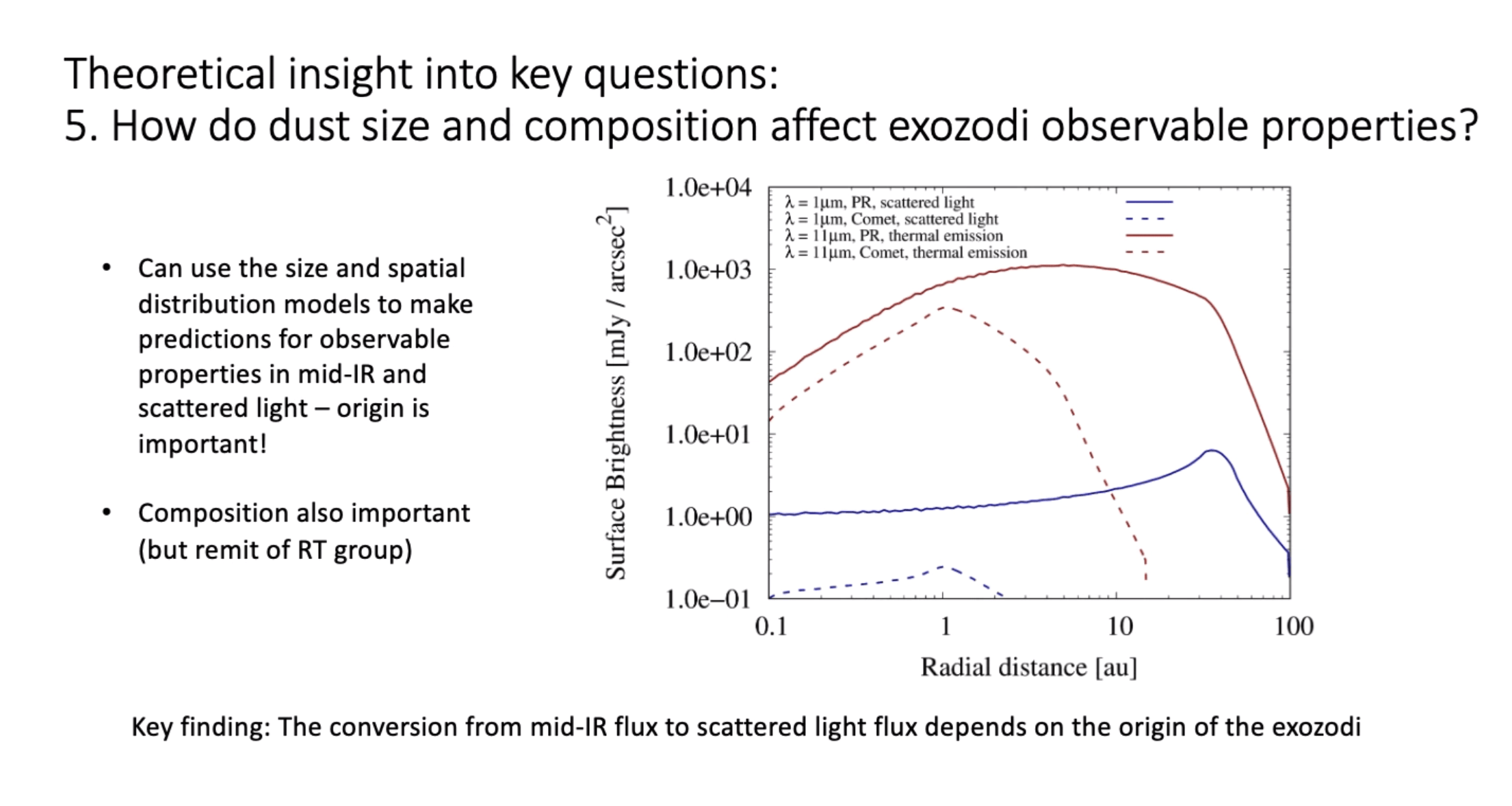
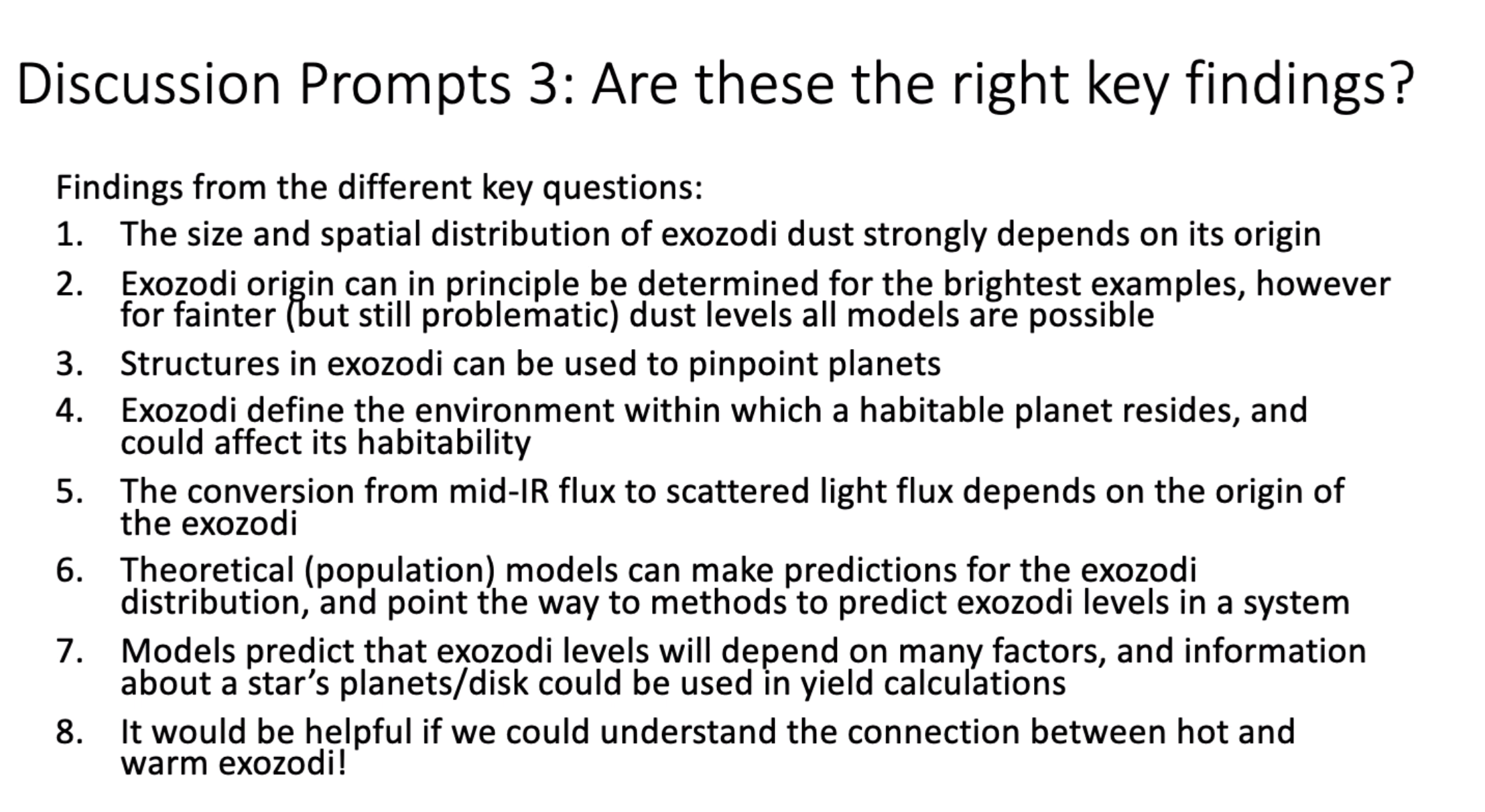
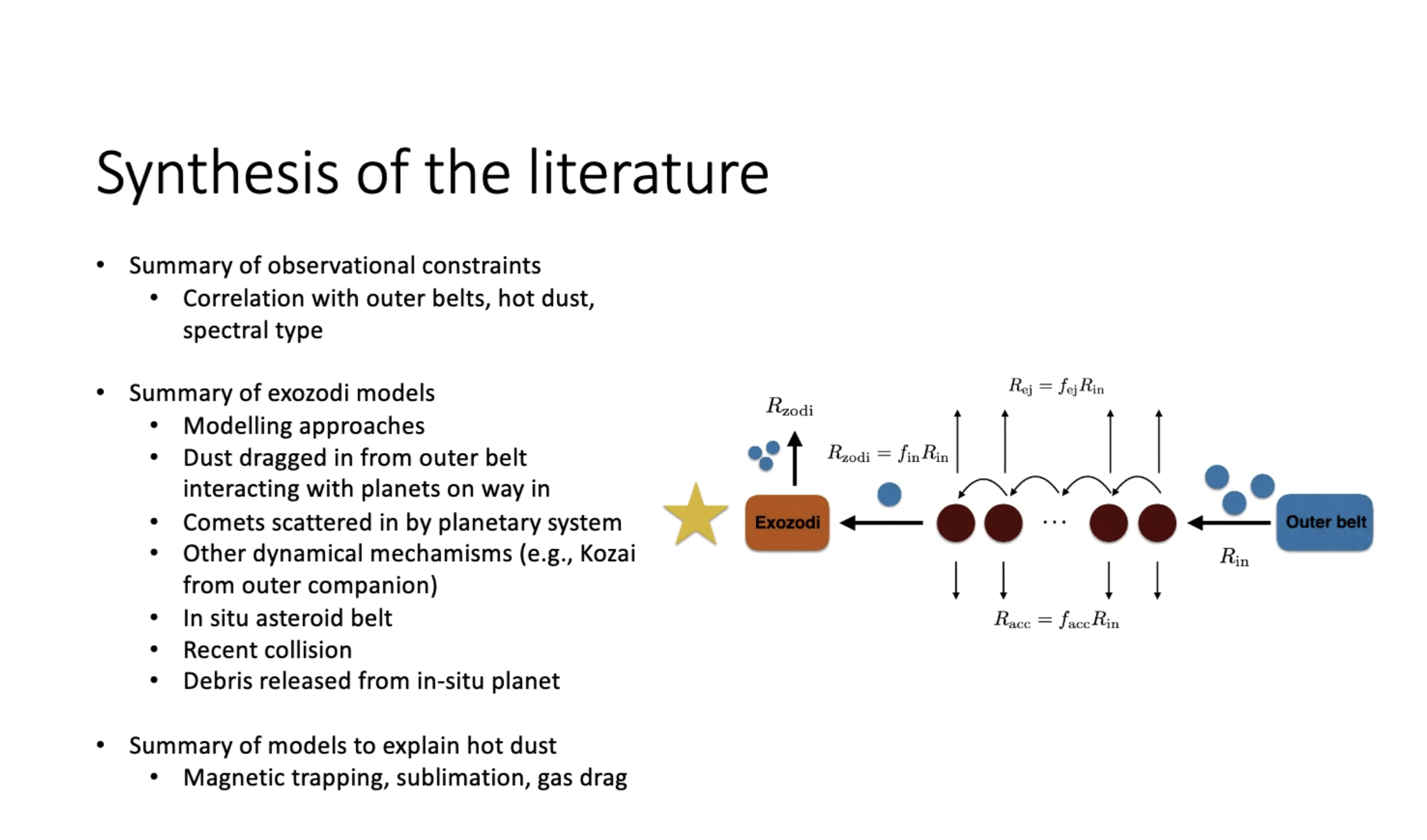
-
Planewave:
- 2-3 yrs until a 2 meter
- $2.5 million ea
- > 2 magnitudes deeper
-
move existing telescopes to CMAP sites?
- 1m outriggers?
- 6x2m + 4x1m array? 45 baselines!
-
JWST plenary talk:
- “imaging interferometers are coming online”
-
How to get more hands at the Array/instrumentation interest
- REU options
- Shadow-a-Scientist programs
- Collaborations/Partners
-
Funding
- NSF wants astronomers to compete for MSIPs with MSRI funds
- Workshops on centers of excellence, partnerships with industry (TIP)
- Could chara get solar panel funding?
- Grow local and state politician interest/investment?
Some thoughts from AAS 241
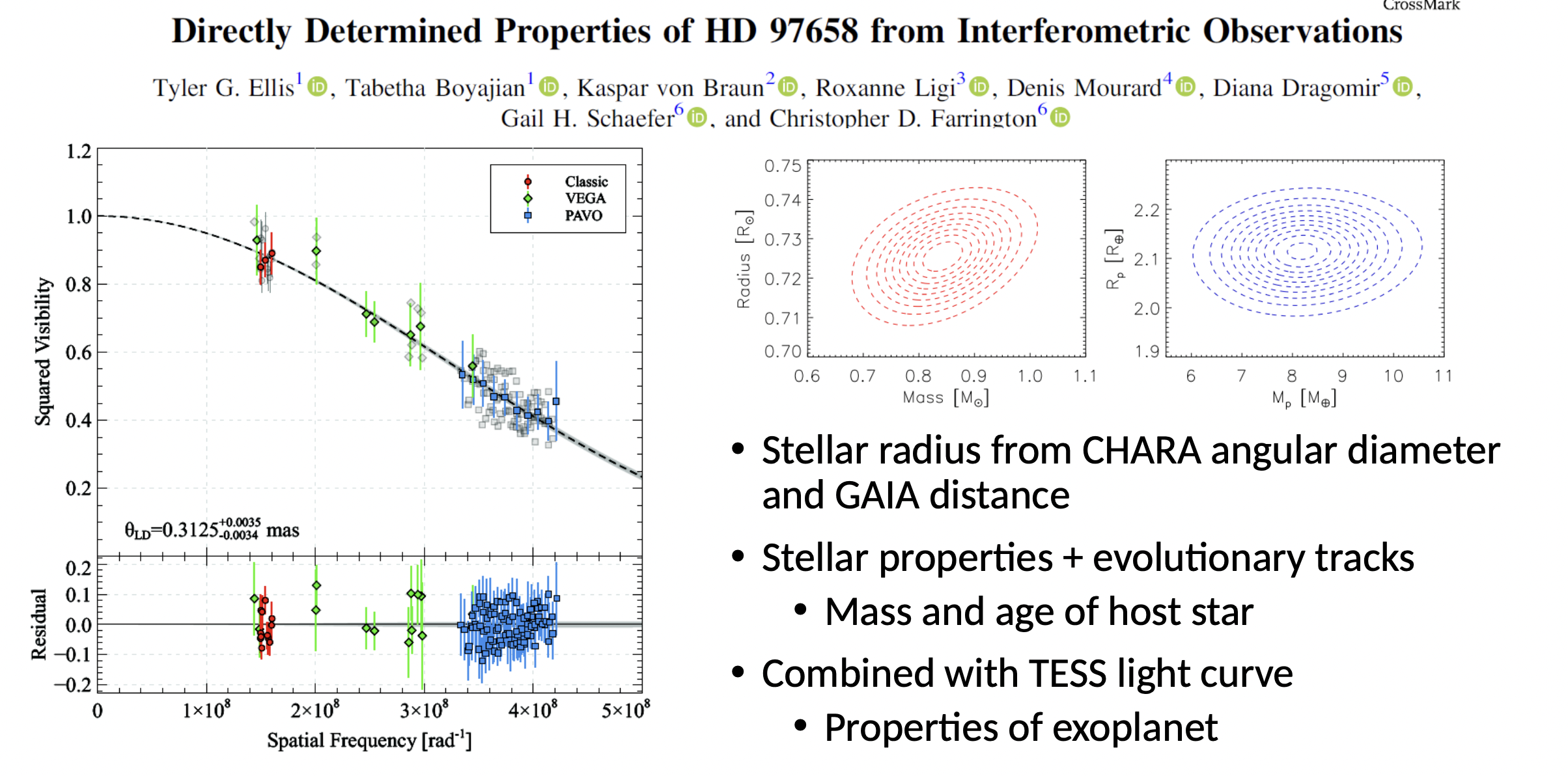
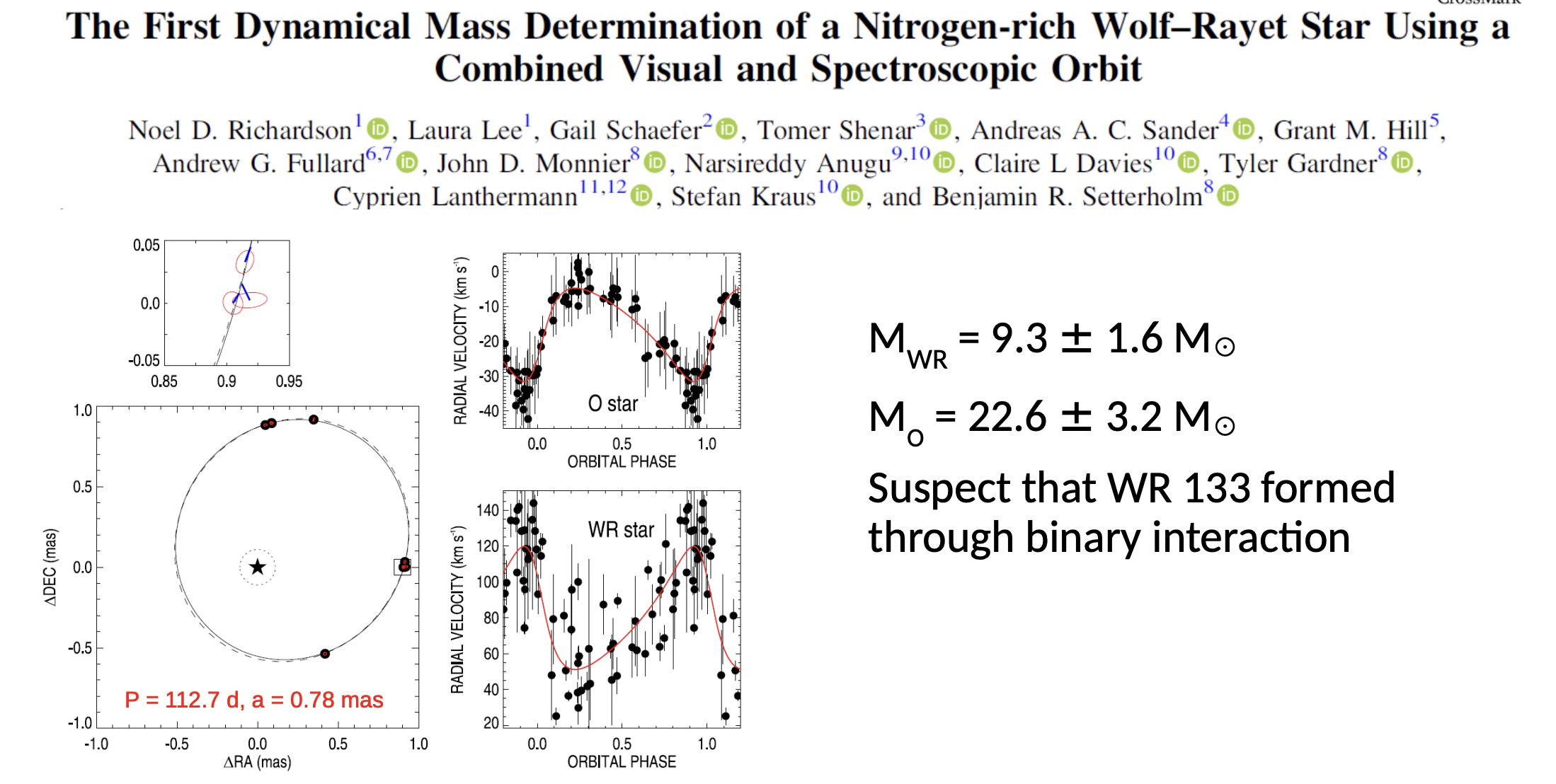



Be stars

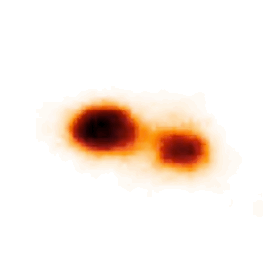
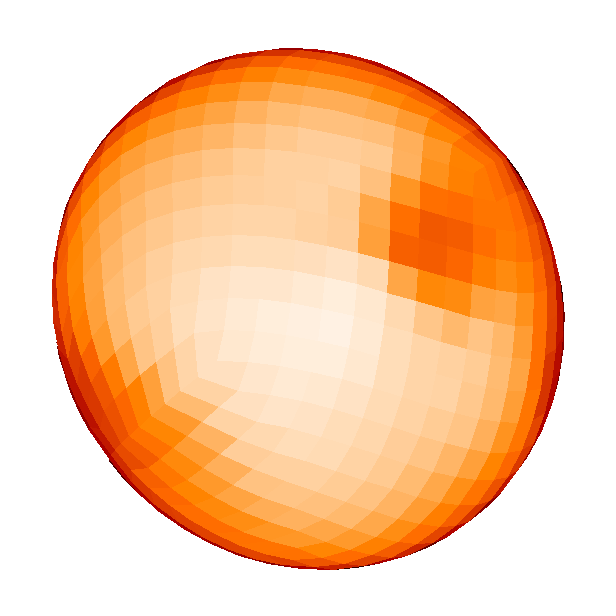
Spotted magnetic stars
Interacting binaries

Expansion curve of Nova Del 2013.


Regulus -- Che et al. 2011, ApJ, 732, 68
Rasalhague -- Zhao et al. 2009, ApJ, 701, 209
Altair -- Monnier et al. 2007, Science, 317, 324
Alderamin -- Zhao et al. 2009, ApJ, 701, 209
Beta Cas -- Che et al. 2011, ApJ, 732, 68
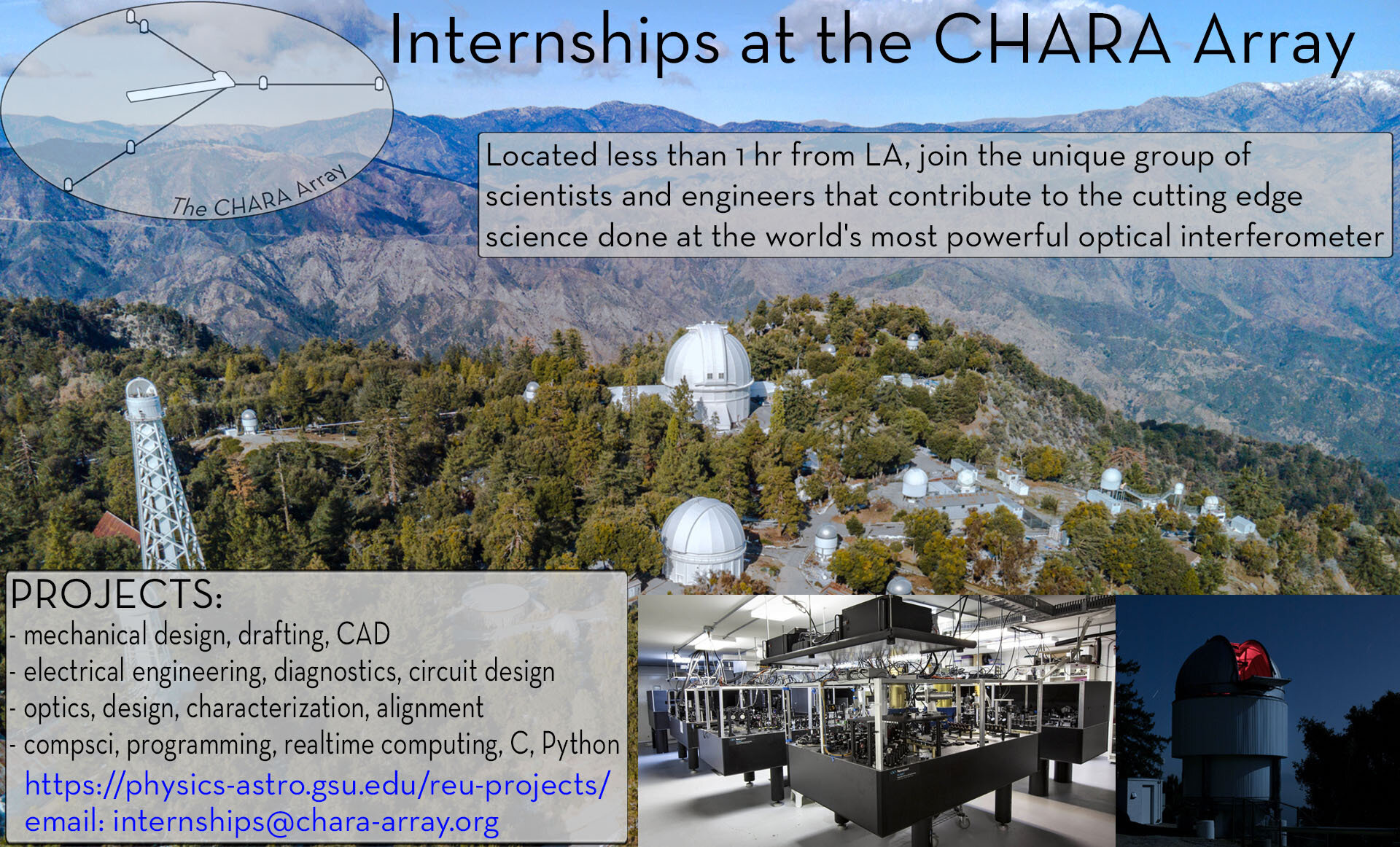
References
[1] Kelsall et al. 1998
[2] Beichman et al. 2006 ApJ 652
[3] Roberge et al. 2012
[4] Defrère et al. Proc. SPIE 2012
[5] Stark et al. 2014
[6] Kennedy & Wyatt 2013
[7] Wyatt et al. 1999
[8] Fajardo-Acosta et al. 2000
[9] Mannings & Barlow 1998
[10] Laureijs et al. 2002
[11] Lawler et al. 2009
[12] Wyatt et al. 2007 ApJ 658
[13] Defrère et al. 2015
[14] Mennesson et al. 2014
[15] Absil et al. 2013
[16] Ciardi et al. 2001
[17] di Folco et al. 2004
[18] Absil et al. 2006
[19] di Folco et al. 2007
[20] Absil et al. 2008b
[23] Defrère et al. 2011
[24] Mennesson et al. 2011a
[25] Mawet et al. 2011
[26] Lisse et al. 2012
[27] Weinberger et al. 2011
[28] Defrère et al. 2012a
[29] Lisse et al. 2013
[30] Ertel et al. 2014
[31] Marion et al. 2014
[32] Nuñez et al. 2017
[33] Kral et al. 2013
[34] Krivov et al. 2006
[35] Wyatt et al. 2007 ApJ 663
[36] Defrère et al. 2012 A&A 546
[37] Marshall et al. 2016
[38] van Lieshout et al. 2014 A&A 571
[39] Jackson et al. 2012
[40] Rieke et al. 2016
[41] Su et al. 2016
[42] Wyatt et al. 2008
[43] Su et al. 2013
[44] Lebreton et al. 2013
[45] Eiroa et al. 2016, A&A 594, Oct 2016
[46] Faramaz et al. 2016
[47] Ertel et al. 2018


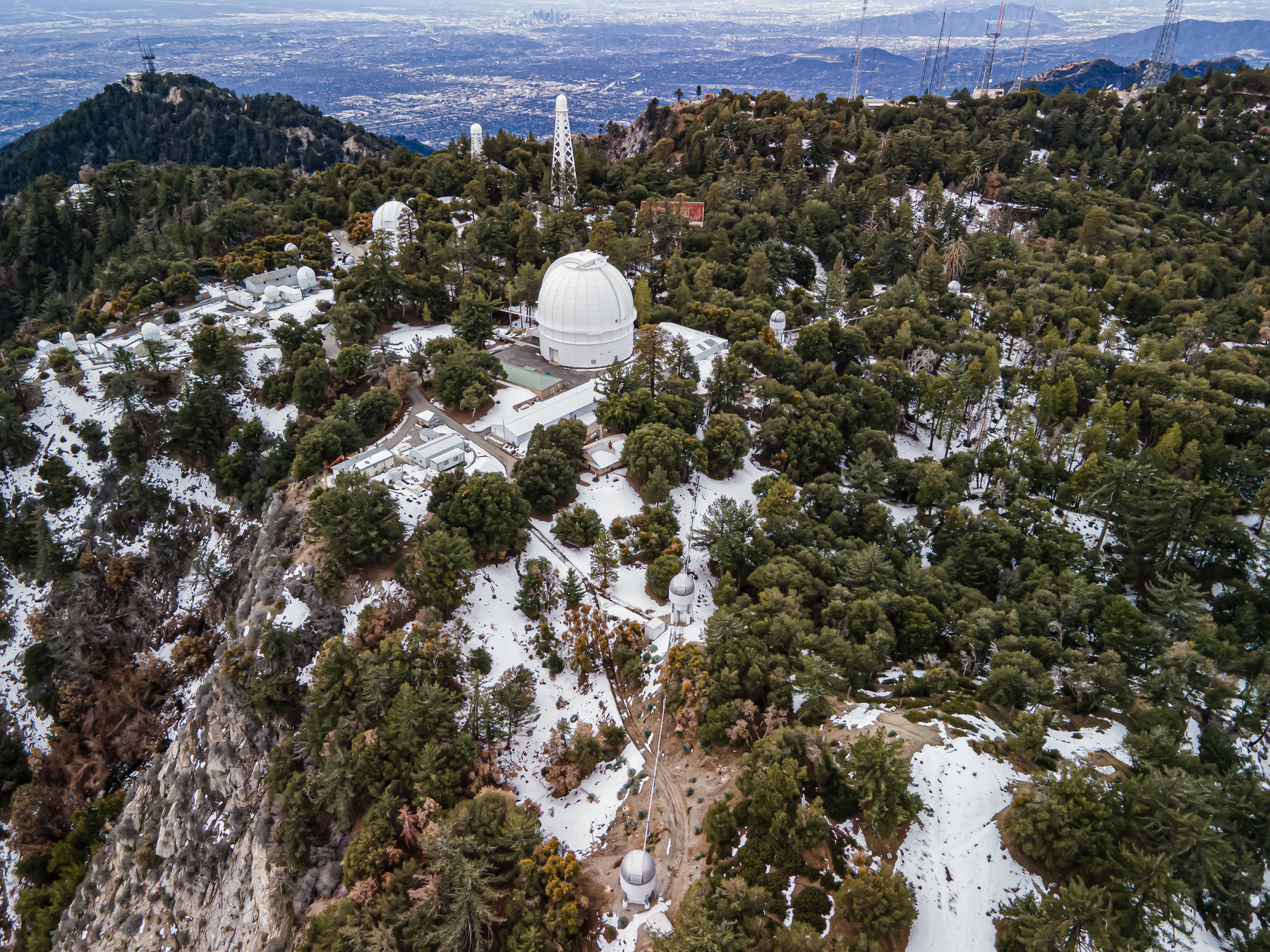



Copy of deck
By Nic Scott
Copy of deck
- 578



